










millingandgrain.com March 2024 In this issue: Milling and Grain . Volume 135 . Issue 3 . March 2024 Proud supporter of Download the Milling and Grain app to your smart phone YOUR GLOBAL PARTNER Volume 135 Issue 3 A revolution in yeast: Our visit to ICC Brazi - World Flour Day: Millers Unite for Global Giving Campaign - Nitrogen fumigation: The organic way for safe longterm storage of grain, pulses, and vegetables - Energy-efficient and foodsafe grain moistening Take part in one of our conferences at the event Meet the Milling and Grain Team on stand i044 at:
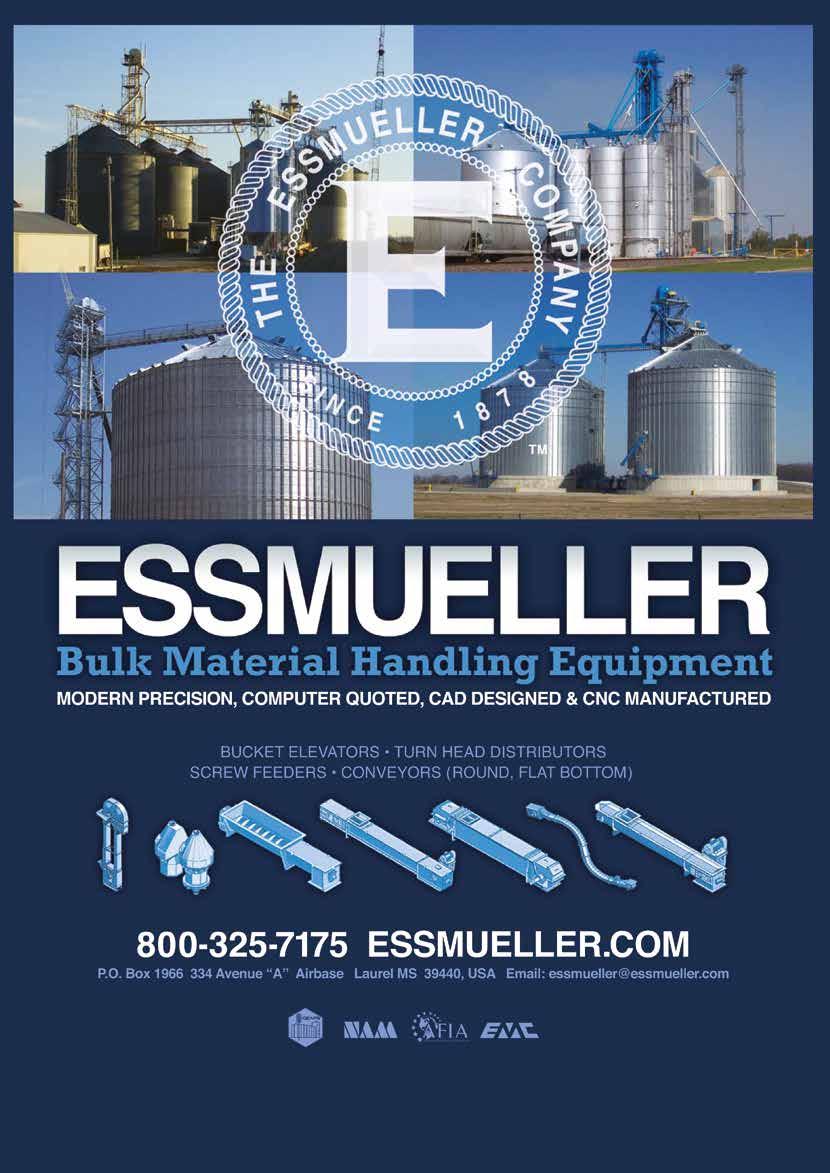
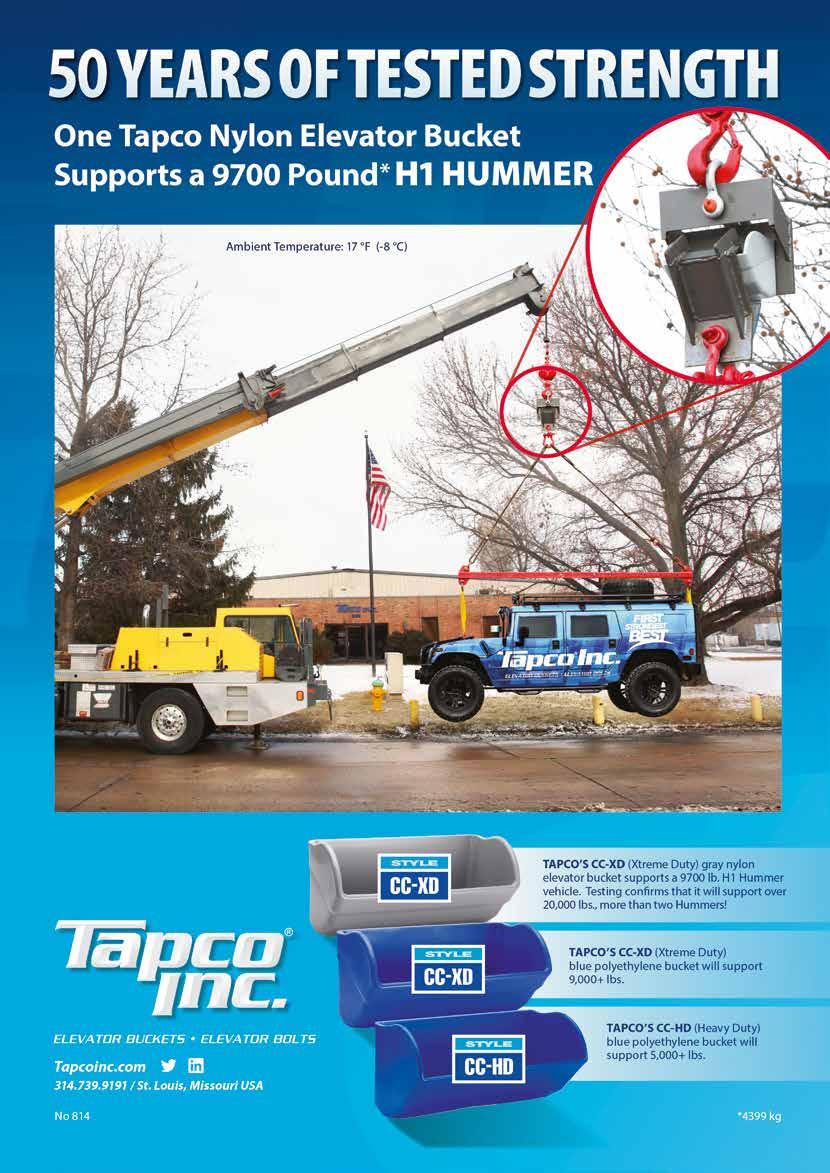
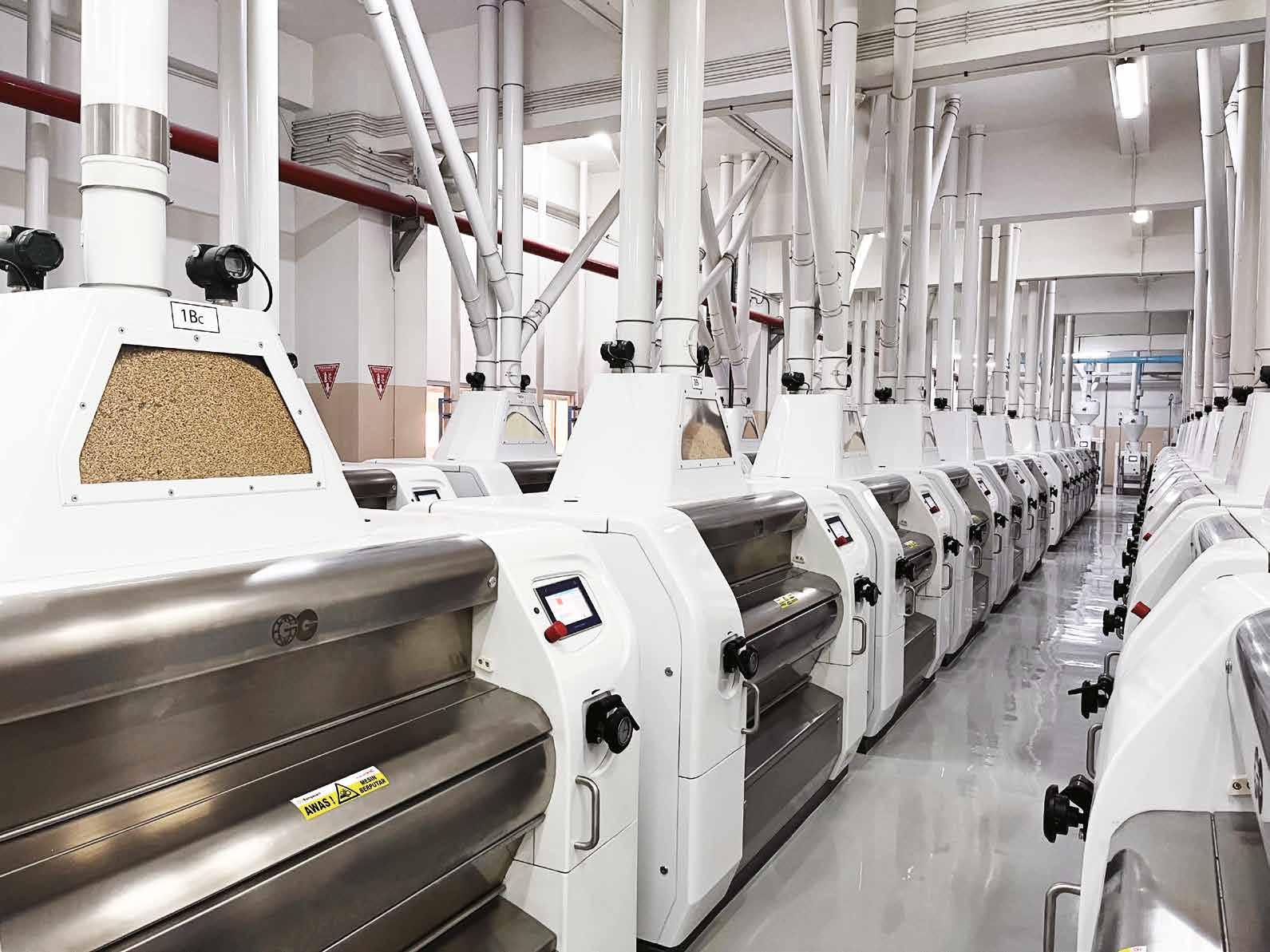

WHAT WE DO Designing FLOUR MILLING Manufacturing Turnkey project Service +86 371 68631308 info@g-grain.com www.g-grain.com SCAN ME FOR BROCHURE


Handle bulk with efficiency and reliability
Pneumatic and mechanical ship (un)loaders
Up to 2500 tph for loaders and up to 1200 tph for unloaders.
Low noise & no dust emission
Turnkey solutions for cereals, soy flour, fertilizer, pellets and more...
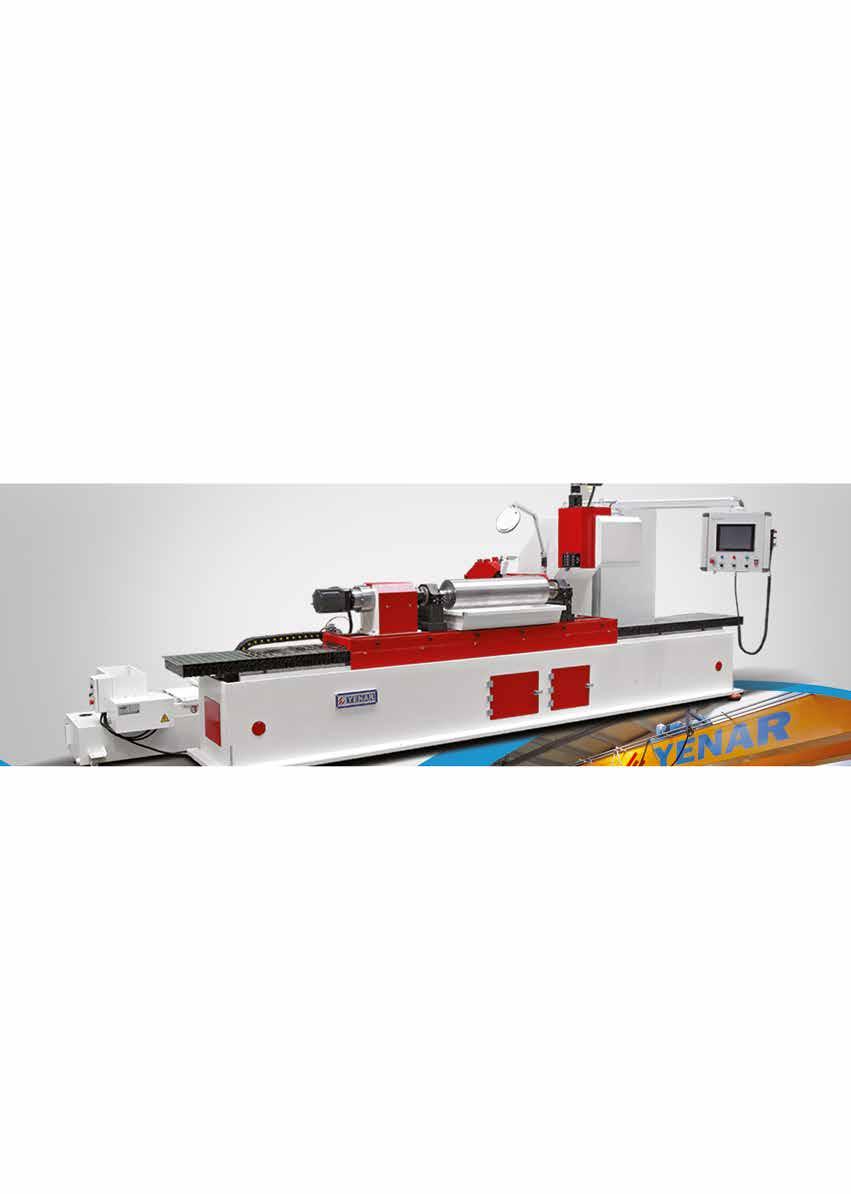
Perendale Publishers Ltd
7 St George’s Terrace
St James’ Square, Cheltenham, Glos, GL50 3PT, United Kingdom
Tel: +44 1242 267701
Publisher Roger Gilbert rogerg@perendale.co.uk
International Marketing Team
Darren Parris
Tel: +44 1242303792 darrenp@perendale.co.uk
Asia Marketing Team
Dante Feng
Tel: +886 227930286 dantef@perendale.com
Latin America Marketing Team
Cristina María Roldán Otero
Tel: +44 1242 267700 cristinaot@perendale.co.uk
Nigeria Marketing Team
Nathan Nwosu
Tel: +234 8132 478092 nathann@perendale.com
Egyptian Marketing Team
Mohamed Baromh
Tel: +20 100 358 3839 mohamedb@perendale.com
Turkey, Eurasia and Middle East Marketing Team
Mehmet Ugur Gürkaynak
Tel: +90 537 3646457 mehmetg@perendale.com
Editorial Manager
Joy (Jyothsna) Nelloolichalil joyn@perendale.co.uk
Editorial Assistant
Shannon Parsons shannonp@perendale.co.uk
Niamh Cassidy niamhc@perendale.co.uk
Social Media Journalist’ David Harvey davidh@perendale.com
International Editors
Dr Roberto Luis Bernardi robertob@perendale.com
Professor Wenbin Wu wenbinw@perendale.com
Mehmet Ugur Gürkaynak mehmetg@perendale.com
Design Manager
James Taylor jamest@perendale.co.uk
Circulation & Events
Tuti Tan tutit@perendale.co.uk
Development Manager
Antoine Tanguy antoinet@perendale.co.uk

ISSN






VOLUME 135 ISSUE 3 NEWS 10-41 54 Sustainability - The business case for sustainability in the milling industry 50 Nitrogen fumigation: The organic way for safe long-term storage of grain, pulses, and vegetables 68 A revolution in yeast: Our visit to ICC Brazil 74 Perfect synergy of brewers‘ yeast and fibre STORAGE 78 Energy-efficient and food-safe grain moistening 8 PUBLISHER Roger Gilbert 108 INTERVIEW Mildred Cookson ©Copyright 2019 Perendale Publishers Ltd. All rights reserved. No part of this publication may be reproduced in any form or by any means without prior permission of the copyright owner. More information can be found at www.perendale.com Perendale Publishers Ltd also publish ‘The International Milling Directory’ and ‘The Global Miller’ news service EVENTS 96 Event listings, reviews and previews COLUMNS 18 MAG TV 18 The Global Miller 26 Mildred Cookson 31 Dr Mahmoud Riyad 36 Nathanael Hodge FACES 110 People news from the global milling industry TRAINING 45 Industry training news PRODUCT FOCUS 48 CASE STUDY 92 INDUSTRY PROFILE 90 Grain & Feed Milling Technology magazine was rebranded to Milling and Grain in 2015 March 2024 COVER IMAGE: Bakha Söhne oat mill - Kazakhstan’s most high-tech oat mille - see more on page 76 FEATURES millingandgrain.com
No: 2058-5101 WORLD FLOUR DAY - Millers Unite for Global Giving Campaign See more on page 10
82 MARKETS
March is an extremely important month
March is an extremely important month in a miller’s calendar. That’s because the 20th of March each year is ‘World Flour Day.’
It’s a time when we should all do something special for our industry, especially when it comes to awareness of the work we do to deliver a highquality, safe and nutritious food staple to a global population.
All too often consumers and others do not know anything about our industry nor what is involved in producing flour-based foodstuffs that we have come to rely upon. Bread – along with baked gods, etc - have become the most dominant source of protein, vitamins, minerals and complex carbohydrates - and not to ignore fibre – in our daily diets.
 Roger Gilbert
Roger Gilbert
While we should not diminish the contribution other grains, including rice, make to the human condition, we know that ‘bread’ is at the centre of our existence. Every seventh calorie we consume comes from wheat. When combined with other grains and cereal crops we can only imagine the wider implications of what the milling industry delivers. And that is without taking into account the important animal feed processing sector that feeds the domesticated terrestrial and aquatic animals that in return provide us with the proteins we need for a complete diet.
We need to be more appreciative of what our milling industry does dayin and day-out to ensure we have enough of these essential foodstuffs on our plates to satisfy our nutritional needs and which we expect to sustain future generations.
It was interesting to learn from a keynote presentation late last month that independent North American Indian tribes work with their environment so that it can meet the needs of their peoples seven generations ahead.
Looking into the distant and considering what life might be like on our planet in two or three hundred years’ time might result in a different approach to progress, development and sustainability. We are no longer protecting this plant for our grandchildren, but for the children of our genetic offspring in hundreds of years from now.
That sounds almost too difficult to contemplate, but looking to the past and understanding how we got to where we are today (see our report on Göbeklitepe in the February edition from page 50 written by our Turkish representative Mehmet Ugur Gürkaynak), will help us recognise the likely challenges of the future and how we might pre-empt disaster and protect human life on earth for many centuries into the future.
Therefore, the milling industry not only has quite a challenge in front of it, but also a huge responsibility in considering longer-term goals that will not only meet the demands from population growth but provide food in an ever more efficient manner in terms of energy usage, food safety, affordability and availability.
Having one day in the year set aside to get our messages out to the wider public is a great start and it is cognisant on all of us to in this industry to actively speak up about who we are and what we should be doing to preserve this most valuable industry.
Giving your best
I’m also pleased to say that in this edition and for World Flour Day we are starting the publication of our Charities Directory (which also includes not-for-profit charitable organisations and others), listing those working specifically from within the milling sector. As I
explained in my editorial last month, we will feature one charity a month to help you pin-point a charity you might like to support (see page 10).
All links for information and donation making go direct to the charity in question.
Our charity, the Milling 4 Life CIO, is hosting this directory within Milling and Grain, which the magazine is very pleased to do.
We feature the work being done by Bastak Instruments of Turkey ‘Empowering African Agriculture’ to kick-off the Directory's first report.
I encourage you all to think in terms of supporting people and families in other parts of the world and who might not be as well-off in their environments as you are in yours when it comes to food and feeding families. The Charities Directory is a great way to start to explore where you might like to help others. Thank you for taking the time to consider this option on World Flour Day!
Meet with us in Asia
I’m hoping I will see many of you in Thailand at the upcoming Victam Asia 2024 / VIV Animal Health and Nutrition event which is a co-located show being held in Bangkok in the middle of this month (March 12-14, 2024) at the BITEC and which is easily reachable by Skytrain from the centre of the city.
Milling and Grain will be hosting multiple conferences including the renowned ‘Build My Feedmill’ which is jointly host with VIV and can be located in Room MR 220-221.
There are two earlier events on aquaculture which are well worth the time to attend. But please note they take place on March 11, the day prior to the opening of the joint expos.
They are two one-day conferences involving the production of aquatic feeds: 1) Aquafeed Extrusion Conference (to be held in Room MR223) and 2) Aquatic Asia Conference (in Room 224). Both start at 10:00 in the morning. Please be sure to register via either the Victam or VIV websites.
Finally, on the last day of the event (March 14) from 09:30-12:30 we host a new conference under the GRAPAS banner called ‘Flour Milling Maximised’ (in Room MR 214-215). GRAPAS is an expo within an expo which is offered free to attendees by Victam which is targeting the flour and rice milling industries.
‘Flour Milling Maximised’ is a three-hour session that features two keynote presentations along with exhibition companies highlighting technologies that will improve flour and rice production.
This is a unique opportunity to not only learn about newer technologies but to hear from two of the largest flour millers on the planet – Bogasari of Indonesia and Wudeli of China. Come along and be impressed!
• Ad Witono will be addressing ‘The Sustainability Journey Within Our Bogasari Group’ and
• Raymond Ma will provide an ‘Introduction of Wudeli - A revolution of equipment and technology’
In my experience there has been too few occasions when millers from these extremely large milling organisations are happy to share their experiences. It’s never too late to book your place to be in attendance. See elsewhere in this edition for further information and links. Happy reading!

Milling and Grain has a cooperative partnership with COFCOET




Annual Subscription Rates
Inside UK: UK£100
Outside: US$150/€133
More Information
www.millingandgrain.com
http://gfmt.blogspot.co.uk
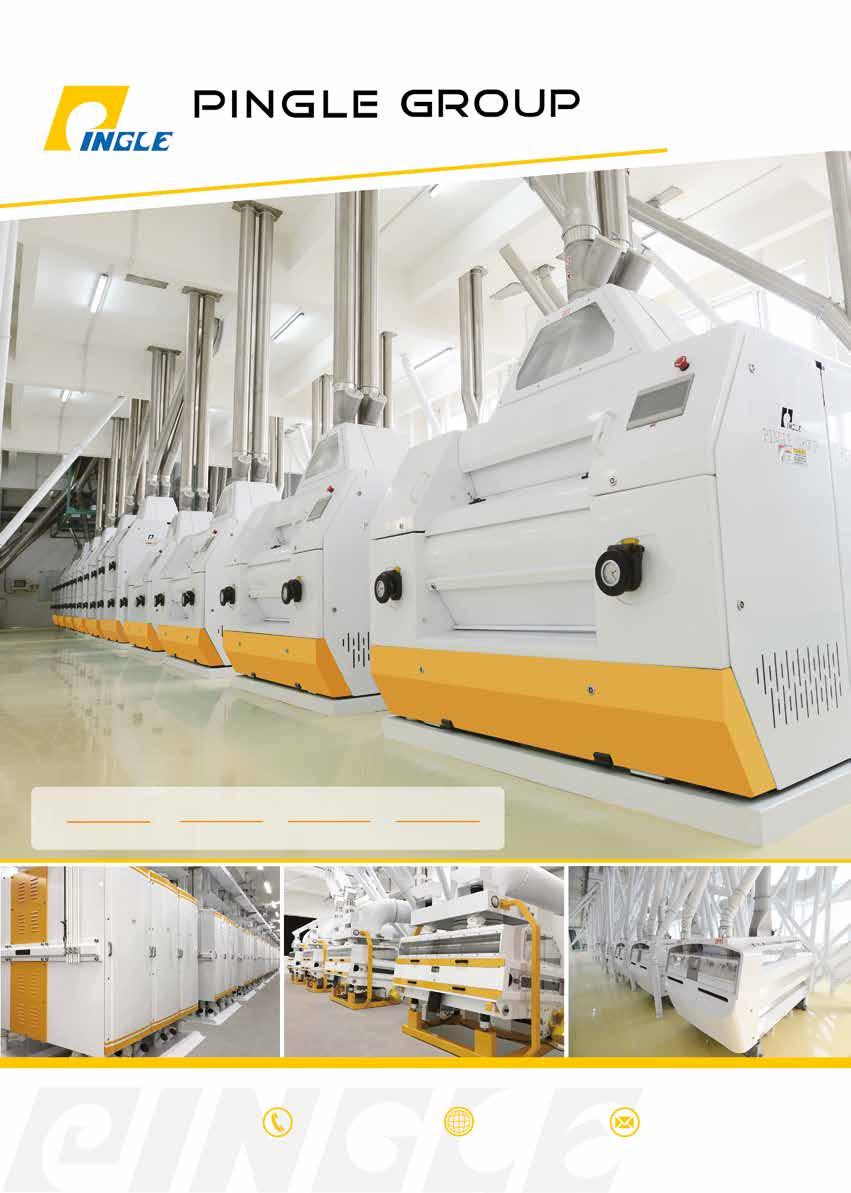

WORLD FLOUR DAY
Millers Unite for Global Giving Campaign
As the world prepares to celebrate World Flour Day on March 20, 2024, the global milling community is gearing up for a special campaign under the theme ‘World Flour Day – Giving Day.’ Organized by the FlourWorld Museum in Wittenburg, this initiative aims to highlight the social commitment of millers worldwide by focusing on campaigns for donations to support needy children.
Flour, often referred to as the ‘White Gold,’ holds a significant place in human nutrition and development throughout history. World Flour Day serves as an occasion to recognize the importance of flour and the invaluable work of the milling industry. This year, the FlourWorld Museum is emphasizing the social impact of flour with a call for collective social engagement.
Under the motto ‘Millers meeting social challenges,’ mills across the globe are encouraged to actively participate in the Giving Day campaign by donating flour to charitable institutions such as children’s aid foundations and orphanages. This campaign not only provides practical assistance to those in need but also sheds light on the essential role millers play in society. The FlourWorld Museum sets an example by donating 500kg of flour to kickstart the initiative.
Peter Steiner, Global Head of Business Unit MC Mühlenchemie, underscores the profound significance of this year’s World Flour Day, stating, “Flour is much more than just a staple food. It symbolizes life. With our global charitable initiative, we aim to raise awareness of the crucial role the milling industry plays in global nutrition. When we donate flour, we donate life.”
Mills and millers worldwide are invited to join this noble initiative by contributing goods to orphanages and youth

foundations, with the shared goal of making the world a better place. The FlourWorld Museum will showcase and highlight these initiatives on March 20, 2024, through its website www.worldflourday.com and social media platforms using #worldflourday.
March 20 was selected for World Flour Day due to its symbolic significance, aligning with the beginning of spring in the Northern Hemisphere, signifying a time of planting, and autumn and harvest in the Southern Hemisphere. Since its inception three years ago, World Flour Day has become an integral event in the calendars of millers worldwide.
The FlourWorld Museum, located near Hamburg, Germany, houses the world’s largest collection of flour sacks from 150 countries, portraying the traditions, history, and myths of flour under the unifying idea of “Flour, Power, Life.” Dedicated to celebrating flour and the contributions of millers globally, the museum continues to champion initiatives like World Flour Day to support communities in need.

10 | March 2024 - Milling and Grain Milling News

your actions speak On March 20, many millers around the world focus on social engagement and relief efforts for children in need. Join our call to action and donate flour to charitable organizations. For more information and the opportunity to participate in this initiative by the FlourWorld Museum, visit www.worldflourday.com. Picture created with Ai
World Flour Day – Giving Day Let



Bastak Instruments’ Journey of Innovation and Social Responsibility Empowering African Agriculture
Bastak Instruments, with a quarter-century expertise in food safety, quality control in food, and sustainable agriculture, is taking significant steps to contribute to the development of the agricultural sector in Africa. As part of these efforts, Zeki Demirtaşoğlu visited Africa to examine the company’s recent projects on the continent and to meet with local farmers. During his visit to Africa, Zeki Demirtaşoğlu had the opportunity to personally observe projects aimed at increasing the productivity of local farmers through the company’s agricultural innovation and technology solutions. These projects encompass a wide range, including the teaching of modern farming techniques and the training of blue and white-collar personnel working in the food and agriculture sectors.
Innovative solutions with agricultural innovation and technology
Agriculture is a key factor for the future of Africa. The African continent hosts most of the world’s arable land, and half of the population works in the agricultural sector, contributing the largest share to the total gross domestic product. However, Africa has not seen a significant increase in productivity since the 1980s, producing
insufficient food and low-value-added products.
Wheat, being one of the world’s most important cereal crops after rice, is a subject of international trade and a crucial component of industrial and food grain in sub-Saharan African countries. Wheat is also a strategic product generating farmer income. Ethiopia is one of the largest wheat producers in terms of total wheat-cultivated area and total production.
Demirtaşoğlu, emphasizing the critical role of laboratory quality control devices used in the food, grain, seed, and oilseed sectors in ensuring product quality and safety, stated that Bastak Instruments aims to support farmers and local agricultural organisations in Africa with state-of-the-art 72 types of quality control devices, expert and academic staff, and training activities under Bastak Academy to enhance the quality of agricultural products in the region. They aim to elevate the region’s food safety standards. During his visit, Zeki Demirtaşoğlu observed the use of these devices and engaged in significant discussions with local laboratories and agricultural organizations on integrating these technologies.
Empowering communities with education and capacity development project
Demirtaşoğlu also examined education and capacity development projects aimed at empowering local communities during his trip to Africa. These projects seek to support the adoption of sustainable
CHARITIES DIRECTORY 12 | March 2024 - Milling and Grain F

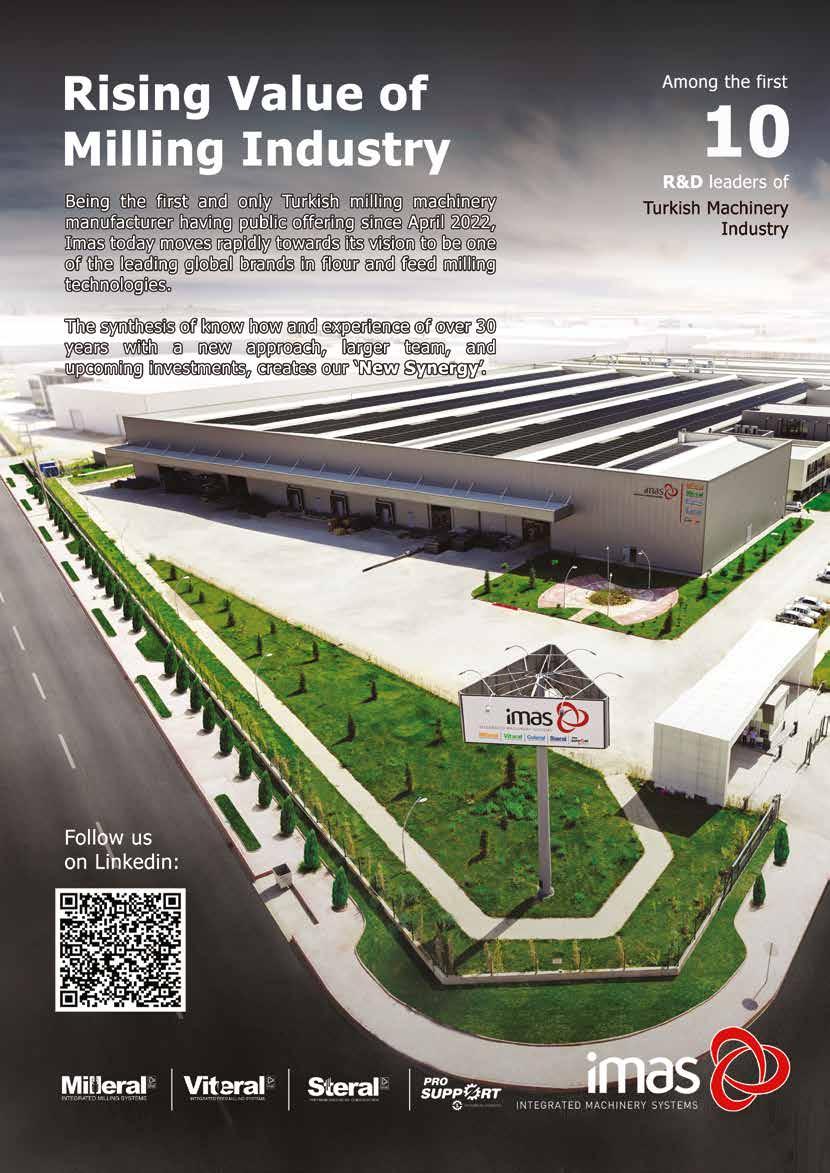


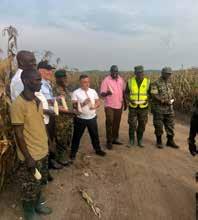

farming practices by providing education to farmers on modern agricultural techniques and laboratory quality control applications under the Bastak Academy. He mentioned their efforts to establish the Milling and Sector Machinery Manufacturers Association (DESMÜD) and Ankara Metropolitan Municipality partnership to create the Milling and Bread, Pasta, Biscuit Training Center, which will provide education in both English and Turkish - a first in Turkey and globally. They aim to offer innovative technologies and best practices to tens of thousands of learners who have not received formal education and have not fully adapted to the requirements of the times, coming from Africa, Turkic Republics, Latin America, the Middle East, and other countries.
Demirtaşoğlu, acknowledging Africa not only as a geographical continent but also as a home to diverse cultures, rich histories, and strong connections, expressed that the challenges and disadvantages in the region deeply influenced him during his visit. He mentioned their desire to make a positive impact by reaching out to people’s lives, taking a step towards education, and helping


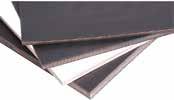
them look towards the future with hope. Zeki Demirtaşoğlu emphasized that Bastak Instruments is focused on creating an impact not only in the business world but also in the field of social responsibility. He added that, through social responsibility projects for African agricultural communities, they aim to improve the living standards of people in rural areas by providing support in health, education, and infrastructure.
Zeki Demirtaşoğlu’s journey in africa through his eyes
Zeki Demirtaşoğlu believes that true change in Africa’s agricultural sector, sustainability, and technology is possible when they converge. Following his visit to Africa, he expressed that their company has initiated efforts to provide support to local farmers and communities, aiming to facilitate the transfer of knowledge and technology. He stated that, with love and support, they hope these efforts can bring about positive contributions to the agricultural future of the continent, ultimately working together to bring about change in Africa.
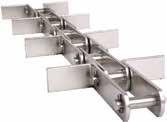
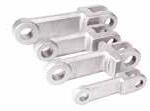
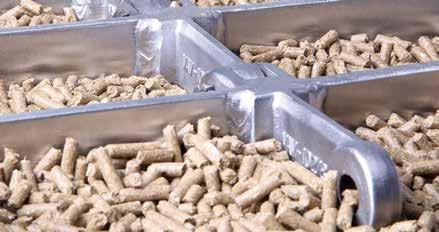

www.vav.nl contact@vav.nl Stand E041 Milling and Grain - March 2024 | 15 F
Elevator parts Conveyor chains

Milling and Grain is hosting a directory of milling industry charities and charitable organisations working in the milling sector under its UK Milling 4 Life CIO Charity. The aim of the directory is to build greater awareness of the work these charities do and how you might be able to donate funds to their specific projects and activities. Milling 4 life is not affiliated with these charities, but lists those working in the milling sector here along with their contact details for information and direct donations. Milling and Grain will feature each charity in turn in this section of the magazine in order to provide background information on each

Flour to the People by Scotland the bread Scotland
REGISTERED CHARITY No.-SC048892
https://scotlandthebread.org
Scotland The Bread is a collaborative project to establish a Scottish flour and bread supply that is healthy, equitable, locally controlled and sustainable. Our idea is simple: grow nutritious wheat and bake it properly close to home. Donations to support our work are urgently needed and very welcome. Thank you for your contribution.

Milling 4 Life
UK / International
REGISTERED CHARITY No. 1172699
https://millingforlife.com
Our goal is to help relieve malnutrition and poverty through the development and uptake of food and feed milling technology and processes; by encouraging agricultural improvements in the first instance followed by encouraging the adoption of the proper handling and storage of raw material and the uptake of milling processes to provide safe and affordable food products for both people and livestock (including fish) in transitional countries.

The George Family Foundation UK https://whitworthbros.ltd.uk/charitable-foundation
The George Family Foundation was established in 2020 as a registered charity independent of the Whitworths Holdings Group. It is run by three trustees, two of which are members of the George family and one who is independent. Currently the Foundation plans to donate a minimum of £100,000 per year to individuals and organisations whose purposes align with the values of the George Family.

The Green's Windmill Trust UK REGISTERED CHARITY No. 1163116 www.greensmill.org.uk
Green’s Windmill Trust started over 13 years ago as a small group of people who wished to help preserve the milling heritage of the windmill, promote George Green’s reputation as one of the greatest scientists of his age and further the educational and public activities of the Science Centre.
In 2012 we became a registered charity and began taking over day-to-day operations at the Mill and Science Centre from Nottingham City Council.

The Mills Archive Trust UK REGISTERED CHARITY No. 1155828 https://new.millsarchive.org/
The Mills Archive is a permanent repository for the documentary and photographic records of traditional and contemporary mills and milling, as well as similar structures dependent on traditional power sources. It makes that material freely available for public inspection and use in research and learning.
The Mills Archive is one of the world’s great mill collections. It has rescued over the million documents and images that might otherwise have ended up in a landfill site. It is an Aladdin’s cave filled with memories and free to users. The collections show the rich and diverse crafts, buildings, machinery, equipment and people involved with mills in the UK and around the world.

Flour World Museum
Germany
REGISTERED CHARITY No. 1155828
https://mehlwelten.de/english/index.php
The FlourWorld Museum in Wittenburg is an invitation to millers and friends of flour and bread from all over the world to rediscover this vital basic food with all their senses.
The FlourWorld Museum in Wittenburg is also a tribute to the millers of the world and a gesture of thanks for our close partnership with the international Milling Family, whose inspiration and active support enabled us to transform an eccentric idea into a museum that is unique in the world.

THE JORDAN TRUST UK
https://jordansmill.com
The Jordan Trust, run in association with Jordans Mill is registered as a charity, limited by guarantee and is based on the River Ivel at Holme Mills, Biggleswade.
The objectives of the Trust are to protect and preserve the character of the River Ivel site where flour milling was recorded in the Domesday Book of 1086.
Central to Holme Mills is the unique water driven Mill building which was last rebuilt following a fire in 1899. Visitors to the mill are able to gain an understanding from staff and volunteers about the process involved to produce a variety of flour products from wheat varieties grown in the Ivel Valley over the last 1000 years. In its day, this mill was a technologically advanced example of a milling system based on steel rolls rather than the millstones which had been powered for centuries by the power created by a six foot drop in water level on the Ivel river.

If you would like to list you charity under this directory, please email us at editorial@ perendale.co.uk



CHARITIES DIRECTORY
BESTMIX® Software: The best solution in challenging times Reduce costs and prevent risks Optimize your entire production chain Guarantee higher quality products BESTMIX® Feed Formulation, Quality Control, Ration Calculation and ERP solution. Scan to learn more: www.bestmix.com PEAK PERFORMANCE WITH NEXT GENERATION TECHNOLOGY Stay tuned LinkedIn SWISCA 16 | March 2024 - Milling and Grain


NewsMilling
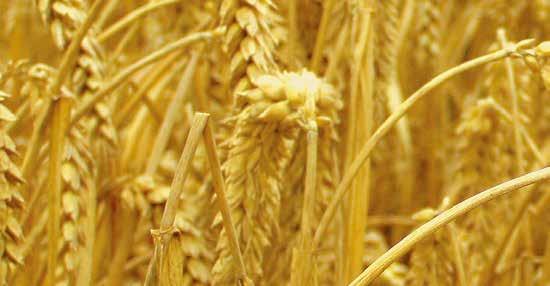


Renate
Wiendels at VIV MEA 2023
Roger Gilbert, Publisher of Milling and Grain magazine, talks to Renate Wiendels, Senior Project Manager for VIV at VNU Exhibitions, at VIV MEA 2023, which took place in Abu Dhabi from November 20-22, 2023.
Renate tells us how comprehensive the show is this year, with a new horticulture and agriculture element added, brining plant protein to the discussion with animal protein. She notes how the 2023 show reached a wide range of countries from all over the Middle East and Africa, stating governments in the region are particularly interested in investing in food security.
The next VIV MEA will be taking place in 2025, from November 25-27 in Abu Dhabi, see https://www.vivmea.nl/
Nath Morris at IPPE 2024
Nath Morris, President of the Association of US Poultry & Egg, speaks to Roger Gilbert, Publisher of Milling and Grain magazine, at the 2024 edition of IPPE, in Atlanta, Georgia, USA.
Nath has 10 years’ experience running the show at IPPE and has seen how the show has developed and significantly expanded over the years. The attendance goal this year was 31,000, which has since been met and raised in registrations. The international presence this year has increased, with the show being around 29 percent international, from 131 countries worldwide. 40 percent of the International presence has been from the LatAm alone. Evident from crowds, including 8000 International visitors, the show is getting busier than ever, so don’t miss out on next year’s show!
Learn more about IPPE 2025 – taking place January 28-20, in Atlanta, Georgia, USA. https://www.ippexpo.org/

Welcome one and all, to the third edition of Global Miller for 2024, ergo, the March edition of Milling and Grain. The first quarter of the year is ending, and it flew by. Who knew time could go by so fast? It only gets faster the older we become too.
It is International Women’s Day on March 8, a day of celebration for women worldwide and a reminder to all that women deserve to be treated with equality and equity. The theme for this year according to United Nations Women is ‘Invest in women: Accelerate progress’. As the world suffers through crisis after crisis, by investing in women, whether it be financially or by providing jobs or services that allow women to be able to work, the world can grow and a future can be created where everyone thrives as women will provide an economical growth, new innovations, boundless opportunities and more. As a sign that Milling and Grain are also investing in women, we wish to honour one our long-standing friends within the milling industry, Mildred Cookson, who we have a double page interview of in the back of our magazine.
March is also celebration for World Flour Day on March 20. A significant day for flour millers as it’s a day to celebrate the challenges we have overcome and the global solidarity that marks the efforts we have put in to get to where we are now regarding milling. This year World Flour Day is focusing heavily on ‘Giving’. Giving to the community, to charities, organisations and more. We want to provide children with a tangible difference and to do so, World Flour Day would like the global milling community to showcase their spirit and ability to work together by participating and donating towards causes that benefit our future generations.
As for news for this month, you’ll be able to learn more on how AFIA welcomes the FDA’s move toward modern claim regulations. You can also discover how dsm-fimenich plan to separate out Animal Heath & Nutrition business from the group and how the Italian company Ocrim acquired SIMA with is wonderful news. More can be read about this in both the magazine and our website. This isn’t all of our news either, so there are still some surprises for you to read about too in this edition.
This month, we also have a very large event that will be happening- VICTAM 2024 co-locating with Animal and Health Nutrition Asia in Bangkok, Thailand. If you’re attending then do find Milling and Grain at our stand I044. Mentioning large events, you will find the report of IPPE 2024 in this edition and discover all the latest information on the event along with what the President of IPPE has to say regarding their event.



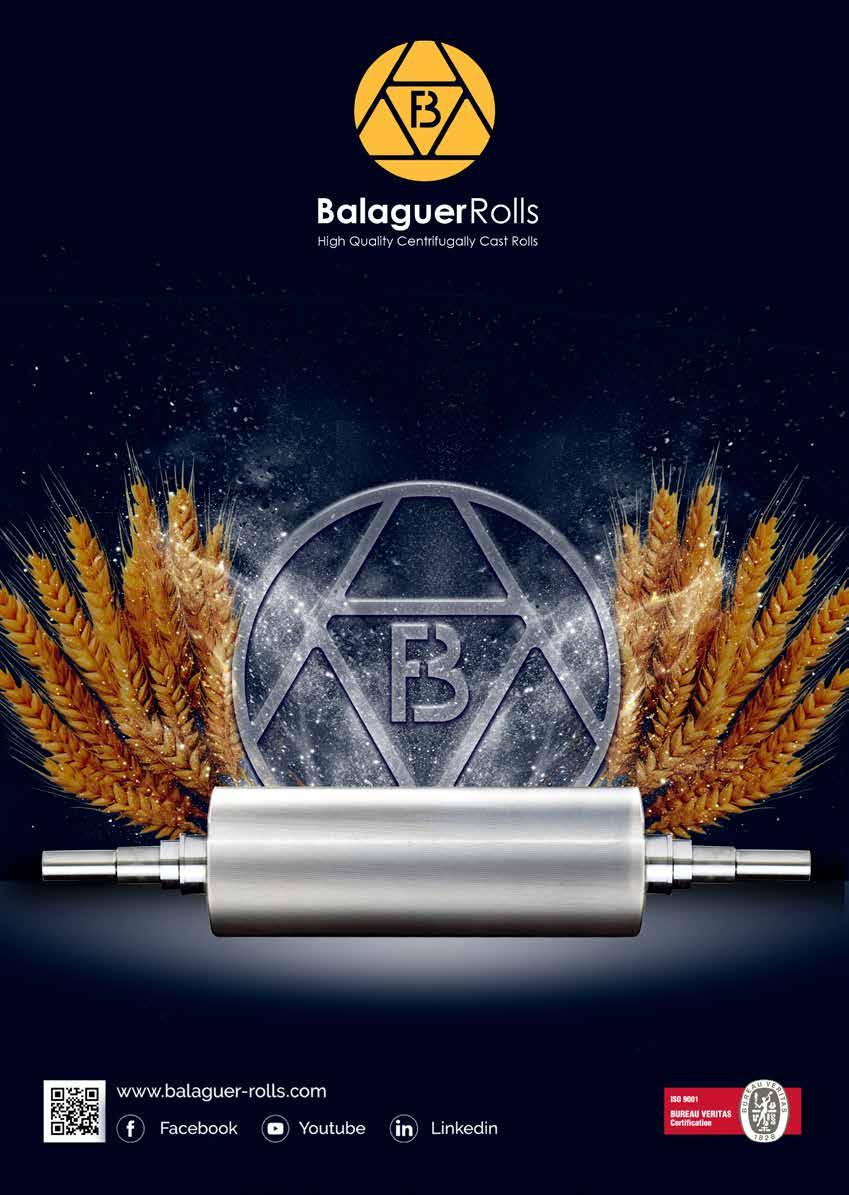


gfmt.blogspot.com
18 | March 2024 - Milling and Grain




Introducing Horti Agri Next (HAN) Asia 2025
VNU Exhibitions Asia Pacific, renowned for its expertise in organising successful trade fairs and conferences in Southeast Asia, is thrilled to announce the launch of HAN ASIA 2025, a trade exhibition dedicated to Horticulture and Agriculture that covers the entire supply chain.
With the strategic re-branding of horticultural and agricultural exhibitions in Asia, VNU Exhibitions Europe and VNU Exhibitions Asia Pacific are positioned as the leading and complete Seed to Food trade hub for Asia Pacific and beyond. With the launch of HAN ASIA, VNU Exhibitions Asia Pacific simultaneously introduces regional satellite events in the countries of Vietnam (May 2024) and Indonesia (September 2025), co-locating the events under the name HAN Select, with the successful livestock trade shows of the ILDEX Series.
The new international platform for Asia, HAN ASIA, will be held during March 12-14, 2025 at IMPACT, Bangkok, Thailand, parallel to VIV Asia 2025, focusing on the latest products, innovations and advances in the fields of horticultural food production, landscaping, controlled environment practices, environmental conservation, arable land planting, harvesting, and processing of crops, as well as land and water resources management and new enhancing technologies. The fusion of HAN ASIA and VIV Asia creates Asia’s largest Agri-food trade fair – a
powerful collaboration of innovation and excellence.
HAN ASIA follows the success of HAN MEA 2023 that took place in Abu Dhabi, UAE from November 2022, 2023, in co-location with VIV MEA 2023 and was organised by VNU Exhibitions Europe. With 10,080 visitors from 113 counties and nearly 500 exhibitors from around 50 nations, the events showcased the global interconnectivity of the animal husbandry and the agribusiness industry. Spanning five halls at Abu Dhabi’s ADNEC venue, the exhibitions covered over 17,500sqm of space, drawing attendees not only from the UAE, but also from countries such as Egypt, Iraq, Iran, Pakistan, and Saudi Arabia. The remarkable 67 percent interest overlap between the co-located events underscored the dynamic networking and information exchange that characterised this triumphant showcase.
“HAN MEA was a testament to our commitment to promoting innovation and collaboration within the agricultural and horticultural sectors in the Middle East and Africa and across the different regions in which we operate. Our decision to extend this initiative to Asia with HAN Asia and the satellite HAN Select events stems from the positive impact witnessed in the MEA region and the growing potential we see” stated Ms Birgit Horn, Managing Director of the Agrifood Portfolio of VNU Exhibitions Europe.

Get insights in the quality of your steam process With the IVS Smart Steam Dosing Unit www.ivsdosingtechnology.nl Recommendations for optimisation Anticipating data facilitates predictive maintenance Increases user expertise of steam dosing Insight into the quality of the steam network 20 | March 2024 - Milling and Grain Milling News
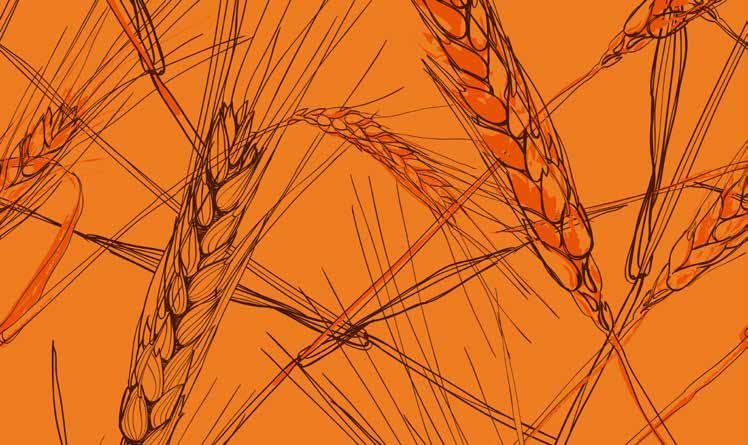
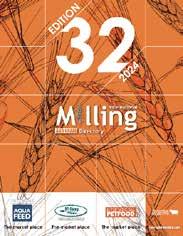

The print edition the trusted information source for the industry NEW EDITION - OUT NOW! 2024 www.internationalmilling.com ANDRITZ FEED & BIOFUEL andritz.com/feed-and-biofuel-en Upgrade your operations with ANDRITZ Feed & Biofuel’s advanced, risk-free automation and digitalization integration. Leveraging our 25 years of cross-sector success, our platform blends human and digital intelligence to enhance processing efficiency and support growth, while delivering 7%-16% throughput increases. Our solution encompasses an evolving, vendor-neutral solution supported by state-of-the-art automation and digitalization technology. Send us a request to get a personal consultation: fb-automation@andritz.com FEED & BIOFUEL AUTOMATION & DIGITALIZATION NEVER STAND STILL ANDRITZ WILL BE WITH YOU EVERY STEP OF THE WAY IN YOUR DIGITALIZATION JOURNEY, ENSURING YOUR PLANT AND YOUR BUSINESS NEVER STAND STILL. Milling and Grain - March 2024 | 21 Milling News
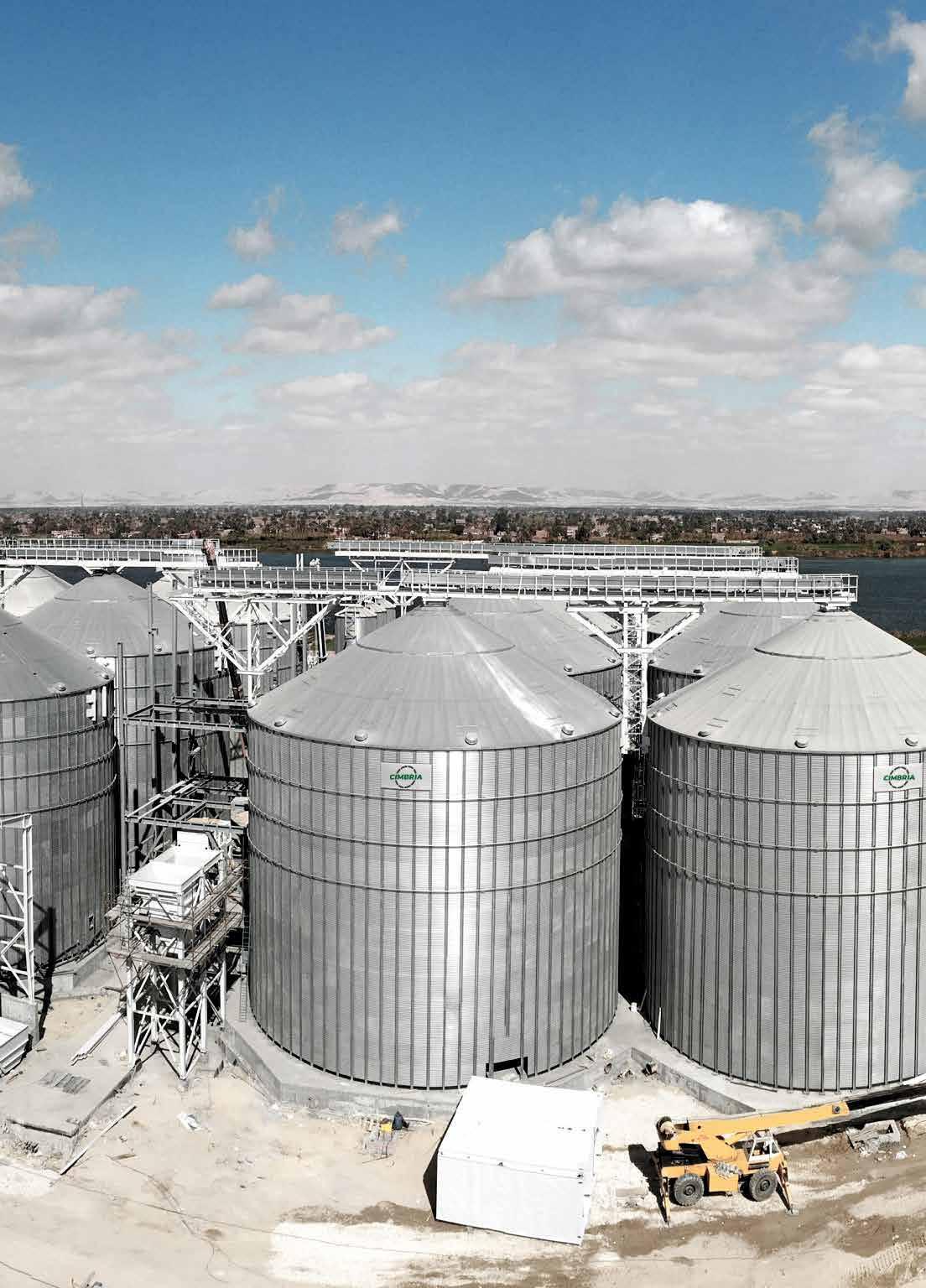


AFIA welcomes FDA’s move toward modern claims regulations, but says legislation is still needed

The American Feed Industry Association applauds the Food and Drug Administration Center for Veterinary Medicine’s (CVM) decision to revoke an outdated regulatory policy spanning almost three decades, which has deterred animal food ingredient manufacturers from investing in the US marketplace.
This move could catalyse significant enhancements in livestock, poultry and aquaculture production, as well as advancements in food safety, environmental sustainability and animal well-being by allowing feed additives to be reviewed through the appropriate ingredient review processes versus the CVM’s animal drug review process. AFIA’s President and CEO Constance Cullman issued the following statement:
“The AFIA welcomes the CVM’s intention to withdraw its nearly 30-year-old regulatory policy, which shows its commitment to partnering with animal food innovators. This action signifies progress toward fixing a broken process and will allow our industry to start providing innovations for animal production, but the need does not end here. Congress, now it’s your turn to act by swiftly
passing the bipartisan Innovative Feed Enhancement and Economic Development (Innovative FEED) Act and providing the FDA with the tools it needs to codify a regulatory pathway and support American animal food manufacturers.”
Over the recent years, the FDA’s 1998 Program Policy and Procedures Manual Guide 1240.3605 has faced criticism, particularly from the AFIA, animal producers, lawmakers and federal officials, who argue that it hindered timely and cost-effective introduction of animal food ingredients with beneficial properties. The CVM’s strict interpretation categorised these products as animal drugs. This categorisation subjects them to lengthy drug review procedures rather than more suitable ingredient review processes, needlessly prolongs the evaluation period and, in many cases, stops companies from seeking product approval in the United States. The Innovative FEED Act, endorsed by nearly 190 stakeholders, would codify a regulatory review pathway that demonstrates safety and effectiveness for animal food ingredients impacting the microbiome of animals, food safety or the environment.
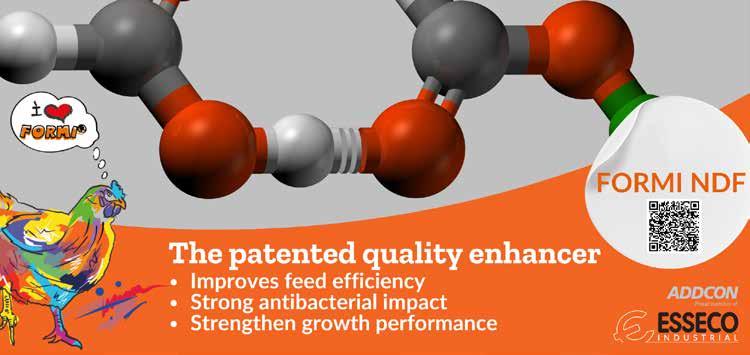
FEED FOCUS
Milling and Grain - March 2024 | 23 Milling News
SHIPLOADER SPECIALIST
NEUERO produces the most reliable and high-quality bulk ship loaders worldwide | neuero.de/en





















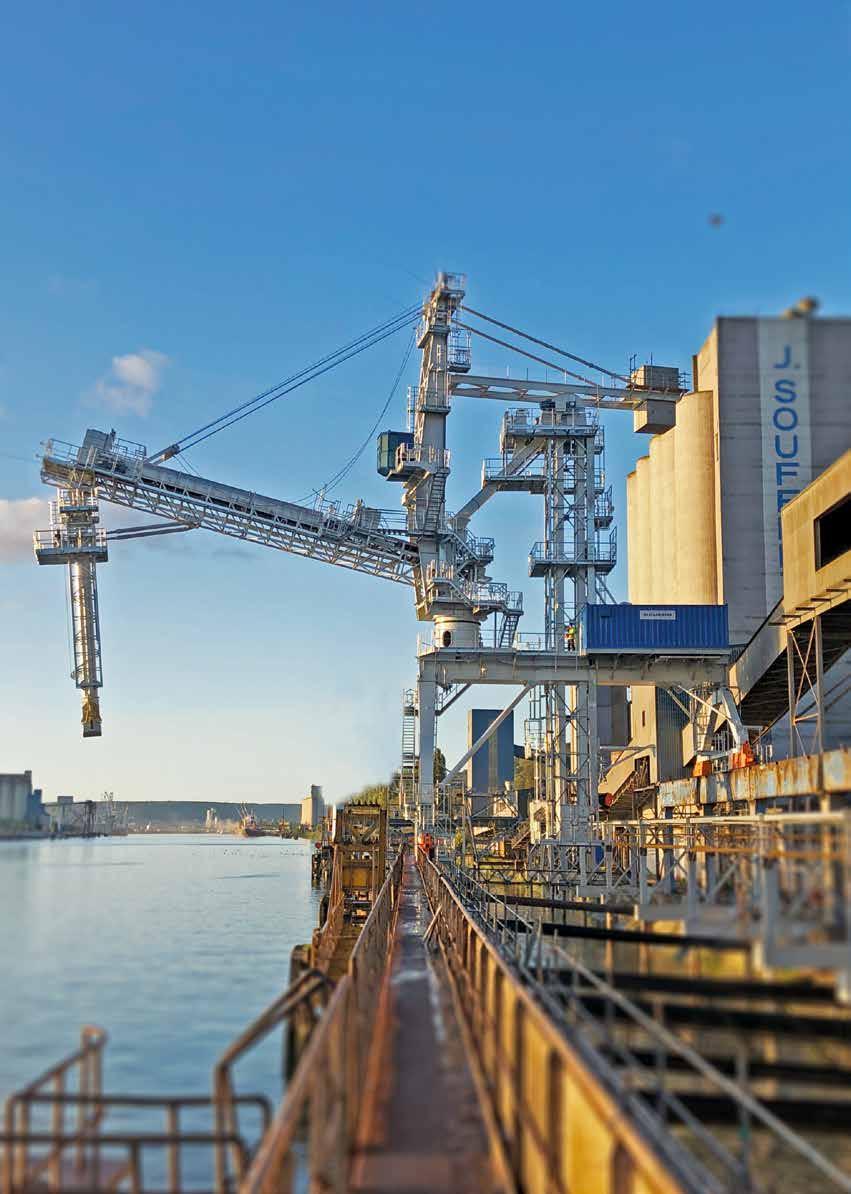

DLG quality seal for farm inputs: Register new products for the 2024 tests now
Quality-conscious companies use the independent and practical control of the DLG (German Agricultural Society) for their products to show their customers that they can trust their products. The DLG Test Centre Technology and Farm Inputs offers manufacturers and distributors the opportunity to take part in the 2024 quality tests for farm inputs with new products. Products that pass the extensive expert tests receive the DLG quality seal, the renowned industry award for above-average product quality.
The quality tests carried out by the DLG experts are based on test criteria of high practical relevance. The test frameworks on which the tests are conducted are drawn up for each product group by neutral and independent
test commissions consisting of experts from agriculture, science and consultancy and cover all value-determining characteristics of the respective product group. The effectiveness is analysed in the laboratory and in practice, as is any possible negative impact on animals and/or stable facilities, which must be ruled out. The consistently high quality of the tested products is ensured by annually recurring control tests.
“The DLG quality seal has an outstanding reputation in agricultural practice,” says Dr Michael Eise, Project Manager at the DLG Test Centre Technology and Farm Inputs.
“Our test criteria are regularly updated and reflect the current requirements for the respective farm inputs. Thanks to our efficient and regular inspections, companies have the opportunity to position themselves precisely in the market and the ‘DLG quality seal’ guarantees an excellent product quality when agricultural investment decisions are to be made.”


FEED FOCUS
Industriestrasse 32, 8200 Gleisdorf, Austria Tel.: +43 3112 38580-0 E-Mail: office@statec-binder.com www.statec-binder.com more than more than 1800 85 countries years 45 fully automatic packaging systems YOUR SPECIALIST & PARTNER FOR BAGGING & PALLETIZING SOLUTIONS Milling and Grain - March 2024 | 25 Milling News

JH Burrows & Co Salford Mills, Horley
Milling journals of the past at The Mills Archive
by Mildred Cookson, Mills Archive Trust, UK
By the 1895 report in “The Miller”, this Surrey mill had been owned by Mr Burrows for several years. The illustration shows it from the road to Earlswood. This building replaced an earlier one destroyed by fire in the early part of 1887. After rebuilding, the mill was to work on Tattersall’s system.
The Tattersall machine consisted of three pairs of rolls, grooved suitably for effecting the first, second and third breaks. The product treated by the first set of rolls fell onto a sieve covered with wire and inclined at an angle which could be regulated as required. This sieve was carried on ash springs at the sides. It was moved by the rotation of a cam of 8 sides, which imparted a vertical vibration and lightly throwing the products upwards, then falling at a right angle. The sieve was remarkably effective in the rapid separation of the bran from the broken floury
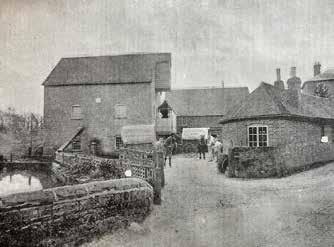
particles. The overtails fell to the second break where the products went to a second sieve and then to a third pair of rolls underneath which was a centrifugal for taking out the flour.
The overtails of this machine were treated on a sifter, dividing the bran into three sizes. The throughs of the first and second break sieves fell to another centrifugal which ran parallel with the bran centrifugal, the flour joining the bran flour in a worm common to both. The overtails of this centrifugal were semolina to be treated on a middlings purifier on the third floor, where they would be reduced on smooth roller mills. The wheat was cleaned on a scourer and brush installed on the first floor. A Dickey sieve was also here to separate the germ.
The mill was driven by a 10hp high and low pressure condensing engine of the beam type built by Thomas Horn and Sons, engineers and millwrights of Waterloo Road, London S.E. The engine was fed from a boiler made Whitmore & Binyon of Wicken Market and Mark Lane.
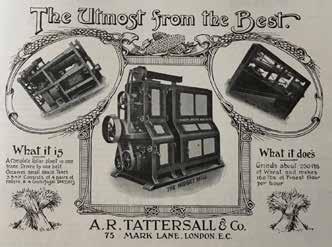 Drott crude oil engine driving Tattersall’s Midget Mill at Bristol Show
Drott crude oil engine driving Tattersall’s Midget Mill at Bristol Show
advertisement
Tattersall 1896
26 | March 2024 - Milling and Grain
Tattersall’s Midget Mill (1925)
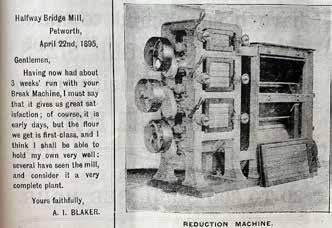
AJ Blaker’s Halfway Bridge Mills, Selham
In 1896 “The Miller” considered that nothing was more remarkable at that time in the history of flour milling than the resurrection of the small country mill. The roller revolution had taken place and automatic roller plants of from five to 20 sacks capacity were being erected at all points of the compass. Although many country mills ceased to be, roller systems made their way into many such mills until the humble but thriving 1-2 sack roller plant was no longer a rarity.
A typical mill of the time was the Halfway Bridge Mill, situated in the pretty county of Sussex. The mill, owned by Mr Blaker, stood in Lodsworth parish about a mile and a quarter from Selham station. Besides this mill, Mr Blaker also worked another mill, Lodsbridge Mill, about three quarters of a mile away on the Selham Road.
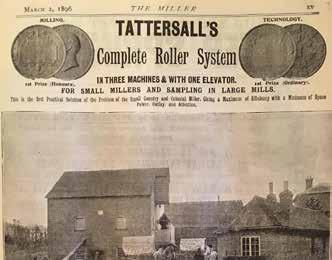
Lodsbridge mill was on the river Rother, and powered by a pair of waterwheels which provided all the motive power needed. Here all the gristing and barley grinding was done; the equipment included 3 sets of millstones. There was also a wheat cleaning system, a scourer, a trieur cylinder and a smutter through which all the grain intended for use at the Halfway Bridge Mill was first passed.
This gristing mill also served the useful purpose of a granary and preliminary cleaning department for the Halfway Bridge Mill. A tablet let into the wall could be seen by visitors entering the yard and dated the mill from 1872. A bakery, shown on the right foreground in the illustration, turned 50 bushels, or 10 sacks of flour into bread. The window at the end of the building was Mr. Blaker’s office. The building in the background, at right
 Blaker’s endorsement for Tattersall
Blaker’s endorsement for Tattersall
Milling and Grain - March 2024 | 27
Tattersall 1896 advertisement


angles to the mill, was the warehouse for both flour and grain.
Motive power was provided by both water and steam. The water drove a breastshot waterwheel, which, with a full 14 ft head, could give around 7 hp. Added to this, a semi portable combined boiler and engine by Marshall Sons & Co., of Gainsborough, was installed in a building parallel with the mill but separated by a stout wall.
In 1896 the millstones were supplemented with smooth rolls for treating the semolina and middlings, whilst a purifier was added as well as centrifugal reels. This combination succeeded so well that Mr Blaker resolved to equip his mill with an allroller plant and chose the ‘Tattersall’ complete break machine.

On the ground floor a purifier stood beside an offal divider, consisting of a rotary sieve hung from the ceiling. There were three double elevators in the mill, two of which were on this floor, while the feet of the other were hidden by the flooring. The ‘Tattersall’ mill combined break machine of one sack per hour capacity, which was fitted three pairs of rolls 12 inch by 6 inch. The mill stood in the middle of the floor behind which were two sets of reduction mills fitted with two pairs of smooth rolls each, to do the four reductions of the semolina and middlings. Over the second roller
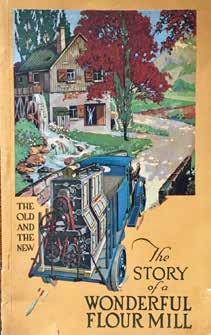
fed to the fourth reduction, while the tailing passed to the offal sack.
On this floor remained two pairs of millstones that could be used as needed. A ‘Victor’ smutter was fed from the dirty wheat bin on the floor above was also installed here. On the second or top floor a lucam provided the means of hoisting the grain into the mill where there were three bins. The equipment on this floor also included four centrifugals.
I have included two illustrations of Tattershall’s Midget Marvel

 Tattersall’s catalogue
Tattersall’s catalogue
Milling and Grain - March 2024 | 29
H Burrows & Co Salford Mills, Horley
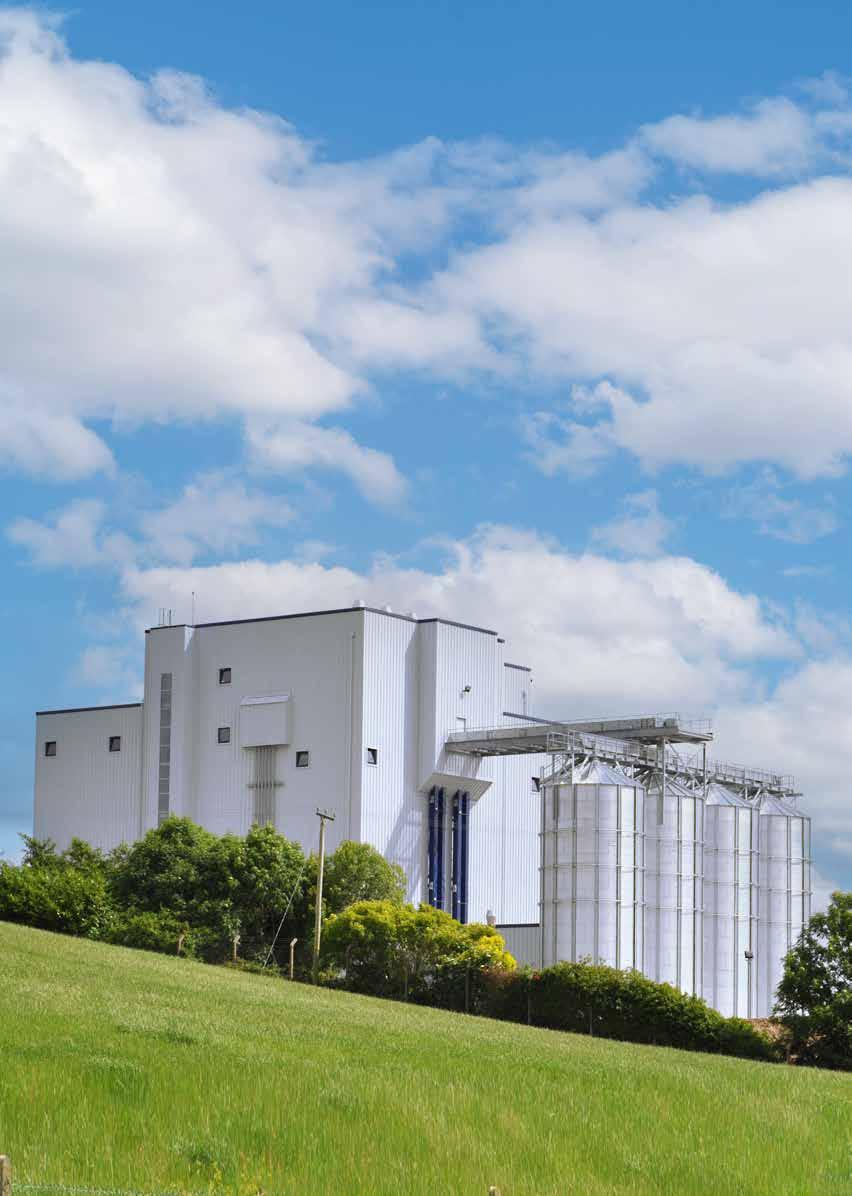
Looking to reinvent your feed mill? We’re listening.
As industry experts, we understand the unique challenges you face in the animal feed industry. That’s why we are committed to assist you throughout the entire journey, from concept to complete installation So, what’s on your mind?
Let’s talk opportunities
Fane Valley, Ireland
www.ottevanger.com
»


rising 39.5 percent to 7.56 million tons, accounting for 69.5 percent of total wheat imports.
Wheat imports from Ukraine have increased to 1.28 million tonnes after dipping to 845,587 tonnes in 2022, with last year’s shipments accounting for 11.8 percent of imports.
Soliman added that imports rose partly because GASC was buying more wheat to sell to the private sector through a new commodities exchange.
 by Dr Mahmoud Riyad, Secretary-General, Egyptian Milling Association, Egypt
by Dr Mahmoud Riyad, Secretary-General, Egyptian Milling Association, Egypt
Egypt’s wheat imports rebound after a dip in global prices
Egypt’s wheat imports rose by more than a million metric tonnes in 2023, data seen by Reuter shows, with traders citing a dip in global prices from highs reached after Russia invaded Ukraine.
One of the world’s top wheat importers, Egypt uses the grain it buys for heavily subsidized bread available to more than two-thirds of the North African nation’s 105 million population.
The data showed that Egypt imported about 10.88 million tonnes of wheat in 2023, up 14.7 percent from 9.48 million tonnes in 2022.
That was mainly because shipments delivered to state buyers, the General Authority for Supply Commodities (GASC), jumped by 26 percent to about 5.6 million tonnes.
Imports by the private sector rose 1.3 percent to 5.12 million tonnes.
“Imports in 2022 were extraordinarily low because of high prices and the FX crunch following the war in Ukraine when importers couldn’t buy as much,” said Hesham Soliman, president of Egyptian merchant Mediterranean Star.
The growing population and rising demand could have led to a bigger increase in wheat imports but for Egypt’s chronic shortage of foreign currency, he said.
Egypt’s total wheat imports fell 18.7 percent to about 9.5 million tonnes in 2022, estimated to be the lowest since 2013, as the war in Ukraine disrupted GASC’s wheat purchases, caused a spike in global prices, and exacerbated a foreign exchange crisis in Egypt that left private importers unable to pay for wheat stuck at ports.
Most of Egypt’s 2023 imports came from Russia, with shipments






Trading on the Egyptian Mercantile Exchange(EMX) began in November 2022 to tackle private-sector price distortions after a spike in the price of unsubsidised bread.
GASC, mainly responsible for importing subsidised bread, can help private sector mills by selling them wheat from its reserves.
The authority has sold 1.2 million tonnes since the launch of the exchange, about 1.1 million tonnes of it in 2023, EMX Chairman Ibrahim Ashmawi told Reuters.
“GASC increases its purchases to secure the country’s needs,” said Ashmawi. “Part of boosting reserves is maneuvering when there’s a market shortage, so it sells on the exchange.”
Ashmawi added that he does not expect GASC to increase purchases specifically for the commodities exchange but it would do so if needed.
The data seen by Reuters shows total deliveries, not purchases, of wheat shipments to Egyptian ports in the previous calendar year and are not official figures.
However, Ashmawi this month told domestic media that the total 2023 imports were about 11 million tonnes.
Egypt doesn’t plan to implement a hedging policy against wheat imports in the new fiscal year 2024-2025, because of the recent drop in prices, Supply Minister Ali El-Mosilhy said.
“Current wheat prices have decreased to levels nearing those before COVID-19 and the war between Russia and Ukraine,” the minister told Bloomberg in an interview.
Egypt, one of the world’s top wheat importers, has signaled numerous times in recent years that it planned to start hedging the grain in order to protect itself against higher prices. The country relies on subsidised wheat to feed its population.
Egypt’s stockpiles are sufficient for 4.2 months, with the country importing 6.5 million tons to seven million tonnes of wheat per year, El-Mosilhy added.
Separately, according to the minister, vegetable oil inventories are sufficient for 5.1 months and sugar stockpiles for 5.4 months.











5 continents 30+ years of evolution 300+ projects delivered The technology that pushes the limits of storage Vibrafloor Z.A. 27 rue de la Tuilerie 71640 Dracy-le-Fort Tél: +33 (0)3 85 44 06 78 vibrafloor@vibrafloor.com www.vibrafloor.com UNIVERSAL RECLAIM SYSTEM Together, let’s prepare your future projects! Milling and Grain - March 2024 | 31 Milling News
dsm-firmenich to separate out Animal Nutrition & Health business from the group
dsm-firmenich has announced the initiation of a process to carve-out and separate out the Animal Nutrition & Health (ANH) business from the Group. ANH is driven by different dynamics from the rest of the group, which has become even more apparent with the unprecedented challenges in the vitamins market. The company believes that the full potential of the ANH business could be best realised through a different ownership structure for which all potential separation options will be considered. The company would expect to be in a position to separate the business in 2025.
Dimitri de Vreeze, CEO of dsm-firmenich, commented: “Our purpose at dsm-firmenich is to bring progress to life, as we boost innovation in premium, high-growth and resilient segments. ANH is a fantastic business that over the years we have built to be a true leader in the industry. This is a difficult moment, but we strongly believe that a separation would be better for both businesses and their employees, and ultimately generate better value for all our stakeholders.”
A separation would enable dsm-firmenich to strengthen its position as a world-leader in nutrition, health, and beauty. By fully focusing on Perfumery & Beauty (P&B); Taste, Texture & Health (TTH); and Health, Nutrition & Care (HNC), the company can further develop its complementary world-class scientific research,

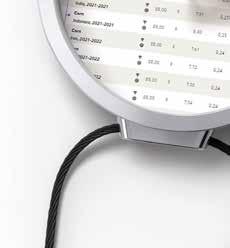

technologies, and manufacturing excellence. Full focus on these businesses is expected to enhance their commercial potential and synergies, supporting an attractive and consistent growth outlook alongside robust margins.
The perimeter of the ANH business expected to be separated out is being reviewed as part of this process. Given Beaver’s critical role in reducing emissions across the dairy industry, an important segment for TTH, and Veramaris’ significant potential in dietary supplements, it is expected that both businesses would remain part of the group.
Ivo Lansbergen will continue to lead the ANH business. He joined in 1997 and led ANH since 2019.
Ivo Lansbergen, President, Animal Nutrition & Health, commented: “We have an amazing team within ANH that has built a global leader with scale, a unique portfolio and unrivalled innovation capabilities to help our customers tackle some of the most challenging food security issues and with a strategy that is strongly focused on making animal farming sustainable. It is an exciting prospect for our world class team to pursue our ANH strategy.”
ANH is a world leading business with the most complete ingredients portfolio ideally positioned to support a growing population through more sustainable animal farming. Headquartered in Kaiseraugst, last year ANH delivered more than EU€3 billion in revenues with


BECAUSE IT’S ABOUT TIMING

Determine the nutritional quality of your feeds and raw materials – fast, reliably, and at the best quality.
Reliable and timely information about the nutritional value of your raw materials and products allows you to optimize your processes and gain a competitive advantage based on verifiable superior quality. AMINONIR ® is the number 1 in amino acid analysis with a track record of over 20 years.
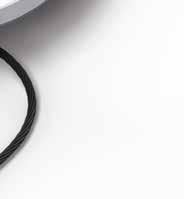
Sciencing the global food challenge. aminonir.evonik.com
9804-02_AZ_AMINONir_190x132_EN_Milling-and-Grain_240108-1.indd 1 08.01.24 15:33 32 | March 2024 - Milling and Grain Milling News
approximately 6000 employees. It helps its customers to deliver healthy animal proteins efficiently and sustainably whilst harnessing the power of data to make animal farming practices more sustainable, productive, and transparent. The business has a unique premix network across the world that helps deliver global products with local solutions and benefits from precision services capability.
The global vitamins market has experienced a prolonged downturn which has been driven primarily by unprecedented cyclical pressure on vitamin prices in the animal markets. This has been partly mitigated by strong outcomes from the performance solutions business which provides important tools for farmers to deliver feed efficiency yield management. By separating ANH, dsmfirmenich’s exposure to future vitamin earnings volatility would be reduced.
As part of the vitamin transformation program announced in June 2023, the company continues to make significant progress on its cost reduction plan including plant closures, route-to-market simplification, and optimised service levels. The company remains confident in realising a contribution of EU€100 million in adjusted EBITDA in 2024 and the full benefit of EU€200 million in 2025.
During the process, dsm-firmenich remains committed to the ANH business, its market-leading team and to providing excellent service to customers as the business transitions to a new ownership structure to deliver its full potential.
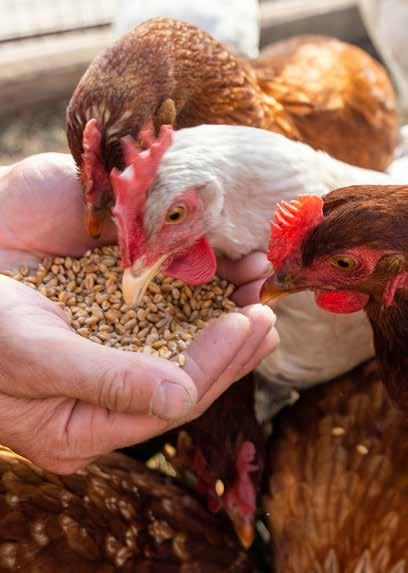
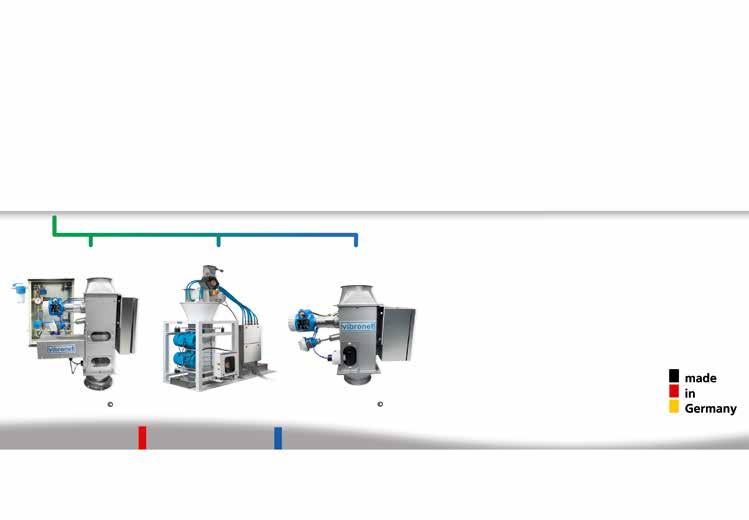


Milling and Grain - March 2024 | 33 Milling News
Omas Industries announces expansion into UK and Northern Europe
Omas Industries, the Italian company specialising in machinery and plants for the milling industry based in San Giorgio delle Pertiche, Padua, is excited to announce its entry into UK and Northern Europe market. This strategic move comes at a time of remarkable growth, with the company experiencing a consistent increase in orders and pursuing an ambitious hiring plan to strengthen its international presence.
Omas Industries stands as one of the few Italian companies operating in the milling industry. The newly formed entity, ‘Omas Northern Europe’, will be spearheaded by Peter Marriott, former Sales Manager EMEA of a leading global manufacturer of equipment for the rice, wheat, and corn industry, with over 30 years industry Experience.
“I am very honoured that such a remarkable and experienced milling expert like Peter chose Omas and I’m sure that he will contribute to promote our technologies and presence in the market, providing support to the customers”, said Pietro Barbalarga, Sales Director of Omas Industries. This expansion decision reflects a bold step in line with the growing market demand for innovative solutions in the grain milling sector. Now more than ever, the industry requires efficient and flexible production
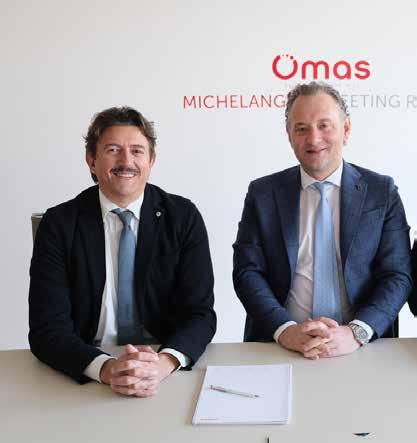
through the adoption of automation and digitalisation processes within the facility. This translates into increased energy efficiency, improved production quality, energy savings, and waste prevention. Notably, this vision aims to modernise a traditionally conservative sector, leading to a smart factory capable of providing technological advances to customers around the world.
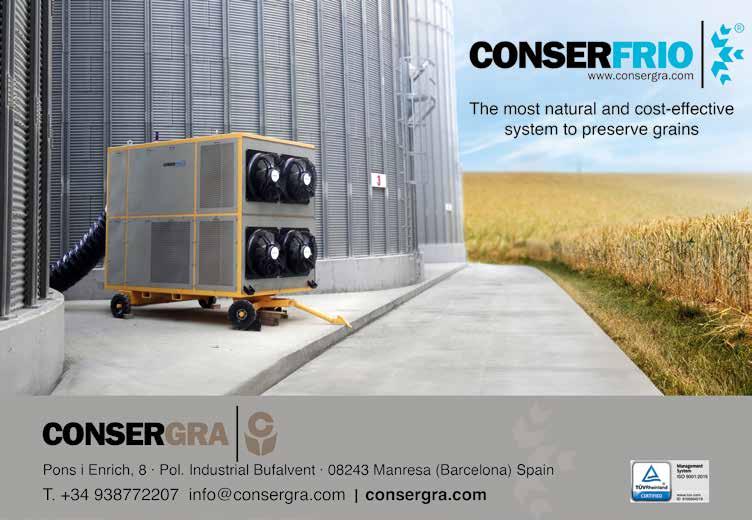
34 | March 2024 - Milling and Grain Milling News

Luigi Nalon, CEO of Omas Industries, states:
“The milling industry must embrace new production methods and products, making it easier to adapt to changes in consumer lifestyle, achieving global goals of carbon reduction and protecting the environment”. “It is a great pleasure for me to join Omas” comments Peter Marriott, the new General Manager of Omas Northern Europe “I was deeply impressed by Omas’ technologies, especially the Flexy Mill, which allows the modification of different parameters during the grinding process, adapting the mill to various types of grains and legumes without compromising performances and product quality. Thanks to permanent magnet torque motors, the miller can increase or decrease the peripheral speed of both grinding rollers, change the grinding ratio and the rollers’ operating position, adjust the grinding gap,create recipes, and more. I strongly believe Omas’ innovative solutions
1 27/01/22 10:59


can bring significant enhancements in the UK and Northern European market”.
The success of Omas Industries’ machinery and Flexy Mill has been recognized by some of the world’s most renowned producers of flours and industrial machinery, including Moulins Soufflet, EB Bradshaw & Sons, Panhandle, Agricultural Commodities and, in Italy, Molino Favero. For these projects, Omas has provided machinery or implemented turnkey plants, contributing to improve turnover and profitability.
In addition to pursuing commercial success, Omas is deeply committed to sustainable innovation. Ongoing research and development not only enhance production efficiency but also contribute to reducing environmental impact, showcasing a tangible commitment to a more sustainable future in the cereal transformation process. Gabriele Nicoletti, Omas Technical Director, explains “Omas continuous innovation and development is focused to enable customers to produce new products with advanced milling machinery. More than ever, it is imperative to meet the requirements of food safety, energy efficiency and traceability during the production process”.
“Omas is ready to offer its expertise and cutting-edge technology to a market thatcontinues to show growing interest in advanced solutions, carving a niche among traditional milling methods” continues Nalon. “With the addition of Peter Marriott to our team, we believe that our products will benefit from his expertise, making a positive impact in the UK and Northern European market”.
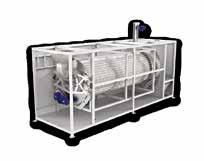

pubblicità italiana_MOD.pdf
Milling and Grain - March 2024 | 35 Milling News
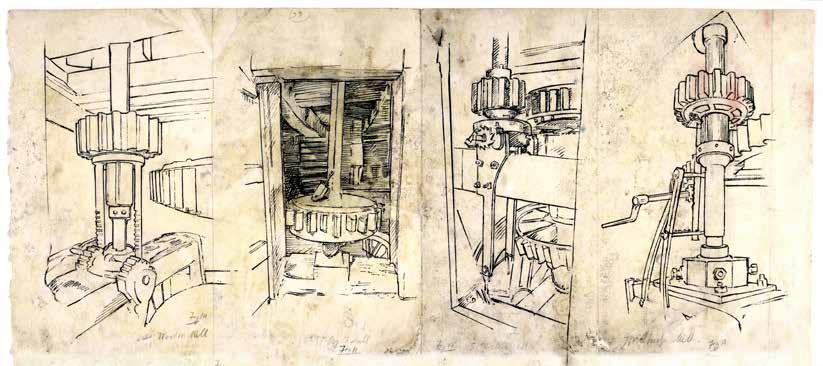
Gems from the Mills Archive Mill sketches by Thomas Hennell
by Nathanael Hodge, Mills Archive, UK
These sketches, showing the machinery in wind and watermills, were drawn by artist Thomas Hennell and rescued as part of the Rex Wailes collection, now preserved by the Mills Archive.
Hennell was born in 1903 at Ridley in Kent, the son of a vicar. His happy childhood in idyllic countryside surroundings gave him a deep love of rural England and its historic crafts. He studied drawing and painting and sought to capture the traditions of farming and country life in his art, publishing his first book of illustrations, Change on the farm, in 1934.
Hennell first made contact with Rex Wailes in 1927, writing I understand that you are interested in the subject of windmills, and are thinking of writing a book on them, and offering his services to provide illustrations. This was the beginning of a long correspondence, interrupted only by Hennell’s period of mental illness and time in a psychiatric hospital in the early thirties. Hennell later wrote about the bizarre and surreal hallucinations and delusions he experienced during this time in his book The Witnesses.
The planned book with text by Wailes and illustrations by Hennell sadly never saw the light of day. Commissioned as a war artist, Hennell was sent to work in Iceland, and after D-Day to depict the invasion of Europe. In 1945 he was sent to the Far East, visiting Burma, India, Sri Lanka and Singapore. With the surrender of Japan the war was now over, but Hennell went on to Indonesia, arriving in Surabaya, Java, in October 1945. Here a conflict was brewing between the Dutch colonists of what had been the Dutch East Indies and Indonesian nationalists. It seems the nationalist fighters surrounded the house where Hennell was staying and took him captive. He was never heard of again.
The sketches shown here were part of a mass of material left by Rex Wailes in the sheds at the bottom of his garden. Unsurprisingly storage in these conditions for many years did not leave the material in a good state – when Alan Stoyel took it upon himself to rescue the collection, he reported that “much of the




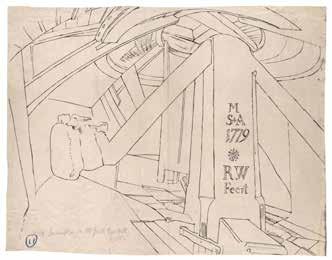
material was damp, quite a lot was actually sopping wet and full of mould and small animal life, and some had been attacked by mice”.
Alan spent many hours drying and cleaning the material, and then sent part of it to the Science Museum. Eventually in 2019 the whole collection was reunited at the Mills Archive.
Thanks to a grant from the National Manuscripts Conservation Trust, we were able to get this and a number of other drawings professionally cleaned and conserved.
www.millsarchive.org
36 | March 2024 - Milling and Grain

If you can think it, we can pack it!

With over 150 years of combined experience, we help you find your individual packaging solution. Over the years, we have developed machines that cover a range of weights from 50 grams to 25 kg for flour based products. In addition, we help you meet global environmental challenges without compromising on performance.















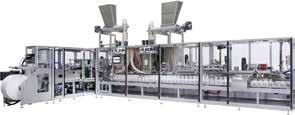


The Packaging Group GmbH · Germany · www.tpg-packaging.com
Let’s create your perfect flour packaging solution!
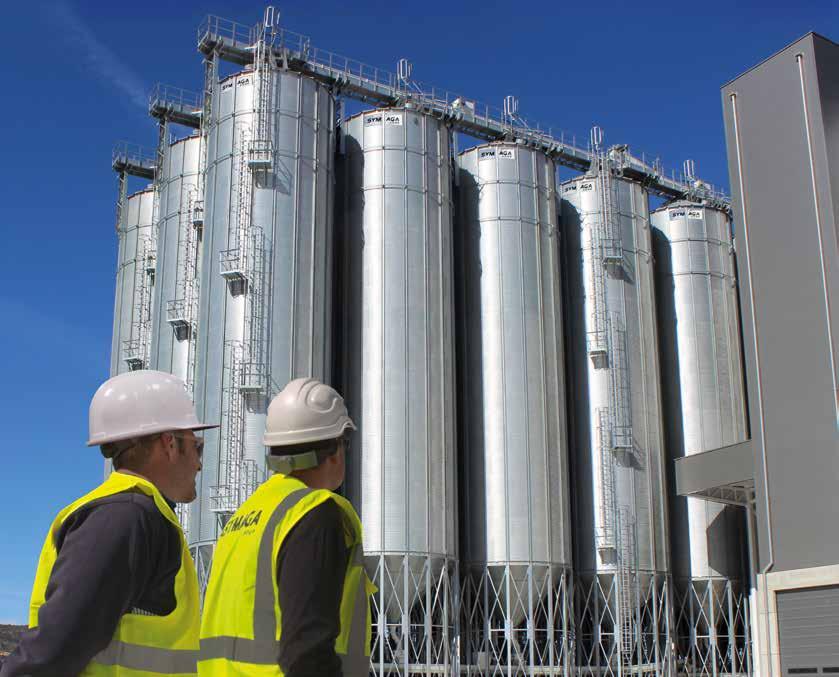
55 million m3 built Projects in 150 countries
New pendular and rotative sensors
ATEX 20 certified, the zone with the highest risk
· SY-DP1 Pendular . Robust and simple. It does not require power and maintenance.
· SY-DR1 Rotative . Sensitive. It has 2 operating modes depending on the density of storage material.
Top Project worldwide Flexibility and adaptability


symaga.com • +34 91 726 43 04 • symaga@symaga.com
A reliable
reliable
YOUR RELIABLE PARTNER
team for a
project
Cesco CEO delivers keynote address at IAOM MEA
Martino Celeghini, CEO of Cesco,
shared insights at the IAOM MEA Regional Milling Forum on crucial aspects of silo design and operation in industrial storage plants. Focusing on enhancing food security through efficient grain storage, the presentation explored various considerations from soil evaluation to operational safety measures.
The discussion began by stressing the vital role of grain storage in food security. Traditional methods, such as using gunny bags in warehouses, were deemed inadequate due to losses from rodents, grain deterioration, and pilferage. Modern storage facilities were presented as offering comprehensive solutions to protect grains and address food security concerns.

The significance of integrated plant design in silo operations was underscored, emphasising structural, architectural, and management design criteria as foundational elements for successful investments. Additionally, functional and operational design considerations, including process flow, product nature, and automation levels, were outlined.
Key factors influencing silo design were thoroughly examined, highlighting the importance of soil evaluation, including deep-water level analysis, to optimise excavation and foundation costs. Local regulations, particularly structural calculations for wind and seismic loads, were emphasised for their impact on design and investment costs.
Various types of silos, including raw material and process silos, were explored, discussing the advantages of different bottom designs in terms of investment, loading cycles, and contamination risks. Operational measures for safe storage were thoroughly examined, covering FIFO (First In, First Out) management, regular monitoring, effective cleaning, and pest control. Strategies for maintaining proper moisture content, controlling temperature, and implementing monitoring systems were highlighted to ensure material integrity and safety.
The presentation concluded with a call for integrated design approaches that consider both silos and steel structures, aiming to optimize static cooperation, simplify foundation design, and reduce unnecessary costs.

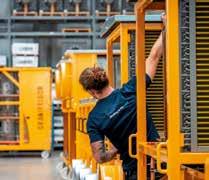

• Protection against insects & fungi • Without chemical treatment • Short amortisation period • Independent of ambient wheather • Low energy demand • No respiratory losses The natural way of grain preservation frigortec.com Made in Germany GRANIFRIGOR™ Grain cooling Milling and Grain - March 2024 | 39 Milling News


Ocrim acquires SIMA
Ocrim S.p.A., a Cremona-based company, top player in the milling sector, announced the acquisition of SIMA s.r.l. (Spresiano - TV, Italy), another key player in the panorama of storage facilities. This operation marks a significant step in Ocrim’s growth strategy, consolidating its position as a key player in the construction of milling plants, through the direct and specialised offer of complete solutions for storage plants.
Over the years, Ocrim has earned a global reputation for providing advanced technologies and cutting-edge services in the milling industry. The company has been a pioneer in integrating technological innovation with the practical needs of milling companies, offering tailor-made solutions that improve efficiency, quality, and sustainability in the processing of wheat, corn and cereals in general.
The acquisition of SIMA s.r.l. - specialised in the design and construction of storage systems that guarantee the optimal conservation of raw materials and finished products - was a strategic move aimed at expanding Ocrim’s offer and responding to the growing needs and requirements of the market. The integration of the skills of SIMA - present in the sector for over forty years - will allow Ocrim to offer complete solutions, covering the entire production chain, thus integrating the storage of cereal and finished products in the mill.
Ocrim CEO Alberto Antolini says “This acquisition represents an important step in our growth strategy.
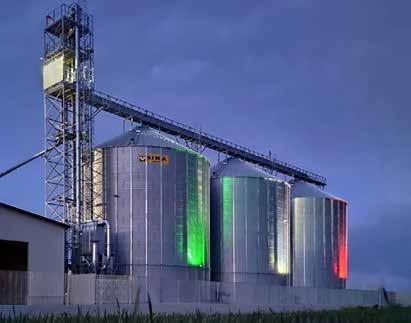
Above: One of Sima’s plants
Below: From left: Sergio and Alberto Antolini, respectively President and CEO of Ocrim
With SIMA’s experience and expertise, we are ready to reach new levels of excellence and meet the growing needs of our customers and to respond to the increasingly complex requests of the market which is looking for loyal, strong, and complete partners”.

The acquisition represents an exciting chapter in Ocrim’s success story. With a future-oriented vision and an ongoing commitment to innovation, Ocrim is preparing to reach new heights of excellence in the global milling market.
A SQUARE APPROACH FOR A WORLD WITHOUT FOOD WASTE.

DISCOVER OUR TAILORED SOLUTIONS ON OUR WEBSITE SCE.BE Milling and Grain - March 2024 | 41 Milling News
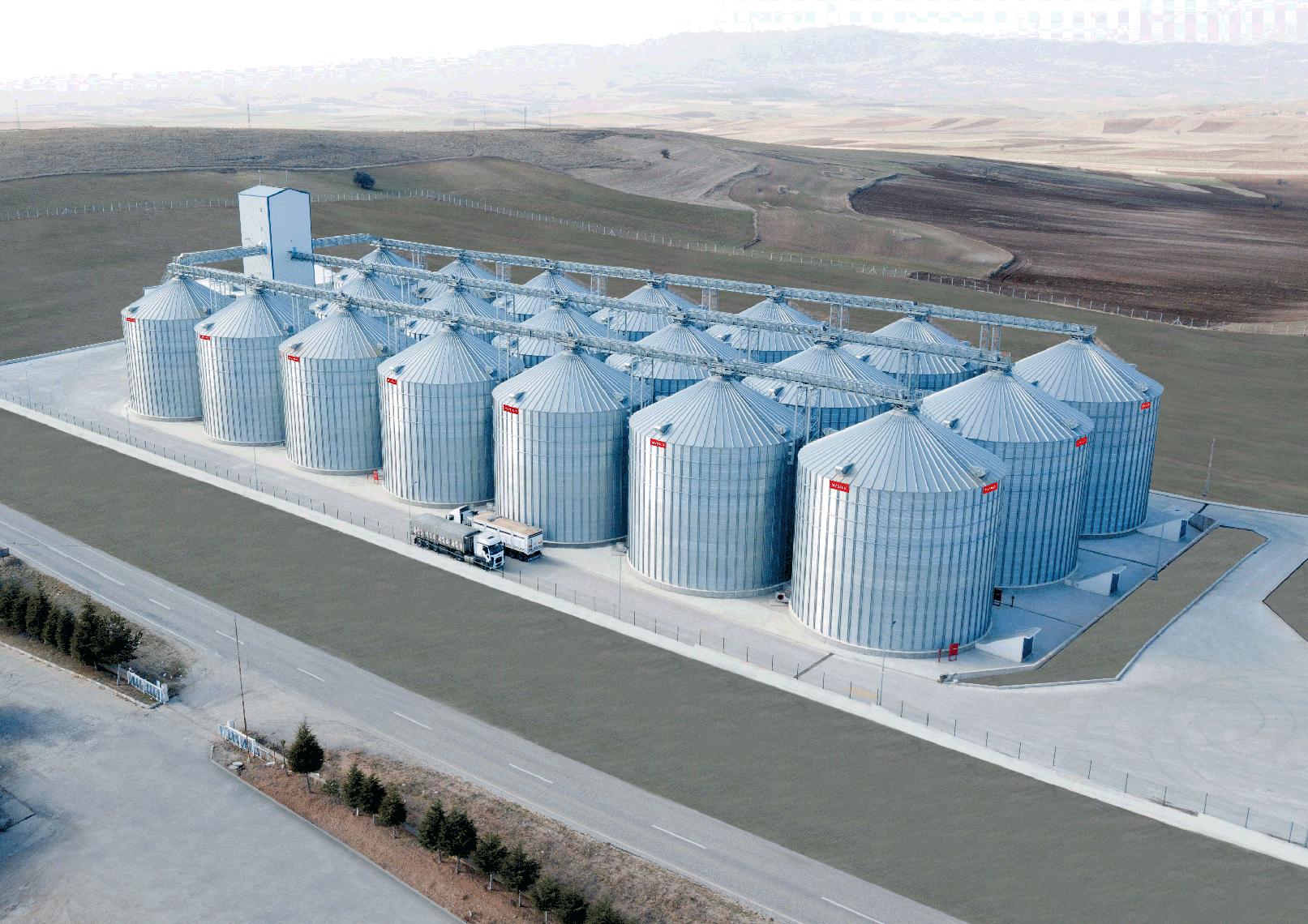

APPROX 40 MILLION TONS OF GRAIN IS SAFELY STORED IN MYSiLO SILOS.
CONTINENTS more COUNTRIES than 5 80’






more more CUSTOMERS PROJECTS than than 2000’ 2500’ HAPPY WITH MYSiLO GRAINS MYSiLO GRAIN STORAGE SYSTEMS INC.CO. Erenler OSB Mah. R. T. Erdoğan Blv. No: 30 Aksaray / TURKEY info@mysilo.com | www.mysilo.com | +90 382 266 22 45

Distance learning Distance learning PROGRAMME
We will be seeking enrolments from June ...

Spread over the study year, the cost of a module is less than £12 a week
Study increases competence thereby freeing up your time
All students are allocated a tutor with a wealth of specialist knowledge
C O S T E F F E C T I V E
T I M E E F F I C I E N T I N D U S T R Y E X P E R T I S E
F I N D O U T I F S T U D Y W I T H U S I S R I G H T F O R Y O U A N D Y O U R T E A M W E ' R E H E R E T O H E L P - F I N D O U T M O R E O N L I N E O R E M A I L U S : W W W . U K F L O U R M I L L E R S . O R G | T R A I N I N G @ U K F L O U R M I L L E R S . O R G
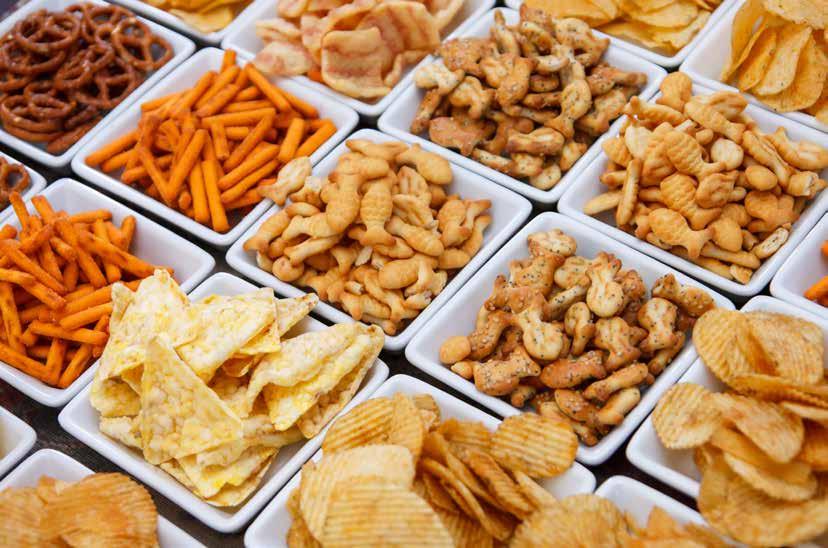
28th Annual Practical Short Course on Snack Food Processing
A one-week Practical Short Course on Snack Food Processing in cooperation with SNAC International will be presented on April 8-12, 2024, at Texas A&M University by staff, industry representatives and consultants.
The program will cover establishment of snack food facilities, operating principles of the three major types of extruders. This hybrid course offers an extensive look at the principles
and characteristics of extruders and support systems (drying, coating, packaging) for effective selection and operation. During this 4.5-day course, attendees will learn about establishment of snack food facilities, operating principles of the three major types of extruders, supporting equipment, fried corn and corn tortilla chips, friction extruder-puffed fried and baked snacks, single, twin-screw extruder snacks, high protein and whole grain snacks, cereal chips, fryers and ovens, packaging, and quality assurance. Participants completing the course will be awarded a certificate and are eligible for 30 professional development hours (PDHs). Reservations are accepted on a first-come basis. For more information, programs and application forms, contact: Mian N. Riaz, Ph.D, CFS, at mnriaz@tamu.edu

Milling and Grain - March 2024 | 45 TRAINING Mill
TRAINING Mill

KSU–GEAPS Grain Elevator Managers
The KSU–GEAPS Grain Elevator Managers course benefits individuals who are responsible for supervising grain managers. The course focuses on the science behind the practices used in grain management. It provides new managers with the information they need to correctly interpret the experiences they will have when managing grain quality, and the insight they will require when evaluating the practices used by their predecessors.
Course topics include personnel management; grain quality management; grain handling equipment; grain drying; grain operations costs; grain inventory management; grain receiving
and shipping; grain condition monitoring; grain aeration strategies; and fumigation.
Who Should Attend
Industry professionals who work in operations, procurement, management, or other grain holding roles.
Registration Information
The course date for this upcoming course is April 30 – May 3, 2024. The course fee is US$1,300, GEAPS members receive a 20% discount.
About the Organiser
The IGP Institute serves Kansas and U.S. commodity organizations through its global education centre housed in the Grain Science Complex on the campus of Kansas State University. This complex is home to the International Grains Program Conference Centre, Hal Ross Flour Mill, O.H. Kruse Feed Technology Innovation Centre and the Bio-processing and Industrial Value-Added Program.

We train the workforce of tomorrow. Expand your knowledge, exchange ideas and gain experience in our academies around the world.
Scan the QR code for more information.
millingacademy@buhlergroup.com

Let’s shape the future together
.
Innovations for a better world. 46 | March 2024 - Milling and Grain
Product Spotlight - The Holmen
NHP100 Portable Pellet Durability Tester
The Holmen NHP100 is Tekpro Limited’s entry level pellet durability tester used for calculating the Pellet Durability Index, also known as the PDI, of feed pellets by simulating pellet transportation environment from mill to trough.
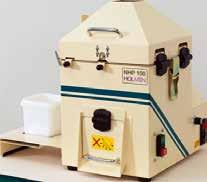
Mesh pellet hopper
Pellets
Airflow
The complete Holmen range of Pellet Testers represent the culmination of over 20 years involvement within the pellet manufacturing industry
The range consists of four models including the ever popular Holmen NHP100, which is supplied complete with a 2.5mm diameter mesh hopper as standard, although other mesh sizes are also available to suit aqua, poultry and larger cattle feed types.
Versatile Pellet Test Machine
The Holmen NHP100 portable pellet durability tester is a truly versatile entry level machine. Being portable it can be easily transported between different testing locations, requiring only to be placed on a flat stable surface to provide basic results for the operator It works by loading a pre-sieved sample of pellets into the test chamber which cascades them in an air stream causing the pellets to collide with each other and the perforated hard surfaces within the test chamber When testing is complete the pellets are removed for manual weighing. The 'pellet durability index' (PDI) is the difference between pellet weight before and after the test recorded as a percentage. The tester provides the ability to manually calculate test results with limited repeatable accuracy The operation is totally manual with a basic timer function only, unlike the manufacturers more advanced Holmen NHP200 where test length is adjusted according to pellet diameter
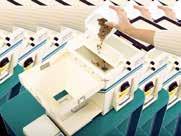
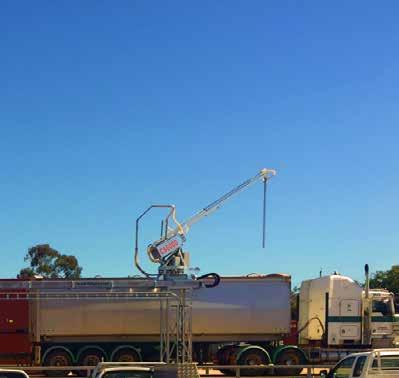


Holmen Testers Increasing In Demand Globally
The basic NHP100 is a popular machine for smaller companies, but quality focused feed mills typically now prefer the NHP200, this is due to its ease of use and the repeatable accuracy of the test process. For larger companies who manufacture pellets in bulk, Tekpro can also provide the Holmen NHP300, together with inline samplers to test directly after the press, before too much product has been produced, this can significantly help reduce the need for rework, and optimise production efficiency
The NHP100 has always been a very popular machine since it’s original launch, but as feed mills further strive for greater levels of automation and consistent repeatability of processes, both the Holmen NHP200 semi automatic and NHP300 inline pellet durability testers from Tekpro have significantly increased in demand from all around the globe.
To access further free information on the entire range of Holmen Pellet Durability Testers, exclusively Made in Britain by Tekpro, or to find out how you could join the growing number of pellet manufacturers already using Holmen to check their PDI, scan the following QR code:
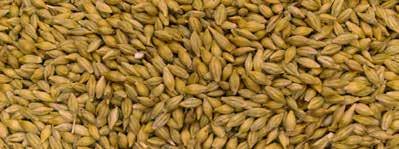

Made in Britain, Trusted Worldwide. We
are
FOCUS Product March 2024
In every edition of Milling and Grain magazine, we dedicate this page to taking a look at the products that will save you both time and money in the food and feed milling process.
Should you have a new product or service that you would like to feature on this page in a future edition of our magazine, be sure to contact us at editorial@ perendale.co.uk
NEW SIMILAGO II by Alapala
Alapala’s NEW SIMILAGO II roller mill is equipped with high technology electronic control systems for a continuous and consistent performance in the grinding of cereals, such as wheat, maize (corn), rye, spelt, barley and sorghum. The product level at the inlet bunker is controlled by using load cells, which sends signals via PLC to adjust the feed roll speed accordingly. Rotational speed of feed rolls is monitored against an unexpected stop due to belt problem, etc. Manual feeding gap adjustment mechanism ensures a uniform flow on feed rolls. The main motor load is constantly measured for protection against any possible damage, and the rotational speed of grinding rolls is monitored against an unexpected stop due to belt problem, etc.
The NEW SIMILAGO II is built to comply with the high sanitation standards and ensure food safety. The roller mill’s all front structure is isolated and smoothened against adhering and condensation risk.

Vane axial fans by GSI
For applications requiring high airflow at static pressures below 6” (depending on bin diameter), GSI offers vane axial fans in 12” diameter (1 HP) through 28” diameter (15 HP). Vane axial fans 18” and smaller use cast aluminium blades. Vane axial fans 24” through 28” use durable composite airfoil blades that are lightweight for easy starting and function well in this type of environment.
The 12” through 28” (1-15 HP) units feature a 3450 RPM motor for increased fan performance and energy efficiency. Close fan blade tip clearance and straightening vanes provide maximum air flow and reduced turbulence to ensure smooth and consistent airflow. All 24” and 28” vane axial fans also include a durable plastic inlet venturi which funnels air more efficiently into the fan.
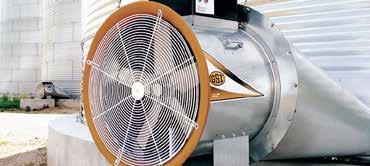
Polybutadiene Rubber Ball by Rubtech Mech INDIA LLP
The company has conveniently developed Rubber Ball Sieve cleaners for edible materials which are for human consumptions; the basic Rubber compounds and specimen were duly tested by SGS & passed with distinction inconformity to all of the US FDA & EU regulations. This ball cleaners have been developed after consistent research in compound (recipe) designing with base elastomer Polybutadiene.
The resilience of this rubber balls is exceptional; thus, it leads to an extra yield of the sieving process. The abrasion resistance is very high; thus, the wear rate is minimal, leading to enhanced service life. The rubber compound used for these balls is Certified Food Grade as per US FDA, EU & Japan Regulations.
www.rubtechmech.com
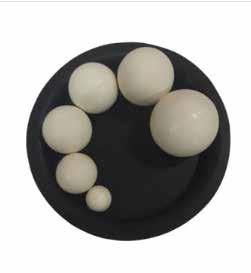
“SF” Volumetric Screw Feeders by Essmueller
Volumetric Screw Feeders are used to control the flow rate of bulk material from a bin or hopper. They are designed to be flood fed, so that regardless of the amount of material in a hopper above the inlet, the outlet rate will remain consistent. Screw feeders are available to feed a wide range of materials.
Essmueller screw feeders are available in standard trough lengths, and in sizes to suit almost any need. They are available in single, double, triple and live bottom configurations. Multiple screws are used to control the flow rate of bulk material that tends to bridge a bin or hopper. Live bottom screw feeders are designed to be mounted under bins to control the flow rate of material that tend to pack or bridge. Tapered pitch or variable pitch screws are used in screw feeders to draw the bulk material evenly from all areas of inlet opening.
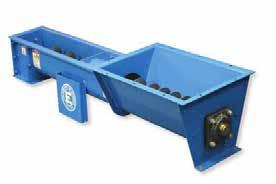
GRANIFRIGOR™ Europe by FrigorTec
The GRANIFRIGOR™ Europe range of grain cooling units are performance- and energy consumption-optimised for the temperature and humidity of European temperate conditions. They can be used to reliably cool grain in temperate climates (rain, fog, head and cold) - assured control of air humidity due to HYGROMAT™ automatic. Complete suitability and reliable operation even at high ambient temperatures due to safe refrigerants. The units have a standard medium pressure version - ideal for tower silos too.
FrigorTec grain cooling units are based on a sophisticated modular system and offer the following features:
Fully automatic Siemens S7 controller
Remote-controlled operation via FrigorTec app
Rigid, welded frame construction
Partially soundproofed housing UV-resistant external cable
Eyelets for lashing on every housing corner
Pressure-stable cooling air high pressure fans
Filters for the cooling air supplied to the grain
Compressors, for example from Bitzer/ Germany
Multi-coated steel parts
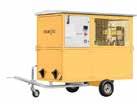
48 | March 2024 - Milling and Grain
mymag.info/FVCq www.frigortec.com www.alapala.com mymag.info/DcAR mymag.info/WoIG www.grainsystems.com www.grainsystems.com
http://essmueller.com mymag.info/ghaz


FOCUS Special
Sweep Auger
Decades of Sweep Augers by Denis
In 1973, the Sweep Auger version A was developed to empty grain cone in silos equipped with raised floors. This consisted of a Tubular Screw Conveyor, installed under the floor, driving a Sweep Auger via bevel gears and a clutch.
Since this combined solution did not responding to all projects, they developed in 1975 the Sweep Auger version B that no longer had Tubular Screw Conveyor and whose motor was placed in a gallery under silo.
In the years that followed, developments focused on the evolution of Sweep Augers beams to remove parking positions which complicated the management of grain bins. It is now possible to stop the Sweep Auger regardless of it position in the silo. It is no longer necessary to totally empty the bin to refill it, which a remarkable progress.
In 1980, design of the Sweep Auger version C with the motor in the bin and a belt transmission was made. This model proves to be a more economical solution by simplifying the project design and eliminating galleries under the silos.
Supply of Sweep Auger C increased to around the world, including a major project of 64 units in Algeria.
In 1990, to increase the safety of cereal storage facilities, belt transmission was replaced by a direct drive via a bevel gearbox and this gave rise to the Sweep Auger version D.
In 1993, numerous orders received for the machine including
from the Hungarian state project to ensure the country’s food security with 120 Sweep Augers D for Ø18m silos.
In 2000, the Sweep Augers version BM replaced the version B to eliminate the belt transmission in favour of a direct drive via a bevel gear.
In 2003, as standards and directives evolve and with a view to increase the cereal storage facilities safety, Denis obtained Atex certification for entire range; Atex Ex II2D type certification by INERIS. And in 2010, embedded rotating brush was added on to Sweep Augers to clean silo’s slab. This Sweeping Brushes, called Rotobrosse, are available on the entire range and are Atex certified.
In the same time, with the market evolved towards larger diameters and an increase in sweeping capacities, hence the company developed the Sweep Auger version BM.GM to meet the need for sweeping wood pellets stored in round bins, a booming market.
In 2020, the modernisation of the Sweep Auger range continued with the Sweep Auger version D.Ind and version BM.Ind with a view to meet specific needs such like use rate, sweeping capacity, product to extract etc.
And in 2023, the company hit a milestone by manufacturing 15,000th Sweep Auger for an order of 26 Sweep Augers BM.GM for Ø32m silos of an industrial project in Angola.



Milling and Grain - March 2024 | 51
mymag.info/MAGTV
Product videos
MAG TV features many product videos related to the milling industry - alongside interviews, event reviews and much more
ai-lati.com


simaimpianti.net



BEYOND MAKES US SEE KNOWLEDGE
HORIZON paglierani.com ocrim.com
THE
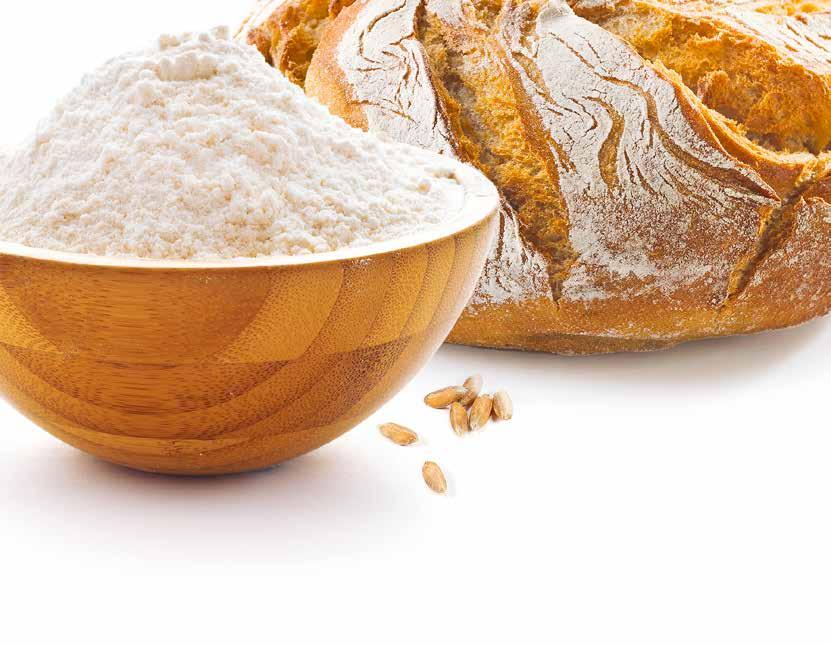
Sustainability
The business case for sustainability in the milling industry
by Jay O’Nien, Environmental Impact Services Lead; Giulia Manzolini, Environmental Quantification Program Lead; Thomas Reichert, Head of Sustainability for the business area Milling Solutions & Beatrice Petit-Conde, Sustainability Officer, Buhler, Germany
The pressure on companies to quantify and reduce their environmental footprint is increasing. First, a new EU regulation has entered into force – the Corporate Sustainability Reporting Directive (CSRD) – that impacts approximately 50,000 companies in the EU. Second, more than 5000 companies have voluntarily signed up to the Science Based Targets initiative (SBTi) or are setting net zero goals. In the words of Peter Bakker, CEO of the World Business Council for Sustainable Development: “Sustainability is going mainstream for governments, business, consumers, and financial markets.”
Sustainability requirements
With approximately 2.6 billion tonnes of cereals and grains processed each year and more than 5000 companies setting sciencebased targets to reduce emissions, the milling industry has a golden opportunity to lead decarbonisation efforts and reduce the environmental footprint of consumer products. Coupled with increasing pressure from governments to report climate action, companies must quantify, understand, report, and reduce the environmental footprint of their manufacturing sites and their products.
The Corporate Sustainability Reporting Directive (CSRD) requires that, from 2025, companies that meet two of three criteria – 500+ employees, at least EUR€20 million in total assets
or more than EUR€40 million in turnover – “publish regular reports on the social and environmental risks they face, and on how their activities impact people and the environment”. In terms of climate issues, they will have to define their governance structure, climate metrics and targets, reduction strategy and quantified risk management.
Metrics and target reporting requires companies to:
• Calculate the Scope 1, 2 & 3 footprint according to the GHG Protocol
• Set targets to reduce emissions
• Build a climate transition plan to achieve targets and track progress
As more retailers and food processing companies quantify and reduce their full GHG footprint, they will look for primary data and reduction measures from their supply chains and encourage suppliers to set science-based targets.

MAXIMISED FLOUR MILLING 54 | March 2024 - Milling and Grain
Figure 1: 2100 warming projections (16).
Science-based targets
More companies are signing up to the Science Based Targets initiative (SBTi), which requires companies to quantify their GHG footprint and set targets that follow the 1.5°C or “well below 2°C” line, with short-term goals to 2030.
In a typical footprint for food retailers and processors, most emissions come from their supply chain, known as Scope 3 Category one Purchased Goods & Services in the GHG Protocol – the raw materials purchased to create food products. Thus, retailers and food processors rely on the milling industry to quantify and reduce their footprint, as this in turn reduces the footprint of the final product provided to consumers. They also form an important link in the supply chain between farmers who produce cereals and grains and the product used by downstream food processors to create consumer products.
Quantification of the carbon footprint at product level enables a more data-based discussion of reduction measures across the supply chain, and greater opportunity to finance carbon reduction initiatives in all areas of the value chain.
Quantify sustainability in milling
Two main standards exist to quantify environmental impact: the GHG Protocol and the life cycle assessment (LCA).
Greenhouse Gas Protocol
Scope 1 includes direct emissions by sources owned or controlled by an organisation e.g., emissions from combustion of fossil fuels in boilers and vehicles.
Scope 2 includes indirect emissions resulting from the generation of electricity, heat, or steam that an organisation purchases. These are not controlled directly by the organisation, but they can exercise some control by choosing their electricity or heating plan.
Scope 3 includes all other indirect emissions from upstream and downstream activities, such as the production and transportation of purchased goods and services, employee commuting, and waste disposal.
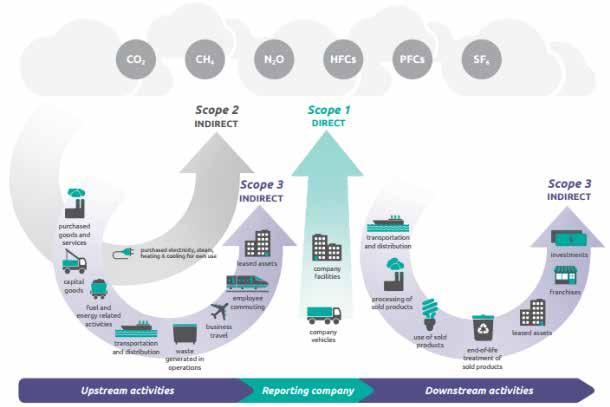
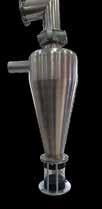
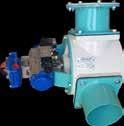






Milling and Grain - March 2024 | 55 F
Figure 2: Greenhouse Gas Protocol
Greenhouse Gas Protocol
A GHG assessment quantifies the CO2e (CO2 equivalent) impact of the entire business every year by splitting emissions into Scope 1, 2 or 3. This is both a regulatory and an SBTi requirement and can be certified to either the GHG Protocol or ISO 14064.
Life cycle assessment
The second method is the life cycle assessment (LCA), where assessments can be certified to ISO 14067. An LCA measures the impact per unit of the final product, taking into consideration the impact across the entire value chain.
An LCA requires a functional unit, such as 1kg of flour. The methodology considers all stages of the value chain, including raw material extraction (in the milling industry this is farming), processing, transportation, consumer use, and end-of-life disposal for this unit of product (it can also be shortened to factory gate,
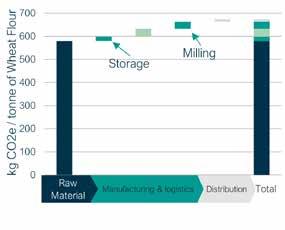
after processing). An LCA can also take other metrics into account, such as water consumption potential and agricultural land occupation.
Typical LCA for flour
Where GHG accounting fulfils legislative requirements, an LCA is a powerful tool in understanding carbon hotspots across the value chain, where to focus sustainability efforts, and how to communicate sustainability reduction measures to customers, investors, and consumers.
Figure 3 shows the typical footprint of flour. The exact figure will change depending on several factors, including the farming methods, logistics routes, storage conditions, milling performance, wheat and flour type, packaging, etc. However, some general assumptions can be made:
• Typically more than 60 percent of flour emissions originate from the grain (e.g. wheat, oat, barley, maize). Therefore, avoidance of waste and optimisation of yield in the milling process is critical
• Unless the grain is dried, cooled/heated, heat treated or extensively fumigated, most of the Scope 1 & 2 emissions originate from Scope 2 for a mil
• Where the grain is dried, cooled/heated, heat treated or extensively fumigated, Scope 1 emissions can be large
• Logistics contributes a significant proportion of the emissions per tonne of flour, particularly where there is long transportation by lorries
• Packaging has a small CO2e footprint but is important in reduction of waste.

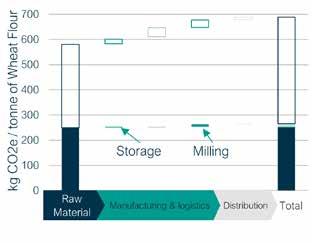
Another advantage of an LCA is quantification of the impact of multiple metrics. Figure 3 shows a typical carbon footprint of flour. The same analysis method can be used to quantify m³ of water and m²a of land per tonne of product. Multi-metric analysis is important in order to ensure that reduction or optimisation measures do not negatively impact other categories.
Reduce the environmental footprint in the milling value chain
When companies sign up to the SBTi, they commit to measuring and reducing emissions consistent with the level of decarbonisation required to keep global temperature increase to 1.5 degrees compared to pre-industrial levels.
The following section provides an overview of the key steps required to reduce the environmental footprint across the entire milling value chain. The LCA analysis is a powerful tool in enabling collaboration and data-based decision making for reduction of the environmental footprint of flour, as shown in Figure 5. Where possible, reduction measures that have a return on investment should be made first (example Figure 6).
Reduce Scope 1 & 2 emissions
The CO2e emissions in the milling process can appear small when compared with the raw materials (particularly when no regenerative agriculture is in use). However, energy reduction measures typically have a fast ROI and should therefore be done first. Actions taken in the mill can also increase yield and reduce Scope 3 emissions.
Reduce Scope 1 emissions:
Where grain is dried, optimise heating processes using retrofits such as heat recovery or heat pumps to reduce energy use, save






 Figure 5: Example reduction of the flour footprint
Figure 4: Flour as the main ingredient in a downstream product
Figure 5: Example reduction of the flour footprint
Figure 4: Flour as the main ingredient in a downstream product
56 | March 2024 - Milling and Grain F
Figure 3: Typical CO2e footprint of flour, Bühler calculation



Your Team for Great Flour



















The Flourists, Part 5: Baking Technology Protecting Baking Traditions through Innovative Ideas.



Baking industry demand for suitable ours is rising globally, and we’re supplying highly speci c answers. Developers of individual our treatment concepts: The Flourists, an interdisciplinary, worldwide networked team of experts who put their all into adapting our characteristics to the requirements of local baking ap-


plications. Thanks to our regional Technology Centers, customers get unique our additives developed locally, that are designed speci cally for local baking traditions and varying grain qualities. The result: Diversity in baking culture and consistently good baking quality in ours, for professional and home use. #the

ourists muehlenchemie.com
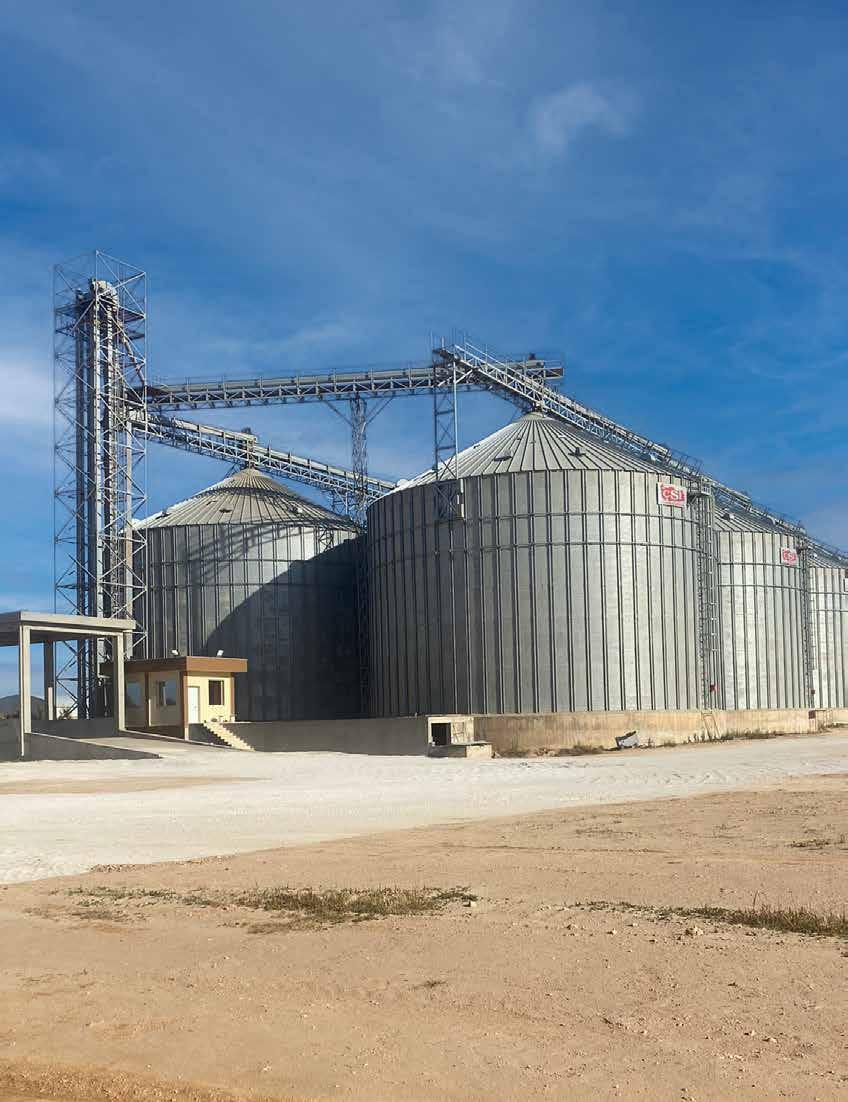





cost and emissions. If possible, use alternative combustion sources to natural gas; e.g. electric, biogas.
Prioritise food safety and quality to reduce waste and optimise important resources. In particular, optimise pest control to ensure minimum and effective fumigant use. Continuously track quality parameters to identify intake or process changes.
Quantify & manage use of industrial gases (such as fumigants in grain storage) and refrigerants (for example in air conditioning units). Use alternative or modern refrigerants to avoid high environmental impacts, an alternative cooling source in production to avoid refrigerant usage and ensure constant maintenance and upgrades for reduced energy consumption and leakages.
Optimise Scope 2 emissions:
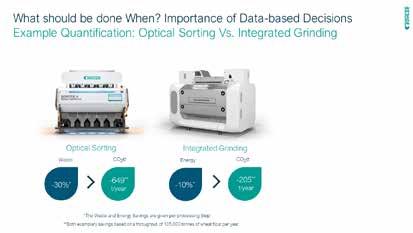
Use smart sensors to measure energy consumption across the entire milling process, avoid energy spikes, minimise machine idling times and maintain an overview of equipment status.
Use predictive maintenance to ensure operational efficiency, in particular replacing milling rolls before excessive wear in order to reduce power consumption spikes. Worn-out rolls can consume up to 40 percent more power.
Predictive maintenance will also optimise logistics of spare and wear parts, saving money and emissions.
Keep the equipment around the processes up to date, for example replacing old lighting systems with LED lighting.
Optimise air use by installing frequency converters and reducing air speed for pneumatic conveying, air rinsing and aspiration. Also minimise air leakages, improve pipe layouts and reduce bends.
Optimise power supply and motors, ensuring that motors operate >60 percent load and use the most efficient transformers.
Manage your production efficiently by optimal production planning, intelligent process routing and automatic process reactions to exceeded values with automation solutions.
Use of renewable energy
The use of renewable energy reduces Scope 2 emissions to zero and Scope 3 emissions of energy production close to zero. Renewable energy is a critical step in the net zero journey. Three key methods increase the use of renewable energy:
• Produce renewable energy on site (such as solar panels, direct drive from water sources)
• Buy renewable energy certificates (from electricity providers or energy brokers)
• Develop a power purchase agreement (PPA)
An energy strategy should reduce consumption (e.g. switch off appliances not in use) and optimise consumption (e.g. better machinery) as much as possible. When considering the product and/or procurement of renewable energy, take into account the following key points:
• Ability to use on-site renewables (e.g. solar, heat pumps)
• Availability of local infrastructure
• Costs per tonne of CO2e reduced
• Return on investment using different methods
• Business risk (e.g. long-term contracts)
PPAs often create new renewable energy infrastructure and can guarantee energy prices over the long term, but

projects are subject to availability, have long lead development times and are suitable only when procuring enough energy (unless the PPA is split with other companies).
Renewable energy certificates have been criticised (for example, in the Corporate Climate responsibility monitor). However, their purchase can be an effective method of making up the remaining kWh not covered by PPAs or on-site production.
When communicating the renewable energy strategy, it’s important to transparently report emissions – for example, kWh consumed, kWh reduced, location CO2e and market-based CO2e.
Reduce Scope 3 emissions – from the mill
The cleaning section of a mill is critical because increasing raw material yield and quality, and reducing waste are the biggest levers to reduce CO2e per tonne flour.
The cleaning section in a mill does not consume as much electricity (Scope 2 emissions) as the milling section, but improved cleaning improves the quality of the final product
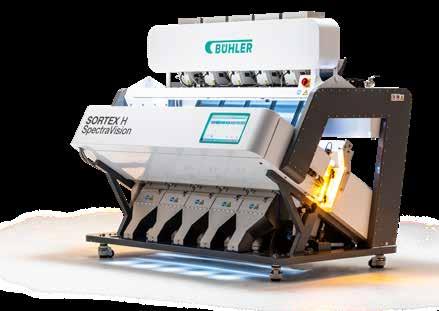 Figure 5: Example reduction of the flour footprint
Figure 6: Importance of data-based decisions
Figure 5: Example reduction of the flour footprint
Figure 6: Importance of data-based decisions
Milling and Grain - March 2024 | 59 F
Figure 7: Bühler Sortex H optical sorter
(which can reduce waste in the downstream processing, such as baking steps) and reduces the input per tonne of the final product, thus reducing Scope 3 emissions.
For example, the Bühler Sortex machine, seen in Figure 6, is an optical sorter that pre-cleans grain inputs and enables a reduction of up to 30 percent in false rejects. The yield increase brought about by accurate sorting improves profitability and results in up to 649 tonnes of CO2e saved in a typical milling line with a throughput of 600t per day per line.
Sustainable packaging, such as recyclable materials, will reduce the CO2e footprint. However, the material must be well protected by the packaging in order to avoid waste.
Reduce Scope 3 emissions – working with suppliers
To address the most significant part of emissions, it is essential to source raw materials sustainably.
As shown in Figure 3, the raw materials can comprise up to 95 percent of the footprint of flour. The key footprint components are fertilizers, pesticides, emissions on the field, irrigation, and fuel from farming vehicles. Farmers therefore are adopting more regenerative practices to reduce emissions on the field, such as use of cover crops to fix nitrogen into the soil, more precise dosing of fertiliser, the use of green manure to reduce fertiliser emissions, and minimising tillage to preserve soil structure and reduce on-field emissions. Such measures are already proven to significantly drop the environmental footprint of raw materials.
Traceability and quality
The focus of milling companies should be on gathering data from suppliers to increase the volume of primary data in CO2e
quantification and increasing traceability of the value chain. Connection of the footprint of raw material production to the consumer product creates a data-based discussion on reduction measures, enabling the responsibility and capital available for reduction measures at farm level to be shared among all players along the value chain.
More data on the input raw materials will also improve processing efficiency and thus quality of the consumer product. As the industry faces more critical decisions, such as when to source local or imported grains, how to reduce products that go to animal feed or increase wholegrain flours, environmental metrics such as CO2e per tonne of flour can be used as key decisionmaking criteria.
The race is on to 2030. Many governments and companies have made bold commitments to quantify and reduce carbon emissions, and to avoid an increase in global warming of 1.5°C. With more than 2.6 billion tonnes of grain processed globally, the milling industry has an important role to play in the fight against climate change.
Regulatory requirements demand that companies have stronger oversight and communications in four key focus areas: governance, strategy, risk management, and metrics and targets.
Metrics and targets require a robust quantification and pragmatic reduction plan, identifying the initiatives with the fastest ROI first. LCA assessments are a powerful tool in identifying carbon hotspots and can focus reduction efforts and capture the value of sustainability by supporting downstream food processors. This will enable companies to create a competitive advantage and build a favourable business case for sustainable products. When sustainability is profitable, it will create impact at scale.
















































60 | March 2024 - Milling and Grain F
Nitrogen Generator - Pesticide Free Fumigation
The CROP-PROTECTOR Nitrogen Generator is used for efficient infestation control
The principle of Nitrogen fumigation is to flush pure Nitrogen into the silo/storage container and thereby create an Oxygen free environment. The low level of Oxygen inside the silo will gradually kill almost all insects, mites, and fungi. First, they will be paralyzed and with longer treatment terminated. This “green” and “natural” fumigation is ideal to fumigate organic products.
The CROP-PROTECTOR Nitrogen Generators use a Pressure Swing Adsorption (PSA) system to generate the Nitrogen. Distribution of the Nitrogen is possible through a simple network of hoses and valves to the storage containers.
Inside the storage containers an iGRAIN Oxygen sensor monitor the flushing process and the decreasing Oxygen concentration, thereby creating the lethal modified atmosphere.
Advantages
• Green fumigation technology - also for organic products
• Efficient infestation control
• O2 sniffer cables report the Oxygen conditions in each silo cell
• Suitable for all types of crops: Nuts, beans, fruit, grains etc
• Data available in the iGRAIN Dashboard Manager, local PLC/ SCADA system and via the iGRAIN Smart App
Nitrogen is especially effective for preservation of:
• Beans
• Wheat
• Rice
• Nuts
• Coffee beans
• Maize
• Lentils
• Rapeseed
• Vegetables
• Cocoa beans
• Fruits
• Pasta
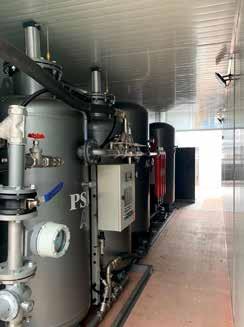
Nitrogen Generator

Control system

CROP-PROTECTOR.COM • INFO@TOXI-SCRUB.COM • +45 31 68 39 00 • DENMARK
N2 distribution overview MANIFOLD Connection to manifold S1 S2 S3 S4 S5 S6 S7 S8 N₂ GENERATOR
NITROGEN FUMIGATION
The organic way for safe long-term storage of grain, pulses, and vegetables
by Peer Hansen, Biochemist, R&D Director of CROP-PROTECTOR, Denmark

Food is lost or wasted every year during storage, which harms the environment, the economy, farmers, and the people who need food the most.
FAO (the Food and Agriculture Organization of the UN) says that one out of every three food items in the world is either lost (14 percent after harvesting) or wasted (17 percent at retailers or consumers). This is equal to 8-10 percent of the greenhouse gases that warm up the planet.
To put it into further perspective, a one percent reduction in grain loss means saving approximately 27 million tonnes of grain, enough to feed about 70 million people for a year.
This technology has already been implemented in more than 100 silos holding from 2 - 9,000 tonnes of grain.
Grain losses during storage

Nitrogen fumigation is a technology that can be applied to effectively terminate biological activity in grain storage silos. This secures a long and safe storage time and prevents losses.
Improved technologies have enabled a larger production of nitrogen at grain storage sites with capacities of up to 600 m3/ hour in one 40’ container or equivalent space. The cost of nitrogen generation is reduced compared to earlier technologies.
Below, is an overview of how nitrogen fumigation can be implemented using the CROP-PROTECTOR Nitrogen Generator.
The causes for grain losses during storage are many and includes pest infestation (insects, birds, and rodents) and microbial infection (fungus, bacteria, mites, etc.). Other factors are changes in moisture content, poor handling, poor sanitation, and incorrect grain aeration. These losses occur throughout the post-harvest period, which spans from harvest to milling. Unlike crop losses during growth, which can be compensated by further plant growth, post-harvest losses cannot be recovered.
Many losses are due to technical inefficiencies and grain storage procedures that are not adequate relative to the environment/ climate of the storage silos. Since crops are harvested in specific seasons and stored until consumption, measures must be taken to preserve the stored grain. Three technologies in particular can be used to minimise losses in a sustainable way and without the use of pesticides; they are:
• Automatic aeration control of the grain silos.
• Use of chilling machines to cool the grain down.
• Application of a modified atmosphere to store the grain, such as nitrogen.
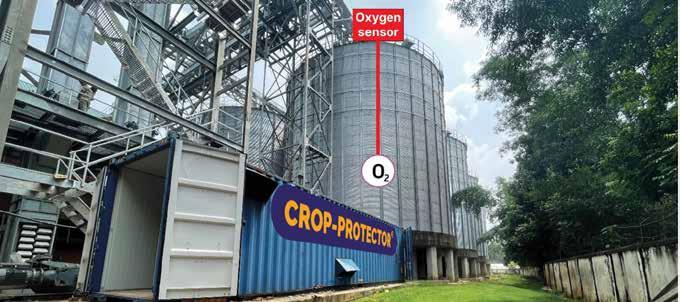
62 | March 2024 - Milling and Grain F
Illustration B: iGRAIN® sensor system report the conditions of the flushing process (O2) in each cell/silo. The illustrations show how a nitrogen fumigation system can be installed in both new and existing grain silo facilities.

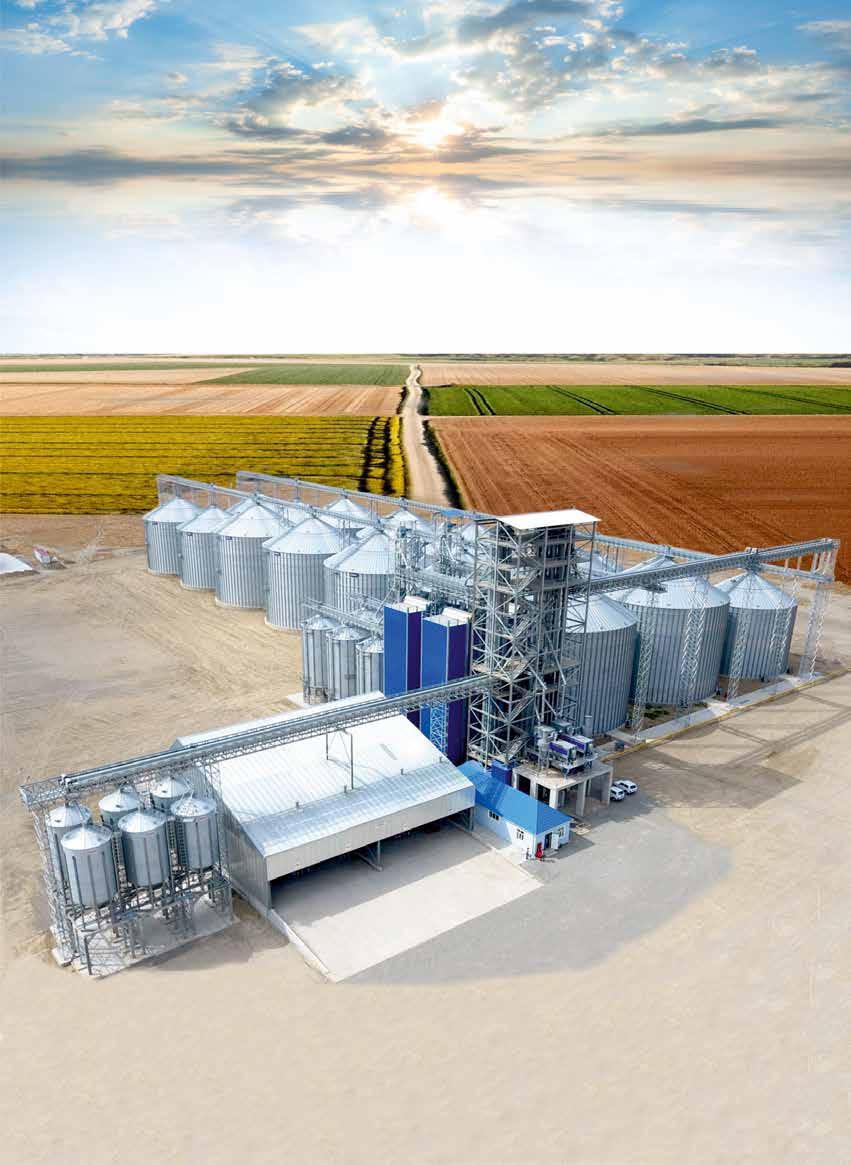

120.000 TONS G R O U P ELECTRIC MOTORS & GENERATORS

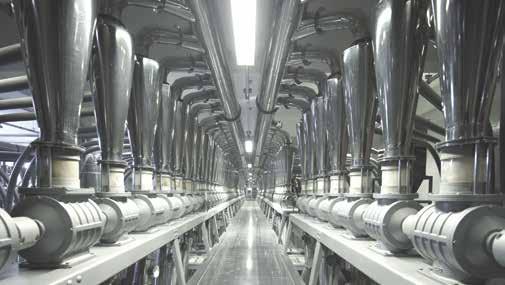


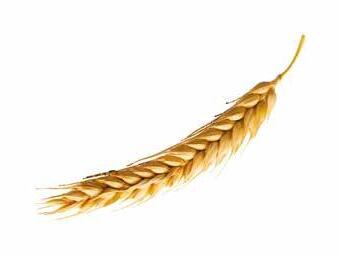




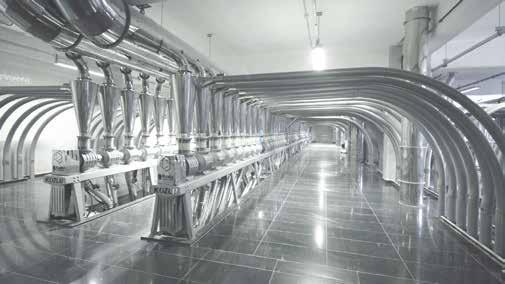
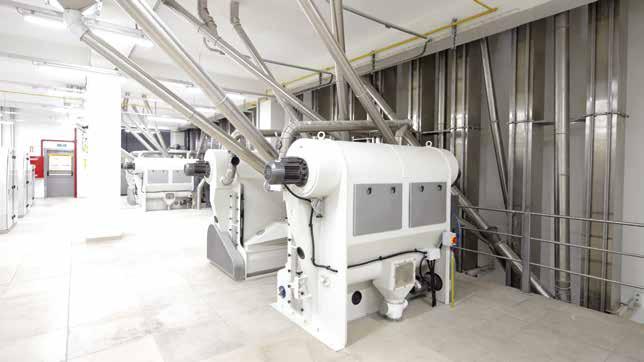

These technologies have different advantages under different circumstances. Table 1 below compares three technologies often used to preserve stored grain.
The demand for nitrogen fumigation is increasing for several reasons. First it is a gentle ‘natural–green’ and environmentally friendly type of fumigation and can be used to preserve all types of grain including organic products. It also solves two major challenges for the safe storage of grain because it works without the use of pesticides, and it copes with the increasing problem of resistance against the most used pesticide phosphine (PH3).
What is nitrogen, and what is it used for?
Nitrogen (N2) forms about 78 percent of the Earth’s atmosphere, it is odourless, tasteless, and colourless. Nitrogen is widely used in the food and beverage industry to create a Modified Atmosphere and replace the air (Oxygen) to keep products fresh and safe for a longer time. Nitrogen is also used in many other industrial applications. In the below, the focus is on nitrogen fumigation as an alternative way to safely store grain in big silos.
What is nitrogen fumigation of stored grain?
Nitrogen fumigation works as follows:
The nitrogen is flushed into a silo. The nitrogen flows through the grain in the silo and modifies the ambient air (21 percent oxygen and 79 percent nitrogen) in the interstitial space between the grain kernels.
Gradually, the nitrogen concentration increases. The concentration of nitrogen should be as high as possible. The oxygen concentration should be reduced to maximum 2.5 percent, and preferably down to 1.0 percent. The lower the oxygen, the more efficient the ‘killing’ of insects and reduction of other biology like fungus etc.
Once the oxygen concentration has reached a low level, it must
be maintained for a certain ‘reaction time’. This time is dependent on many factors, especially the grain temperature. Higher temperature is better because the biology requires more oxygen when the metabolism is increased at higher temperatures.
How is nitrogen produced?
For large scale application, nitrogen must be produced on site. The most economical way to produce it, is via a process called pressure swing adsorption (PSA). Basically, the process has the following steps: first compressed air is generated, then the air is dried in a freeze drier, and then nitrogen (78 percent) and oxygen (21 percent) are separated in an adsorption process. In principle, this is a simple process, but reaching a high throughput with a high nitrogen purity (above 99 percent) requires sophisticated technology.
Nitrogen production has also changed considerably over the years. Pressure-Swing-Adsorption systems (PSA) have improved in energy efficiency. Cases with 10.000m3 silos has been purged to below 1.0 percent O2 in a few days, reaching a lethal low concentration of oxygen to terminate unwanted biology. The time it takes to flush a silo and reach a low Oxygen concentration depends on how well the silo is sealed.
Example - The CROP-PROTECTOR® Nitrogen Generator
The CROP-PROTECTOR Nitrogen Generator is a new generation Pressure-Swing-Adsorption systems (PSA) with high energy efficiency and efficient generation of Nitrogen. The generator allows nitrogen purities of 98.0 percent - 99.95 percent. Capacities range from 50 - 600 Nm3/h.
The system is integrating a series of components to separate the Nitrogen from air. These are: an intake filter unit, screw compressor, purification system, air freeze dryer, molecular sieve with adsorption towers, and nitrogen buffer tank where the nitrogen is stored. From there a distribution system of valves and



Technology Applicable in which climates Main advantages Main disadvantages Effect on insects Effect on fungi and bacteria Price per tonne (incl. Investment depreciation*) Nitrogen (MA) All Terminates a wide variety of biology Complete termination possible Significant reduction USD 0.25/tonne Cooling / chilling Mostly in hot climates Puts a wide variety of biology to sleep Repeated treatment needed as grain warms up Sleep If grain is wetted fungus will start to grow if only shortly USD 0.35/tonne (per treatment) Automatic aeration control All In most climates it is inexpensive if started immediately after storage Only very few suppliers. Not always adequate in hot climates Sleep Sleep USD 0.5/tonne BOURNE AES R C H & RECRUITMENT SELE C T I NO � CHIEF COMMERCIAL OFFICER � GENERAL MANAGERS � MANAGING DIRECTORS � CHIEF MILLERS � FEED & POULTRY MANAGERS � MAINTENANCE MANAGERS � R&D NEWPRODUCT DEVELOPMENT � SALES & MARKETING � PLANT MANAGERS � CFO’S ���� bournerecruitment.co.uk ���� +44 7764 465 897 THE EXPERT IN FEED, FLOUR MILLING AND FOOD PRODUCTION RECRUITMENT POSITIONS RECRUITED: RECRUITING GLOBALLY Milling and Grain - March 2024 | 65 F
Table 1: Comparison of three technologies often used to preserve stored grain

hoses secure the nitrogen distribution to the silos/storage tanks. The system includes a Siemens HMI with an easy-to-use menu driven automatic control system.
The CROP-PROTECTOR Nitrogen Generator is used together with an iGRAIN® sensor system, which monitors the flushing process and the condition of the stored grain. All the measurement data from the iGRAIN sensor system and the oxygen/nitrogen concentrations are available to the operator via the iGRAIN Dashboard Manager and in the iGRAIN Smart App. This makes it easy to control the fumigation process.
The CROP-PROTECTOR® is permanently installed either in a 20’ or 40’ HQ container or delivered on a skid-frame system for local installation. Normally, the generator is placed near the storage silos for easy application. The nitrogen is distributed from the buffer tank by the generator via connection hoses and a valve/manifold system to the relevant silos.
Which commodities and applications are suitable for nitrogen fumigation?
Table 2 gives a small overview of the many applications where nitrogen is already applied.
Nitrogen has been used for preservation of high value commodities for many years. New technology now makes it feasible to store larger amounts of grain with nitrogen.
Scientific validation of nitrogen fumigation efficiency
Researchers have studied the use of pure nitrogen and other modified atmospheres to control infestation of stored crops. The application for pest control has been studied for more than 50 years. Research has been carried out in different industrial silo structures targeting populations of many species such as the rice weevil (Sitophilus O.), the saw-toothed grain beetle (Oryzaephilus S.), the red flour beetle (Tribolium C.), and many more. Most trials resulted in complete or partially complete mortality of insect-based pests.
The findings can be summarized that to be effective for control of all stages of grain insects an atmosphere should reach an oxygen concentration of 1 – 2 percent and be applied for a minimum of 5 - 14 days. The research has shown that several parameters influence the efficiency of nitrogen fumigation; these parameters include temperature, relative humidity, and exposure time. It has been shown that the higher the temperature the more efficient the treatment is due to the increased metabolism and
Wheat Beans Nuts Fruit
Barley Lentils Coffee beans Vegetables
Maize Rapeseed Cocoa Pasta
Rice Sunflower Pistachio Edible oil silos
Sorgum Soybean Almonds Spices
the associated oxygen demand; and further that the increase of temperature remarkably shortened the treatment time to 2–5 days.
Several studies have confirmed that nitrogen has no effect on the basic qualitative parameters of the treated grain, while at the same time, the nitrogen enriched atmosphere caused a considerable reduction of the microbiological load of these commodities, such as yeast and moulds. Further scientific research has confirmed that Nitrogen also preserves the stored commodity in fresh condition.
Conclusion and advantages of nitrogen fumigation
Nitrogen Fumigation has been used for more than 50 years. It has been widely used in some high value commodity infestation control applications but rarely in big silos for common grain infestation control. However, due to improved technology and lower cost the application of Nitrogen is now increasingly used in stored grain applications to control infestation as an alternative to conventional methods such as phosphine fumigation, heat treatment, cooling, and aeration control.
The features and possible advantages could be listed as:
• More cost-efficient compared to alternatives.
• It is a green technology and suitable for organic products.
• The nitrogen atmosphere maintains the natural quality of the grain, including its colour, texture and odour while preserving freshness.
• Suitable for all types of crops, with only one universal technology.
• Secure extended long-term storage, some reports many years.
• Oil seed is protected against oxidation.
• It is non-toxic and safe for the environment unlike pesticides.
Any applications should always be evaluated under the specific conditions to secure the best and most economical solution.
Illustration B: iGRAIN® sensor system report the conditions of the flushing process (O2) in each cell/silo. The illustrations show how a nitrogen fumigation system can be installed in both new and existing grain silo facilities.
Table 2: Overview of the many applications where nitrogen is already applied Grain commodities Pulses and oil seed High-value crops Other applications
66 | March 2024 - Milling and Grain F
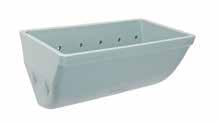








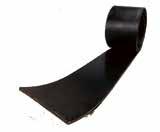
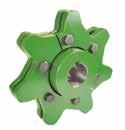










Improving the Safety & Efficiency of Your Plant www.go4b.com 4B DESIGNS AND MANUFACTURES COMPONENTS FOR BUCKET ELEVATORS AND CONVEYORS ELEVATOR BUCKETS ELEVATOR BOLTS BELTING & SPLICES PREVENTATIVE MAINTENANCE & HAZARD MONITORING SYSTEMS CONVEYOR CHAIN BEARING TEMPERATURE SENSORS SPEED SWITCHES BELT MISALIGNMENT SENSORS Engineering Solutions Since 1888 A Worldwide Manufacturer LEVEL & PLUG SWITCHES
A revolution in yeast
Our visit to ICC Brazil
by Niamh Cassidy, Milling and Grain, UK
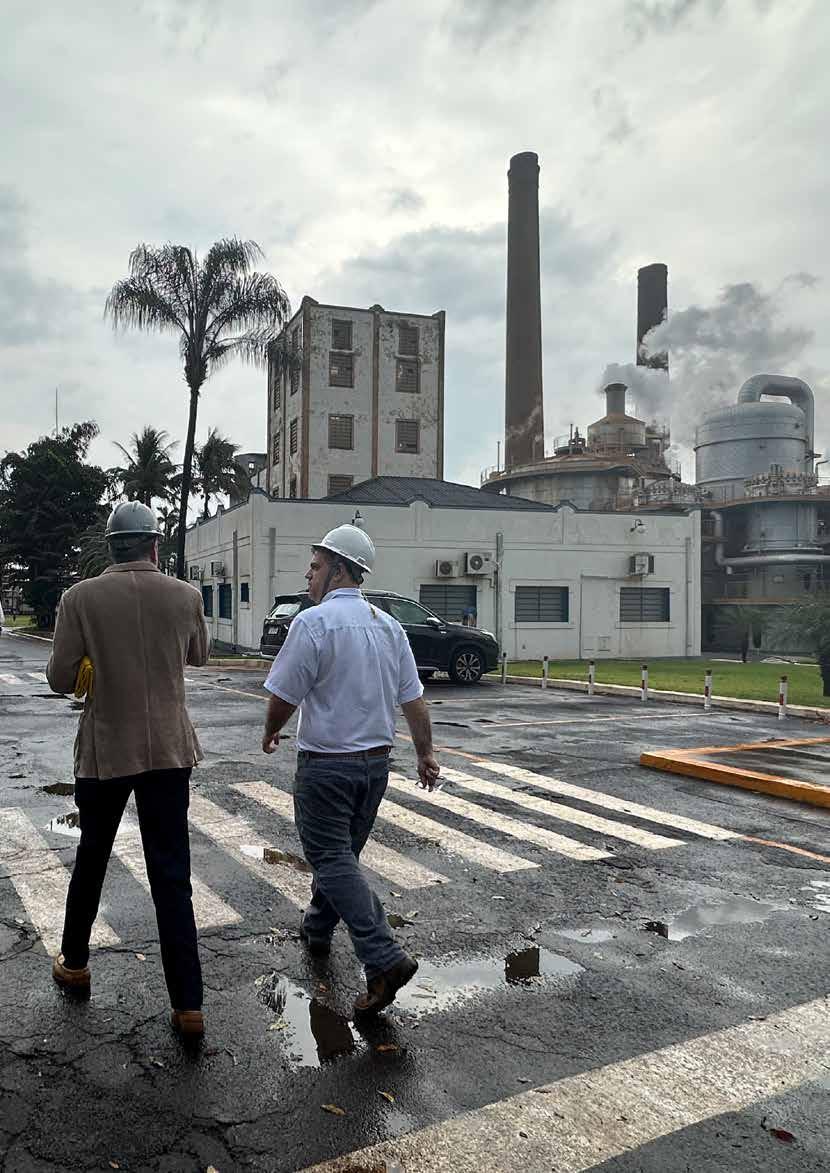
Milling and Grain Magazine recently had the opportunity to visit ICC in Brazil to visit the Santo Antonio Yeast plant, and in their unit in Jundiaí, São Paulo. The opportunity to see the production process up close was a greatly informative and highlighted the necessity of yeast additives in the industry.
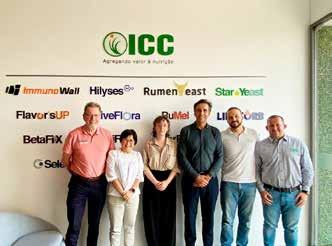
68 | March 2024 - Milling and Grain
Roger Gilbert, Tuti Tan, Niamh Cassidy, Glycon Santos and colleagues


From Biofuel to Yeast: a future potential
Brazil is the largest producer of sugar cane ethanol in the world, producing over 30 billion litres a year. The highly sustainable and clean biofuel has many uses and can be utilized to create yeast – a valuable product for the feed industry. Producing Yeast from sugarcane ethanol is a great way to generate more value out of sugarcane, however most of industry doesn’t yet recover yeast from ethanol, choosing to instead waste it on the fields.
For context, 1 litre of ethanol can produce 30g of yeast, and current production is
at 120k tonnes of yeast. This is just 13 percent of what is possible - there is in fact a potential for 900k tonnes a year of yeast to be produced. ICC see this potential in future production.
Our visit to the Santo Antonio plant Owned by Balbo Group, founded in 1946 and located in Sertãozinho, the Santo Antonio currently has a crushing capacity of three million tonnes of sugar cane per harvest. The scale of the plant as we arrived was astonishing. The flexible industrial plant can produce crystal sugar, anhydrous ethanol, hydrated ethanol, and yeast. The
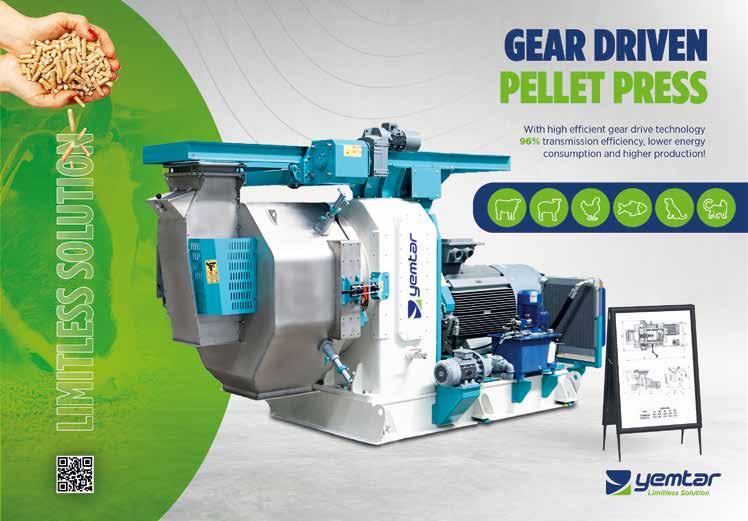
Milling and Grain - March 2024 | 69
EXTRUDER AND EXPANDER TECHNOLOGY YOU CAN TRUST
The Expander AL300
Which improves the quality of finished feed as well as a more efficient process. The Almex expanders have a reliably and sturdy design and are equipped by an unique Active Disk system (AD-system) in order to control exact product input and assure the quality of the product.

Why install an expander?
• Better feed conversion
• Hygenisation (salmonella)
• Eliminating anti-nutritional factors (ANF)
• Gelatinization
• Better pellet quality
• Higher output of pelletmill
Scan the QR-Code for more information www.almex.nl
www.almex.nl
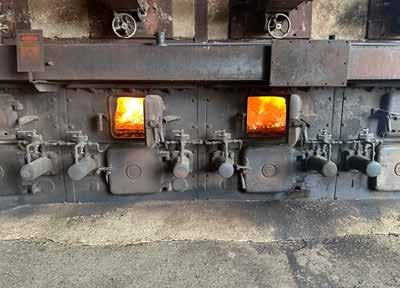
plant crushes 16k metric tonnes per day and runs 24/7.
The team at ICC showed us the process, beginning with the sugarcane plantation, where the sugarcane is transported to the process plant, then crushed as the extraction process begins to create sugarcane juice. The juice can then be fermented, and at this point can either go to the centrifuge, or treatment tank, to create live yeast cream, and transported to the yeast plant. At the yeast plant, various methods of autolysis of drying are carried out. The methods used depend on the product and the purpose of the product.
During this process of extraction, steam is created and directed to a turbine, that in turn creates enough electricity to power the plant, making the plant completely self-sufficient!
ICC are the only Yeast producer at this ethanol plant, working seamlessly alongside the ethanol producers.
Why does the industry need yeast?
“This industry is about to have a revolution” says Glycon Santos, CEO of ICC. He tells us there’s no silver bullet when it comes to animal production, however yeast provides a solution that goes beyond health nutrition and environment.
Yeast additives are a protective measure in animal health, which in turn prevents the need for antibiotics. They play a very important role in reducing the price of feed by increasing productivity, improving intestinal health, which sees feed conversion rates go down due to the reduction of pharma products.
It’s scientifically proven to reduce mortality. Through 320 scientific trials, the data shows that animals consuming yeast have a better immune system. The yeast extract ingredients ICC produce is naturally sustainable, gluten grain and GMO free,
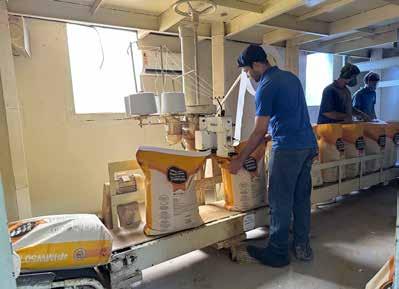

 Warehouse in Jundai
Burning to fuel the plant
Yeast fermentation section of the plant
Warehouse in Jundai
Burning to fuel the plant
Yeast fermentation section of the plant
Milling and Grain - March 2024 | 71 F
Dry yeast is packaged on the plant
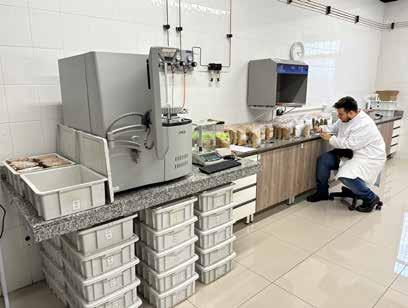
they have a high bio value, good digestibility, among many other advantages.
Regarding Aquafeed, there are many applications. The yeast is a great protein source, whilst inactive dry yeast cannot entirely replace fishmeal, combine fishmeal with yeast can create healthier feed, better feed conversion and growth rates, and even reduce pollution in water.
Visiting the warehouse in Jundiaí
Milling and Grain also had the opportunity to visit ICC’s warehouse in Jundiaí.
Located in the countryside of São Paulo state, with a total area of 15,400 m², the plant has a new factory concluded in 2021, with an investment of R$15 million. The plant has the capacity to produce seven tonnes per hour, with a daily production of up to 147 tonnes, and is fully automatised, mixing up to three ingredients at the same time.
During our time at the unit we were able to see the labs up close, where ICC are working tirelessly to perform quality internal analysis, using UPLC equipment to perform free

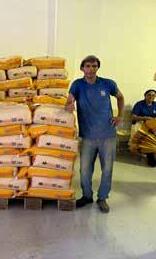
nucleotides and nucleosides analysis.
ICC – a growing company
2023 saw ICC’s 31st anniversary, as a leading producer of yeast additives.
Founded in 1992, ICC’s mission is innovation that is constantly evolving, focusing on natural solutions for animal health. They now work with 32 ethanol plants and sells to over 70 countries worldwide.
Their global presence is consistently developing, with over 30 events attended in 2023, partnerships with University’s to get trusted data for their research, and they’re building and investing in a high-performance team to bring the company to where it needs to go. With currently around 250 employees, they are looking to expand their product line in the future. Constantly following the trends in feed production, such as safe food, accessible food, and food security, ICC’s mission is to reduce the use of antibiotics whilst increasing animal welfare. The bar is always being pushed in the industry, and ICC are innovators in this aspect.
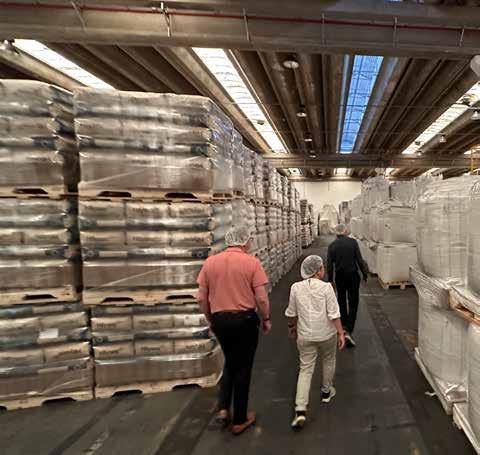
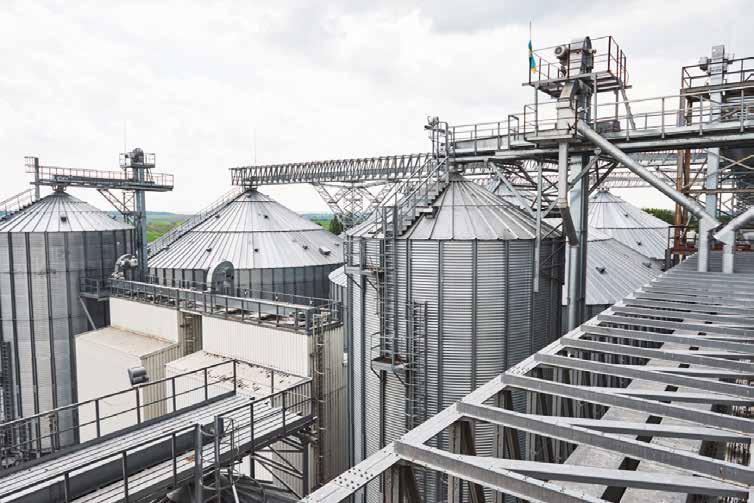
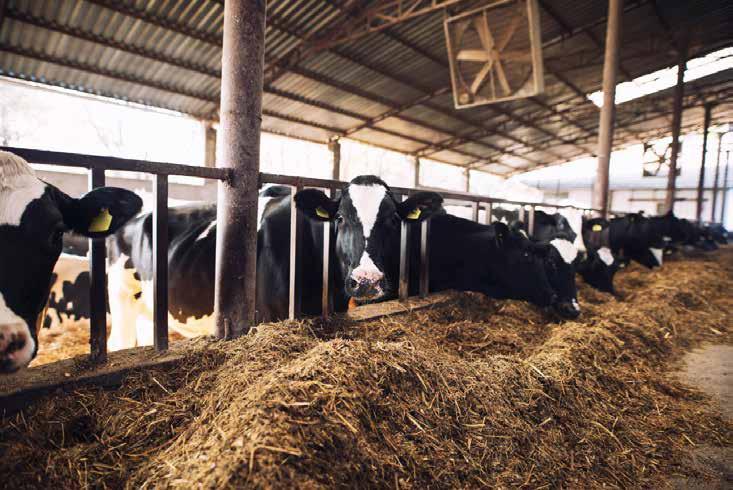
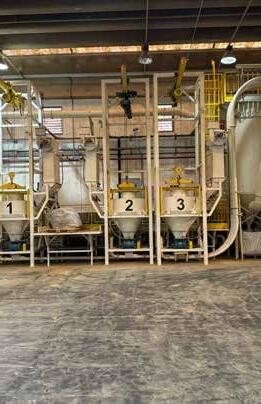 ICC’s laboratories, testing the yeast
ICC’s laboratories, testing the yeast
C M Y CM MY CY CMY K 72 | March 2024 - Milling and Grain F
Glycon Santos explains the benefits of their dry yeast product

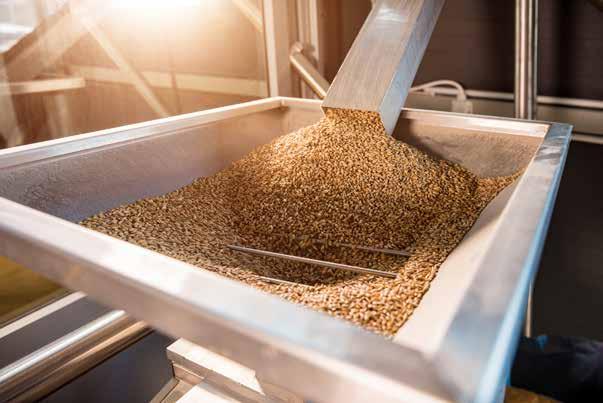
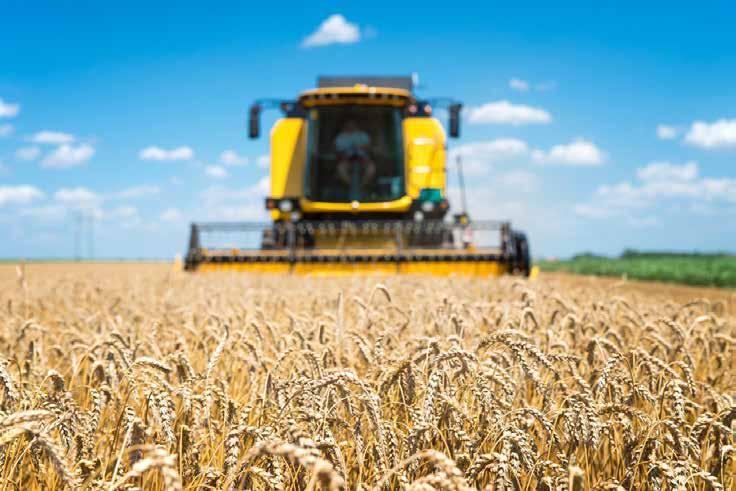


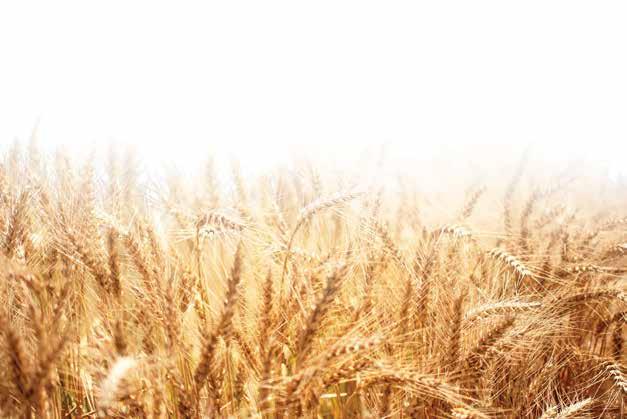
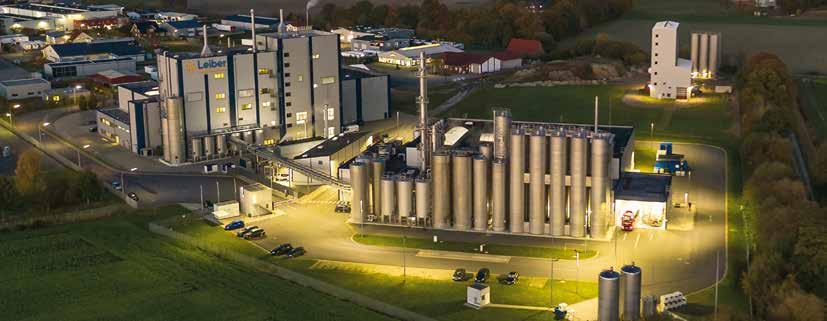
of brewers‘ yeast and fibre Perfect synergy
by Petra Bisesti, Product Management Livestock & Maike Rakebrandt, Senior Product Management Companion Animals,Leiber GmbH, Germany
Real brewers‘ yeast (Saccharomyces cerevisiae) is a natural by-product of the brewing process. It is successfully used in petfood, livestock and equine nutrition for decades. Pure dried brewers‘ yeast consists of a high content of essential amino acids, B vitamins and trace minerals. Positive effects on gastro-intestinal health, metabolism, immunity and performance have been described in scientific papers and confirmed in practice.
The German, family-owned company Leiber GmbH is specialised in the production of brewers‘ yeast products for humans and animals and supplies sustainable solutions all over the world. Long before sustainability became a buzzword, Leiber’s maxim was “There are only valuable secondary streams.”
Leiber YeaFi® is a perfect synergy of brewers’ yeast and functional fibre (figure 1) like spent grains, malt germs, sugar beet pulp, apple pomace and DDGS. All components have dietary and prebiotic effects. They play an important role in the complex interaction between diet, endogenous enzymes, mucosa and commensal microbiota. Soluble and insoluble fibres contribute to physiological and mechanical saturation by promoting beneficial bacteria, increasing enzyme activity and influencing gut peristalsis. Depending on fibre carrier, nutrient contents and fibre profiles differ slightly between products (table 1).
The gentle drying process protects valuable ingredients such as B vitamins, trace minerals and amino acids and prevents segregation of components during handling, storage and transport. Leiber® Brewers‘ Yeast is normally a light-colored,
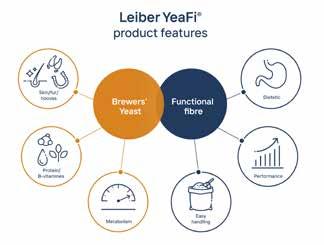
fine and hygroscopic powder with a bitter taste typical of beer. Through the specific Leiber YeaFi® manufacturing process hygroscopic properties of brewers’ yeast disappear and product becomes more palatable. All Leiber YeaFi® products are free-flowing products and are characterised by a long shelf life of three years. In addition, production tests of semimoist and plant based baked snacks and treats for dogs showed technical advantages during the production process. They performed as great texturizers, improved the texture and shape, reduced the stickiness of the snacks and showed a positive impact on the snacks’ appearance, natural colouring and shine. Furthermore, higher inclusion level of Leiber YeaFi® products decreased the pH of the snacks during the whole test period. This has a positive impact on the preservation of the end product.
Which product is suitable for which animal species?
Leiber YeaFi® always combines positive effects of real brewers‘ yeast and functional fibre-rich by-products from food industry. In every YeaFi® product all components are gently dried and complement each other excellently in their nutritional and gastro-intestinal stabilizing properties.
Leiber YeaFi® BT is a unique combination of 40 percent brewers‘ yeast bound to 60 percent spent grains. Brewers’ yeast and spent grains are both by-products of brewing process. Brewers’ spent grains are characterized by high levels of crude fibre and crude protein. Crude protein content is about twice as high as that of grain, but still considerably lower than that of common protein feeds such as rapeseed and soybean meal. The high content of rumen-resistant protein (UDP) must be emphasized. It is rich in various non-starch polysaccharides such as hemicelluloses, but it contains almost no fermentable carbohydrates like starch or sugar. In Leiber YeaFi® BTR, a part of the spent grain is replaced by sugar beet pulp. This increases the natural content of pectin in the product. Leiber YeaFi® BT and BTR are primarily used in sows, dairy cows and horses but both are also interesting in layer diets and petfood.
Functional fibre carrier in Leiber YeaFi® BM is another coproduct of brewing process. Malt sprouts are characterized by high contents of easily soluble carbohydrates, crude fibre and crude protein. In animal nutrition, malt sprouts are used mainly for ruminants due to their high nutrient content. Due to their crude fibre content, they have a good dietary value. Therefore, they are also often used in feed for monogastric animals. Leiber YeaFi® BM is doping-relevant due to malt germs and must therefore not be used in horse feed.
Leiber YeaFi® AB is an unique combination of pure brewers’ yeast bound to apple pomace and sugar beet pulp in a 40:30:30
74 | March 2024 - Milling and Grain F






















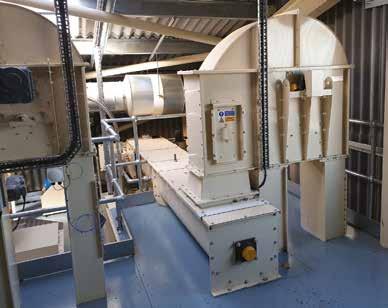
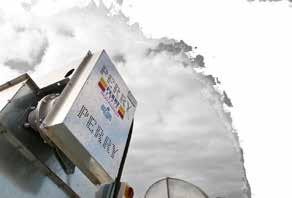




















Visit us online at www.perryofoakley.co.uk sales@perryofoakley.co.uk +44 (0)1404 890300 Perry of Oakley Ltd. The UK’s Most Experienced Manufacturer of Bulk Drying, Handling & Storage Equipment Twin Trace Conveyors | Belt Conveyors | Screw Conveyors Flat Bottom & Hopper Bottom Silos | Square Bins World Leaders in Microwave Moisture Measurement Oil Animal Feed Coffee Rice Grain Hydro-Probe XT Hoppers, chutes, belt conveyors Hydro-Mix XT-FS Mixers, conveyors, Ducting System Hydro-Mix XT-EX Certified for use in ATEX, IECEx and NEC/CSA Hazardous Locations (Dust) Hydro-Mix HT-EX Mixers, conveyors, Ducting System, High Temperature Non Food-Safe available Non EX available Non EX available enquiries@hydronix.com Contact us for more details hydronix.com Hydronix-Milling and Grain-Advert Mar 2023 215x140mm.indd 1 28/02/2023 13:55 76 | March 2024 - Milling and Grain F
ratio. It offers an ideal combination of soluble and insoluble or fermentable and non-fermentable fibres. For instance, hemicellulose is a fermentable carbohydrate, which has a positive effect on digestion, metabolism, faecal consistency, intestinal peristalsis and gastric emptying. This grain-free variant has been specially developed for companion animals but can also be used in all other animal species.
What are the benefits of using Leiber YeaFi® in animal feed?
Digestion and especially microbial activity in the rumen or large intestine can be actively promoted with Leiber brewers‘ yeast products (Leiber YeaFi® product range). The fibre-rich and prebiotic ingredients serve as a substrate for the intestinal microbiome and thus effectively influence energy and nutrient absorption. This contributes to the relief of the metabolism, a better immune defence and thus a higher stress resistance. In addition, pectin-containing feedstuffs such as sugar beet pulp or apple pomace (as in Leiber YeaFi® AB and BTR) or dietary ingredients such as the brewer’s spent grains in Leiber YeaFi® BT (so-called spent grains yeast), provide high levels of fermentable fibres. They are ideal partners to further enhance the positive prebiotic effects of brewer’s yeast.
The regular use of Leiber YeaFi® in animal diets results in less metabolic disorders, improved fertility and higher immune status. In sows for example, Leiber YeaFi® increases immunoglobulin content of colostrum, indicating improved nourishment and immune defence. Moreover, it improves number of weaned piglets, piglet weight gain and reduces mortality. In dairy cows positive effects of Leiber brewers‘ yeast bound to functional fibre on rumen metabolism and performance have been demonstrated in several university and field trials. As a result of stabilized rumen pH and microbiota, milk quality and yield increases.
The horse’s digestive tract is very sensitive and prone to disturbances. It can be very easily thrown out of balance by management errors such as husbandry or feeding mistakes. Leiber YeaFi® stabilizes faeces consistency, improves body condition, fertility, shedding, coat and hoof quality.
Trial results in pets showed that the fibre components reinforce the beneficial nutritional properties of brewers’ yeast in an ideal way. Leiber YeaFi® has many positive effects in dogs and cats, especially on the faeces, skin and coat. Leiber YeaFi® products can substitute pure brewers´ yeast and give additional technical advantages during the production process. For more information, please visit https://leibergmbh.de/en/#










YeaFi® BT YeaFi® BM YeaFi® AB Nutrients (%): Crude protein 31.0 30.0 21.0 Crude fat 7.0 2.0 3.0 Crude fibre 9.5 9.0 16.0 Crude ash 5.5 7.0 5.0 Sugar 1.0 7.5 5.0 Starch 5.0 5.0 14.0 Lysine 1.8 1.7 0.8 Methionine 0.6 0.5 0.3 Fibre profile (%): TDF 56.7 49.6 53.5 NDF 36.3 37.4 41.9 ADF 11.0 15.3 24.6 ADL 4.3 10.0 6.3 Leiber YeaFi® products can be customized based on e.g. spent grains, malt germs, wheat bran, apple pomace, sugar beet pulp, DDGS and potatoe protein on request. Milling and Grain - March 2024 | 77 F
Table 1: Nutritional values of Leiber YeaFi® BT, BM and AB
ENERGY-EFFICIENT AND FOOD-SAFE GRAIN MOISTENING
In the ever-evolving landscape of food production, advancements that prioritize both energy efficiency and food safety are crucial.
SWISCA’s DAMPE system has emerged as a game-changer in the milling industry by revolutionizing the grain moistening process.
Dampe introduces a ground breaking approach to grain moistening. By employing a high-pressure mist of water sprayed onto the grain surface, this innovative dampener ensures uniform moistening without the need for a conditioning screw. Moreover, the system incorporates Cleaning-in-Place (CIP) technology, elevating food safety standards even further.
The significance of moistening in flour production

allowing for the accurate calculation of the required water quantity. This new method minimizes energy consumption, making it an environmentally friendly choice for flour mills.
Moistening is a critical step in the production process of flour mills. It ensures uniform grinding and a high yield by preparing the grain for optimal milling conditions. The process involves adding water to the grain and tempering it in silos, making the bran layers tough and elastic while softening the endosperm inside the grain. This optimal condition facilitates the efficient separation of the hull and the endosperm during milling, ultimately enhancing the overall efficiency of the flour production process.
The DAMPE system
One of the standout features of SWISCA DAMPE is its unparalleled energy efficiency. The system utilizes a unique process that precisely measures moisture and density during weighing,

The GRANO differential dosing scale is essential in the DAMPE system, functioning as a precise mass flow controller and meter for regulating product flow and measuring grain moisture. Working in tandem, the automatic liquid flow controller DOSWA accurately doses the necessary water, minimizing abrasion and breakage at high water addition rates of up to seven percent. The continuous measurement and control of mass flow, moisture, temperature, and water addition with a multifunctional weighing system ensures a stable and efficient dampening process with DAMPE.
Continuous testing and development
The SWISCA DAMPE system, commercially operational across various sites, undergoes continuous refinement e.g. for optimized product feed and accessibility. In addition, a detailed testing series, conducted collaboratively with the Detmolder Institute for Grain and Fat Analysis (DIGeFa) at an industrially operated grain mill (300 t/24 h), compared traditional moistening processes with DAMPE. Key considerations included assessing water distribution and the impact on tempering time. The SWISCA system was pitted against the intensive dampener, generating ash curves and conducting comprehensive analyses on raw, intermediate and finished products. Using qualitatively identical raw products, same mill settings and recipes, a total of 250 samples were sent to DIGeFa to conduct 900 different analyses, including yield, moisture content, mineral content, and starch damage.
Identical finished products with added benefits
The analysis of measurement results indicated no disparities in the final products, and the ash curves demonstrated a similar
Swisca’s Dampe revolutionises flour milling
Image 1: DAMPE system
F STORAGE & HANDLING 78 | March 2024 - Milling and Grain
Image 2: Ash curve comparison

AUSTRALASIAN MILLING CONFERENCE BiennialSummit B
AND INSIGHTS
NEW PROGRAM FORMAT
OVER 200 EXHIBITION BOOTHS
Gold Coast Convention and Exhibition Centre, Australia
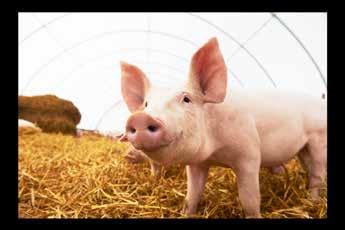
WWW.PIX.AU INNOVATION, DISCUSSION
13- 15 MAY 2024

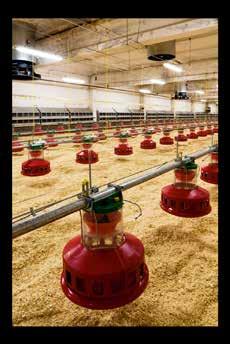
The Australasian Milling Conference, Poultry Information Exchange, and Australian Pork Limited teams are excited to bring you "Food with Purpose". In 2024 we come together to share knowledge, innovations and ideas for the poultry, pig and milling industries. Food with Purpose will showcase over 200 exhibition booths, our largest yet, and a new program format to make the most of the three days.The event will once again be at the Gold Coast Convention and Exhibition Centre from 13-15 May. Early Bird Registrations are now open, please visit the website by scanning the above QR code or www.pix.au.
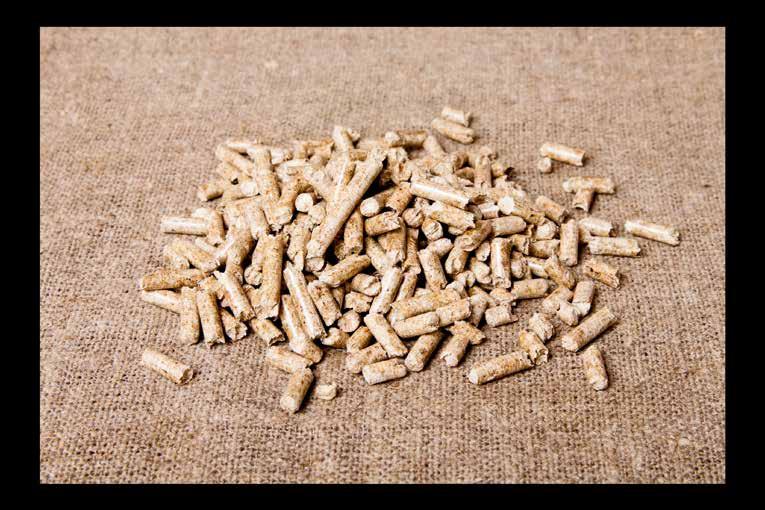

ummit
iennialS







HEALTH & NUTRITION ASIA
BITEC , BA NGKOK , TH AIL A ND 12-14 MARCH TOTA L A N I M A L E D A N D H E A LT H E V E N T FO R A S I A in co-location
FE Scan here to register
2024
with ORGANIZED BY SUPPORTED BY
trend. The milling behavior on the mill remained consistent, with comparable mill intermediate products and no observable shifts. Both methods yield identical quantities and qualities of finished products with matching tempering times.
DAMPE achieves the necessary wheat conditioning sustainably, requiring significantly less energy input. By atomizing the water on the grain, DAMPE optimizes the surface distribution of water, promoting penetration. With the same tempering times, end products can be produced in the required quality without mechanically stressing the wheat.
Annual savings of 7’000 EUR – sounds interesting?
SWISCA’s innovative DAMPE system delivers conditioning results on par with conventional netting methods, but with a remarkable over 90 percent reduction in energy consumption. Comparative calculations, considering effective power consumption of 0.19 kWh and 5.3 kWh for conventional systems, highlight a substantial difference in annual operating costs. The SWISCA system incurs approximately 300 EUR, whereas installations with traditional moistening equipment amount to around 8,000 EUR. Hence, the system is particularly attractive to customers confronted with high energy costs. When stringent hygiene requirements also come into play, evaluating SWISCA’s DAMPE is advisable.
Variants for diverse requirements
The core component of the dampening system –DAMPE – is available in various configurations providing flexibility to meet different operational needs. It comes as a complete system with manual cleaning or with an
integrated CIP system (Cleaning in Place). As the newest addition to the DAMPE portfolio, it is now also possible to mount the moistening unit directly onto a silo and secure it with a flange. With high-quality machines and systems for the food industry, SWISCA heralds the “Next Generation” - high-tech solutions from Switzerland as the key to a resource-efficient future. SWISCA’s process equipment, weighing systems and automation solutions are characterized by precision, efficiency, and reliability. They are the result of a strong commitment to innovation and sustainable processes. Built by our innovative employees with their in-depth knowledge and the will to push boundaries.

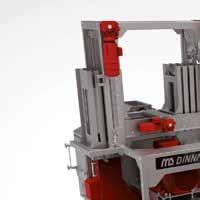
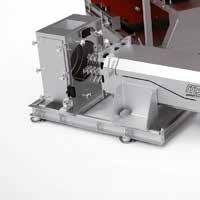

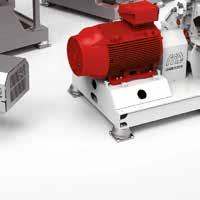





F Milling and Grain - March 2024 | 81
Image 3: DAMPE variants
 by John Buckley
by John Buckley
Talk of plenty keeps grain costs in check

Sustained export competition, especially from the Black Sea region, has combined with reports of improving global crop prospects for 2024 to check the stronger wheat price trend we recorded in our last report. On the bellwether Chicago futures market, prices didn’t quite backtrack to the multi-year lows we saw last autumn – thanks largely to concerns about the impact of interrupted ocean traffic through the Suez Canal. However, they had to struggle harder to stay much above the US$6/bushel level for long (about $220.50/ tonne). A similar deflation has been seen on the EU market, Paris milling wheat futures shedding as much as 15 percent of their October peak value. Corn prices have dropped too amid rising supply estimates, contributing to the generally flatter trend across grain markets.
A key bearish factor in the past month or so has been Russia’s still very active export campaign, taking the largest share of foughtover import tenders at knockdown prices – despite its supposed price ‘floor’ (which now seems likely to be officially reduced) and its export levies on top of the fob price. Two factors are driving this trade. First and foremost is a larger than expected 2023 crop, variously estimated around 91/93m tonnes – much the same as the record 2022 crop, despite earlier estimates it would drop back by some five million to ten million. (though we should note yet
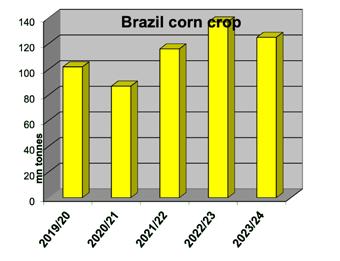
again that some sources always thought the 2023 crop was actually much larger than 92m, possibly significantly above 100m). Clearly Russia still has plenty of old crop to sell – a situation that may contain the zeal with which it executes a new export quota policy starting February 15. This looming restriction was probably a factor behind recent aggressive Russian pricing as exporters tried to clear as much grain as possible before quota applied. Russia’s January 1 stocks were estimated at 36.5m tonnes, a new record high, and the US Agriculture Department thinks it will still have 14.6m left at the start the next season on July 1 (compared with 12m last year and as little as 7m two years before that). At the same time, Russia’s 2024 crop prospects may be improving. Weather has not been bad this winter, mild with probably adequate precipitation, if possibly more exposed than usual by lack of snow cover to protect against any late freezes. The planted area has also risen by an estimated 300,000 hectares.
The Ukraine factor has also played less to the bullish side of the market in recent weeks. Official figures show exports through its key port Odessa getting back to pre-invasion levels and other new routes, e.g. through Rumania’s Constanza/Danube, increasing their contribution to grain movement. Meanwhile, the European Commisssion has been forced by farmer protests in France and other member states, to start taking a firmer line on Ukrainian grain entering the Union, supposedly for onward transit, but ending up weighing on domestic EU market prices and farm incomes. However, while all of this looked rather bearish as the New Year unfurled, the Black Sea region’s influence retains its potential to flare up bullishly, if the military situation takes on an unexpected nasty turn.
In the same vein, those thinking it time to sell more wheat, have been given some pause by the Houthi attacks on Red Sea shipping, forcing up the transit cost of war risk premiums and diverting some shipping to other longer, more costly routes – a firming influence across the dry bulk freight market generally. Yet even that factor has had some mitigation. While the UN Food & Agriculture Organisation reported wheat shipments through Suez fell 40 percent in first half January, analysts at Agri-Census estimated only 4.5 percent of total dry bulk trade actually moves through the canal normally, which should hopefully limit the overall impact. Again,
Commodities - March 2024 82 | March 2024 - Milling and Grain
World Markets
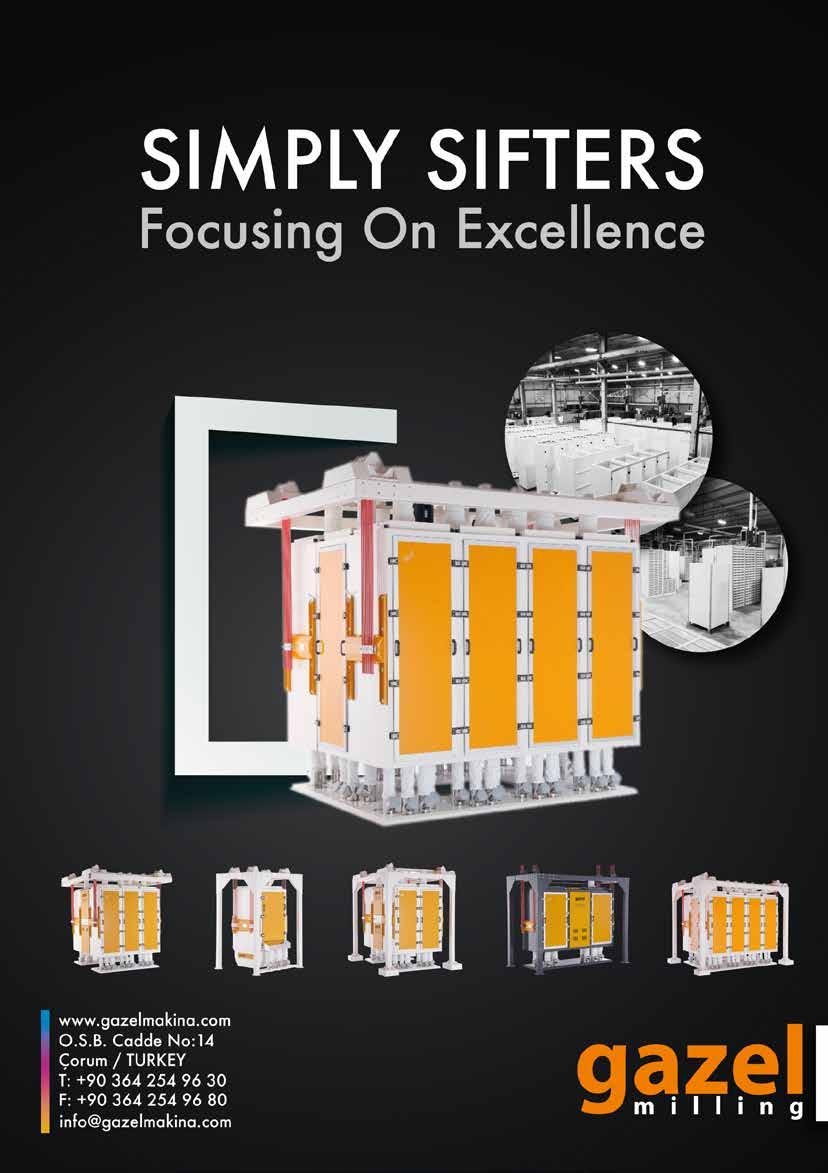
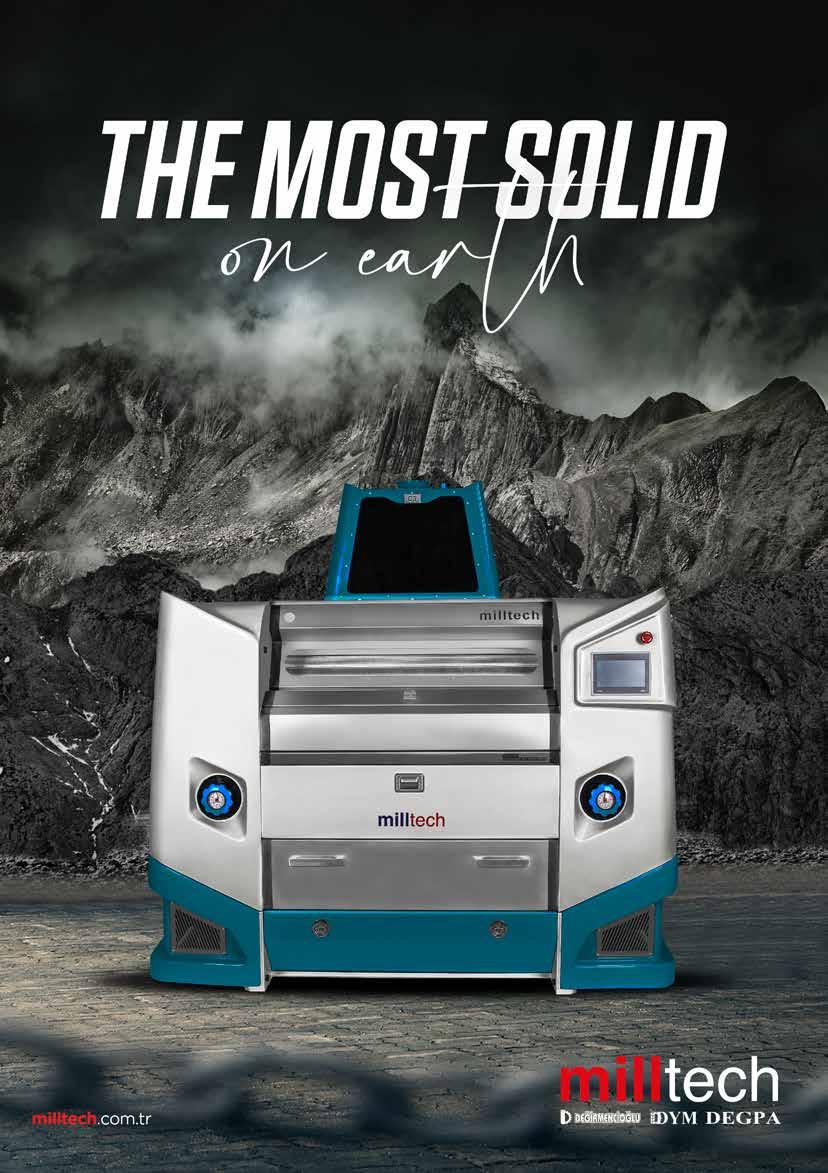
though, the potential for conflict spread to other parties like Iraq, Syria (possibly Iran too?) keeps commentators worried about a conflagration that could be net bullish for food transport and commodity costs generally – so no room for complacency.
Turning to other suppliers, the news was somewhat brighter. After a three-month dry spell, much of Australia’s wheat belt was getting what some observers said was its greenest summer in memory. That’s encouraging for the wheat crop outlook in a normally dry El Nino year, some analysts adding as much as two million tonnes to their crop forecasts. Canada has also been getting some rain and snow after a warm dry period, perhaps improving the outlook for its spring planting. The government body AAFC recently estimated Canada’s planted area for nondurum wheat would drop by about three percent from last year’s two-decade high but remain five percent better than the fiveyear average at some 20.4m acres, suggesting a crop of around 27.9 million tonnes. Durum wheat area was expected to edge up, however, promising around 5.43 million tonnes – so total Canadian wheat output of around 33.3 million versus last year’s 32 million and the previous year’s 34 million tonnes. That should, AAFC thinks, allow steady non-durum exports of 20m tonnes and a bit more durum trade at around 4.35 million tonnes.
Among other major wheat exporters, Argentina’s crop has benefited from recent rains after a dry period and is now seen around 15.5 million tonnes versus last year’s poor 12.6 million. The latest number is still well below the previous three-year average (almost 20m tonnes) but significantly better than earlier expected.
One time top exporter, the USA has apparently trimmed its winter wheat area this year by about six percent to some 34.4
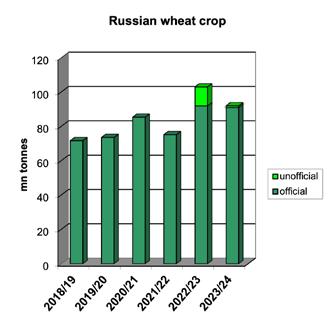
million acres (13.9m hectares) but that too is a smaller cut than the markets had been expecting after the price retreat from recent years’ record levels. Some private analysts are far more optimistic on US winter wheat planted area, however, Farm Future recently forecasting as much as 37.26 million acres. Probably of much greater importance, though, may be the actual condition of the US crop. In top wheat state Kansas, 54 percent of this was recently rated in the higher ‘good/excellent’ bracket against 43 percent at end-December and in January 2023, just 22 percent.

Milling and Grain - March 2024 | 85 Commodities - March 2024
Similarly another key player Oklahoma’s wheat had a GE rating of 63 percent versus a mere 17 percent this time last year. The clear implication – assuming no weather upsets in the coming months – is that much the US crop may be set for far better yields this summer. (The last US crop produced 49.3m tonnes on a yield of 48.6 bu/acre and 37.3m harvested acres).
Another recent influence on the wheat market has been doubt shed on EU 2024 crop potential after a rain delayed start in top producer France as well as some other member states. Some analysts have been marking down estimates of planted area and are looking for a potentially smaller EU total crop. However that may be offset by higher starting stocks which, after a slower than expected 2023/24 export campaign, were recently estimated at some 16.5 million tonnes – three million more than last year.
As mentioned in our last review, China has been an important wheat import buyer around the turn of the year, one of the few bright spots for French wheat exporters and even more so for the USA. Although China’s own crop (the world’s largest after the combined EU) remains at an apparently comfortable 136.5m tonnes (only 1m or so under the previous year’s), grain pundits still expect it to lead world wheat imports in the 2023/24 season, taking perhaps 12/13 million tonnes with the emphasis on higher grades for blending up quality of its domestic supplies. So further Chinese forays into the import market remain a potentially firming influence on prices, albeit probably only on a temporary basis.
Summing up, wheat supply is currently described by many in the trade as ‘more than enough to round’ with prices near the low end of their recent 3-5-year range. Further forward we have to see how the weather behaves, bearing in mind that the global stock, as mentioned in our last review, has been on a multi-year downward trend, leaving less room each season for crop upsets. CBOT futures say wheat will be worth about 5.8 percent more by the close of 2024 and 8.5 percent more by mid-2025 although distant ‘price revelation’ of this nature can be unreliable, it suggests a less loose supply bias in the medium/longer-term.
Maize prices hit three-year low
If Latin American weather had sustained a more typical pattern for an El Nino year, it might all have worked out so differently for the corn market. In latter 2023, market talk was dominated by fears that hot dry weather, especially in Argentina, would foil plans to sow large maize crops, resulting in major trimming of export capability from this key supplying region. In the event rains do seem to have come in time to prevent a crop collapse. Largest regional producer Brazil’s harvest does now look more likely to end up somewhere in the 115m to 125m tonne range – rather than the earlier hoped-for repeat of last year’s record 137 million. But it still looks on target to be one of the largest yet produced. Prior to last year, the three-year average was under 102m tonnes. Carrying in from last season a record stock of 10 million tonnes – three times the previous season’s level - Brazil will clearly remain a key influence on corn export pricing, its potential 58 million tonne trade offering strong competition to the once-dominant USA and other suppliers. Argentina meanwhile seems to be making up for some of Brazil’s crop trimming, recent private estimates for its


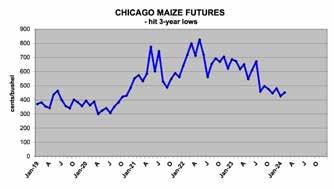

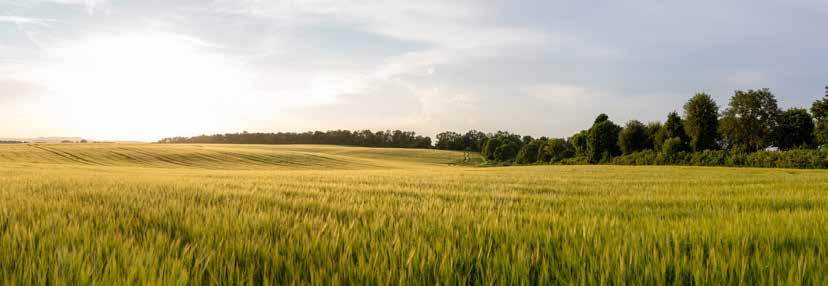
coming harvest around 59 million to 60 million tonnes against earlier forecasts closer to 55 million. That’s not just a record number but a huge improvement on last season’s drought-reduced 34 million tonnes. Argentina’s exports alone should reach that level at least, maybe more versus under 26 million last season.
Commodities - March 2024 86 | March 2024 - Milling and Grain
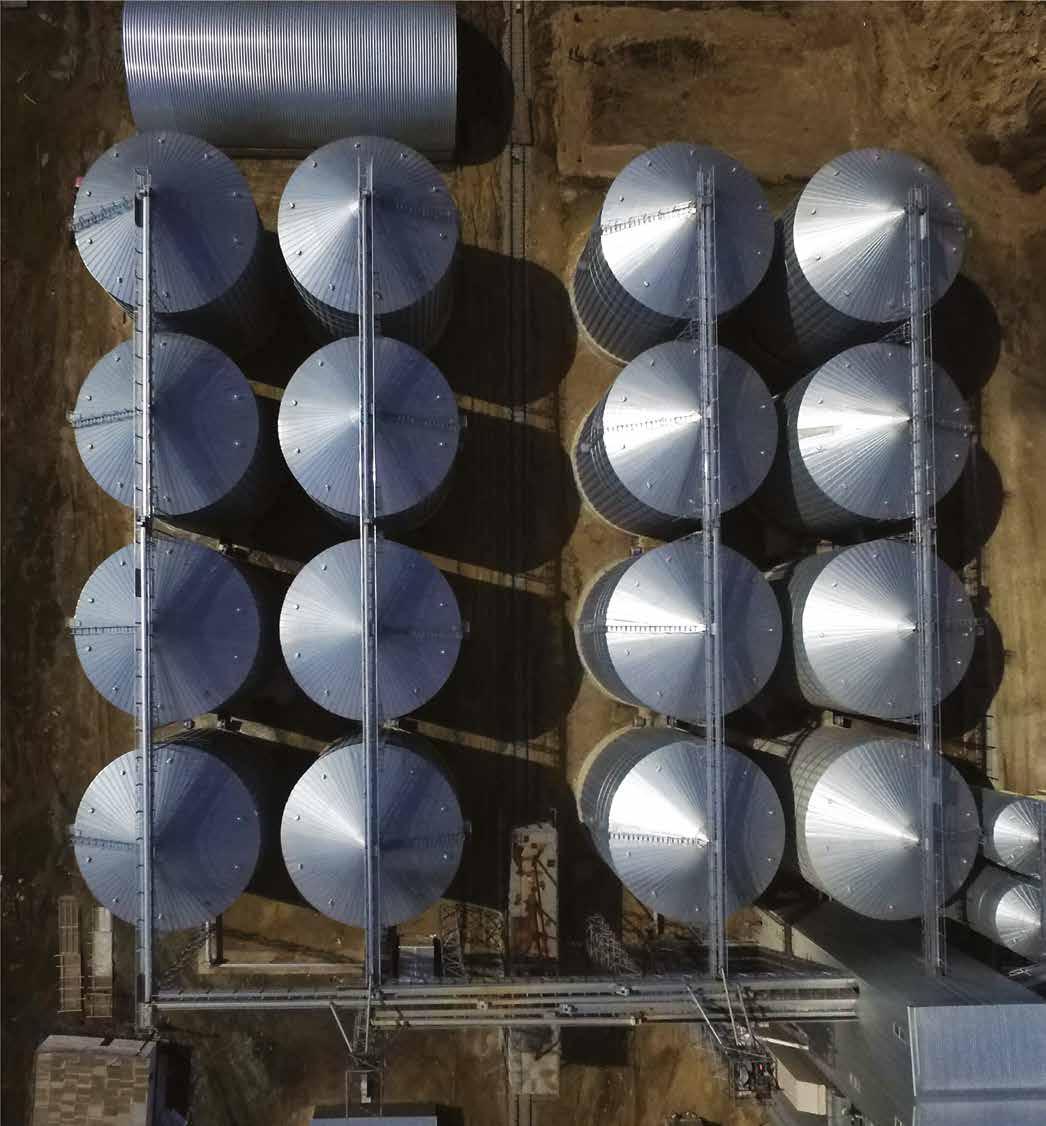


Is your herd ready for tomorrow?
Preparing for a more sustainable future demands a proactive partner with insights, innovative solutions, and precision services. One who can help you save costs and get the most value from locally sourced raw materials while reducing environmental emissions — all without ever compromising on performance. Our specialists on the ground work closely together with you to help shape a strong future for you and your business. Reduce waste, optimize pig performance, and step up to the circular economy — because sustainable farms are more efficient farms.
NABLE
Learn more at dsm-firmenich.com/anh
EMISS IONS CONTROL RAWMATERIALS SUSTAI
COST SAVINGS $ $

Good news for maize consumers continues from other major supplying countries. In the USA the government raised its estimate of 2023 crop yield by over two percent to 177.3 bu/acre. Although it also trimmed the estimate of harvest area, that pushed up the official crop figure from 387 to 389.7 million tonnes – a full 12.4 percent better than the 2022 result. Many analysts had expected the number to go down rather than up so this had a bearish impact on US markets. Although the US is using more corn for ethanol bio-fuel and exporting 25-30 percent more than last year, it still expects to finish this season (at end-August 2024) with over 20 million tonnes more carryover stock than last season at over 55 million tonnes.
Another reason for restraint in maize prices has been better than expected shipments out of Ukraine where re-routing traffic through the EU combined with fewer interruptions through sea ports like Odessa has boosted private analysts estimates of its 2023/24 exports from 21 million to over 29 million tonnes.
Adding all these positive supply developments up, the global maize trade now looks likely to benefit from a 10 percent increase in export shipments. This is fortuitous at a time when key consumer China is expected to use about 7 million tonnes more, over half of that extra imported from around the globe.
To feed its own maize deficit – which has grown in recent years – the EU will vie with China for the role of top importer, both expected to take around 23 million tonnes. Moderate and smaller maize importers should also benefit from the decline in global maize costs that has accompanied the rise in supply. The past calendar year, saw the biggest drop for a decade – around 30 percent. Even amid the rising strength of the US dollar, the currency in which most commodities get traded, that’s a hefty discount. That said, looking toward the Northern Hemisphere
spring planting season, we must also note the possibility that farmers might sow less corn for 2024, especially if its main rival for US farmland, soybeans, continue to offer a better profit ratio. US farmers are already said to be gloomy about their income outlook for the year ahead in which many expect lower commodity prices generally and, worse still, rising production costs. Currently, the Chicago forward futures market suggests corn will cost almost nine percent more by the end of this year, expanding the rise to 13 percent by mid-2025 but sowing is dictated by prices now.
No lack of soya meal
Like the cereals, prices of the dominant oilmeal component –soybeans – have responded to improving supply by testing old lows. In February the Chicago futures market traded at its cheapest since November 2021 although, unlike the grains, soya’s forward profile offers relatively little threat of higher prices ahead.
Here too, a key factor has been improving weather in South America, offering a scenario of record export soya supply, increasing competition for the USA and a probable buildup of global stocks of the raw material.
Overall, world soybean production is estimated 23 million tonnes or 6.4 percent higher for 2023/24 season at almost 400 million tonnes.
Crush and meal output therefrom will rise at a slower rate but still provide an ample increase in soya meal supplies of some 11m tonnes – just under 90 percent of the total increase in world oilmeal production and enough to feed expanded world soya meal demand and still build some stocks. Other, smaller oilmeal sectors expecting increased meal production are mainly rapeseed, cottonseed and palm kernel.

Micro dosing and weighing equipment for: Offering a solution to your challenges such as: Easy maintenance Track & trace Reporting Product damage Accuracy Short batch times VISIT US AT BOOTH #B023 www.ksegroup.com Batching experts since 1973 Milling and Grain - March 2024 | 89 Commodities - March 2024
ANPARIO

Sustainability Matters
In the East Midlands, bordering South Yorkshire, Lincolnshire and Leicestershire, Nottinghamshire is home to the UK head office of Anpario. With the company having over 30 years of experience, CEO Richard Edwards has been in charge since 2006, with a brief step down in 2011 and becoming the Vice Chairman, Edwards retook the role in 2016. Working globally, Anpario has offices in 13 different locations worldwide: Asia, USA, UK, Middle East and many more. These offices all work to help sell Anapario’s products in over 80 different countries.
With a strong passion for sustainability and manufacturing and distributing the best feed additives possible, Anpario’s main focus is dedicated to understanding animals’ intestinal health and nutrition. They work to provide the best options for customers to achieve optimum animal performance. The products produced are designed to work harmoniously with the natural aspects of an animal’s biology to help assist and boost a healthy growth and development.
The technology used by Anpario is developed, produced and dispatched directly from the UK manufacturing plant. Having over 30 years of expertise in agriculture, they work with key research institutes and universities around the globe to ensure that they have the best cutting-edge technologies at their disposal.
Product Portfolio
Using thrilling innovations, Anpario brings together an incredible range of 100 percent natural specialist feed technologies. To make sure that all products are of excellent consistency and shelf-life, they are all within specially designed packaging.
Separated into four product categories, the key foci for the portfolio are health & performance, feed quality, hygiene & insect control and toxin management. These categories help to organise and ensure the growth, production and quality of the products that Anpario develops and sells. It also aids where the focus must be to continue research and evaluation to assemble new and improved products.
With the categories, Anpario makes a promise to their customers to be all designed to naturally fully support the immune system,
enhance gut integrity and provide essential nutrients to animals. This is only some of what the health & performance category promises. With this in mind, it makes it incredible to imagine the amount of promises and guarantees that the other areas of the portfolio mentions.
‘Reduce, Reuse and Replace responsibly’
Anpario desires to be as sustainable and ethical as they can be. To ensure this, they created their three pillars to help assist them with their goals and to keep them on track: people, planet, and promise.
For the people pillar, they guarantee equal opportunity for everyone, embracing diversity, inclusion and equality. They also support local communities through global fundraisers and charity donations, such as Kids Cancer Charity, MacMillan, Weston Park Cancer Charity and more.
Planet focuses on the environment and providing natural alternatives to the harmful products typically used in agriculture. Investing over £1.3million into a sustainable future since the start of 2021, Anpario have been and continue to lower their energy consumption, their carbon emissions and improve their supply chain’s environmental, social and ethical practices. Anpario only works with others who share their goals and can meet their standards, influencing and supporting other companies to meet their aspirations and to improve their effect on the environment, making themselves sustainable also without negatively impacting future generations of animals.
The final pillar is promise. Aligning their goals with the UN sustainability goals, they recognise the importance that Anpario has in the agricultural business and how they affect the surrounding community and the lives of the people who works for them, buys from them and supports them. Anpario makes certain that their customers trust isn’t misplaced with their solutions and with the code of conduct and supporting policies, Anpario employees globally all hold standard that are expected of them. This helps to consistently strive the employees to increase cooperate value and produce healthy returns and profits.
Industry Profile 90 | March 2024 - Milling and Grain
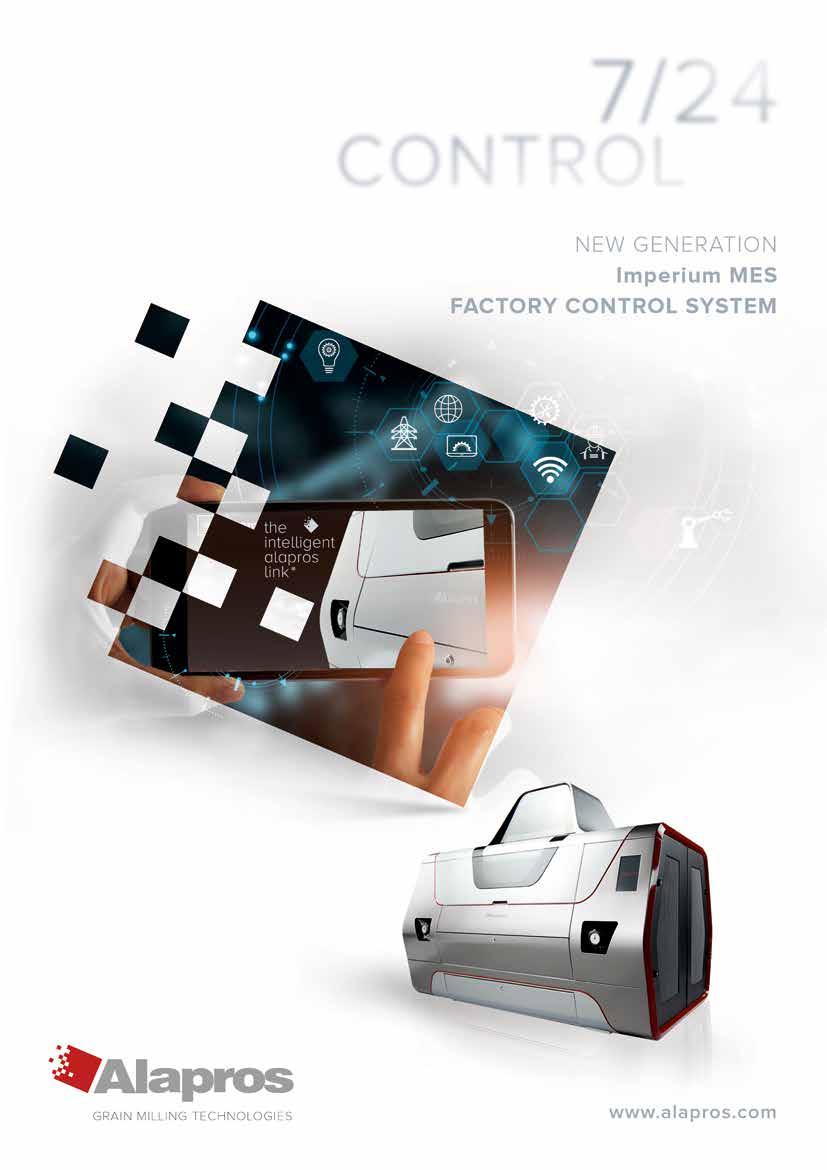


P&H Milling Group and Parrish & Heimbecker Hamilton Flour
Milling Expansion
A family owner Canadian milling company, announced a significant expansion at its Hamilton, Ontario facility, reinforcing the company’s commitment to Canadian agriculture producers and the ever-growing demands of the baking industry.
The latest expansion signifies a remarkable stride forward with the inclusion of two new storage silos (for handling essential feed ingredients such as soymeal and distillers dried grains, along with wheat to service the flour mills) and the construction of a third flour mill, scheduled to begin in March 2024. This growth solidifies P&H’s standing as a leading flour production campus in Hamilton, Ontario.
The existing P&H Hamilton flour mill, operational since 2017, marked a historic moment as the first new flour mill built in Ontario in 75 years. This facility, doubled in capacity in 2020 with a second mill and increased storage, has been pivotal in enhancing the company’s capability to receive and process wheat.
CEO John Heimbecker commented on the expansion, saying, “Our ongoing commitment to the Canadian agricultural landscape is exemplified through this expansion in Hamilton. We are not just expanding our infrastructure; we are investing in the future of Canadian agriculture and the baking industry. This strategic move reaffirms our dedication to meeting the needs of both our valued agricultural partners and our business partners.”
P&H’s expansion in Hamilton is aligned with its vision to contribute significantly to the food industry, supporting local farmers, and ensuring a sustainable and resilient supply chain for our customers. The company remains at the forefront of innovation, employing state-of-the-art technology and sustainable practices to meet the demands of a growing population.
About P&H Milling Group
P&H Milling Group, a division of Parrish & Heimbecker, Limited, is a leading Canadian agribusiness that specializes in flour milling and pea processing. Committed to quality and sustainability, P&H Milling Group plays a crucial role in supporting Canadian agriculture and meeting the demands of the growing food industry.
Parrish & Heimbecker, Limited (P&H) is a Canadian, family-owned agri-business, with roots in the agriculture industry dating back to 1909. P&H is growth-oriented, diversified, and vertically integrated with operations including grain merchandising, flour milling, as well as crop inputs and feed mills. With over 70 locations from coast to coast, and trade links around the globe, P&H leverages its well-established network of assets, strong business relationships with customers and suppliers and ongoing infrastructure development to support Canadian agricultural producers.
In 1989, P&H ventured into pea fractionation milling with the opening of Parrheim Foods in Saskatoon, Saskatchewan. Their Saskatoon Pulse mill specializes in proteins, starches and fibers from yellow Canadian field peas.
In 2007 the P&H Milling Group expanded further with the purchase of Hayhoe Mills Ltd. The 2009 acquisition of Dover Industries brought five additional mills to P&H Milling Group, which provided the company the opportunity to better serve our existing customers and provide a national presence to new customers from coast to coast.
In 2017, P&H commissioned a state-of-the-art flour facility on the Port of Hamilton, adjacent to their grain terminal elevator which opened in 2011. In early 2020, P&H further expanded our Hamilton facility, which increased our capacity to support the needs of growing customers.
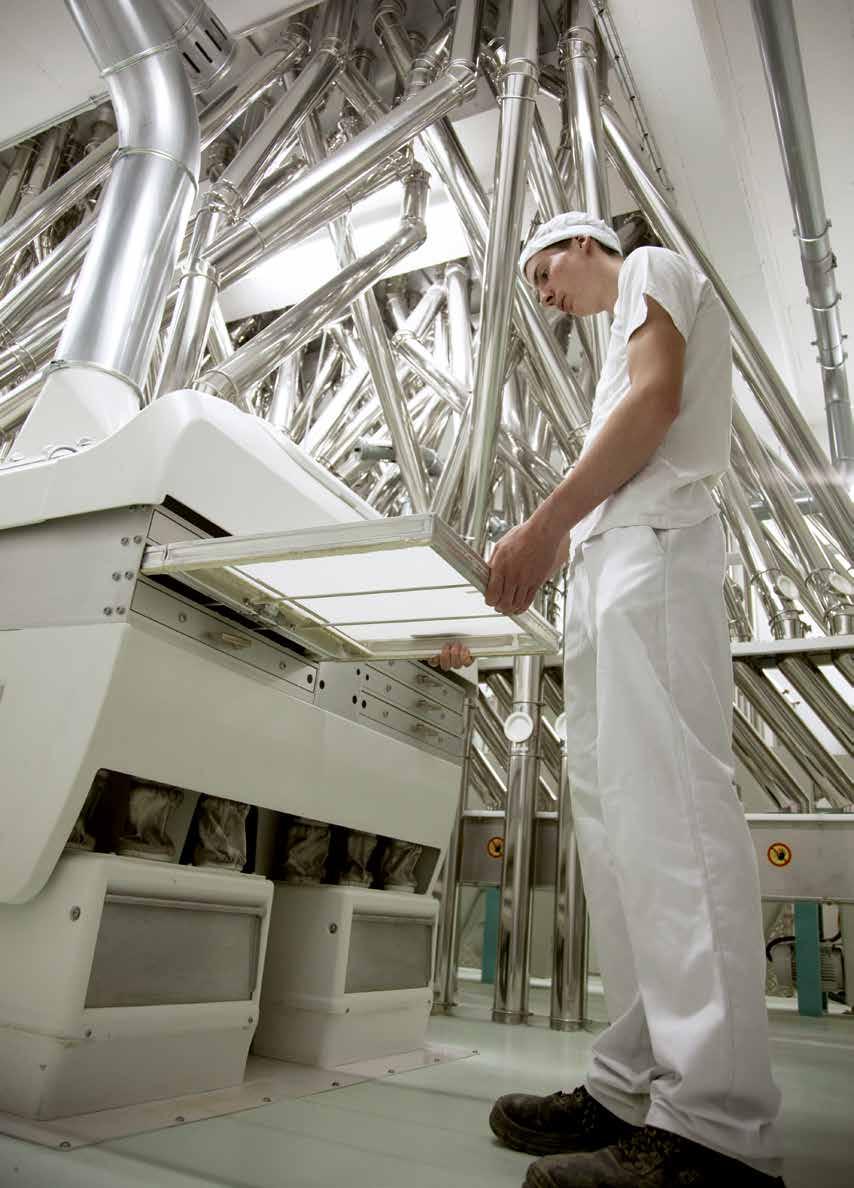

92 | March 2024 - Milling and Grain CASE STUDY




SEFAR NYTAL ® . The name you can trust. Since 1830, Sefar is the single-source supplier to millers for all products for sieving, grading, and dust filtration as well as connector sleeves, sieve cleaners and tensioning equipment. FOOD SAFETY FDA COMPLIANT Headquarters Sefar AG Hinterbissaustrasse 12 9410 Heiden – Switzerland Phone +41 898 57 00 filtration@sefar.com www.sefar.com As your trusted supplier of precision woven fabrics, Sefar is proud to introduce our newest complimentary innovation: SEFAR NYTAL® Sieve Cleaners
Behlen Steel BUILT TO LAST
Behlen Grain Systems...
Standing the test of time with competitive prices and Customer Service second to none.
COMMERCIAL GRAIN BINS

Behlen bins range in size from 2,630 to 1,500,000 bushels. These silos feature a unique trapezoidal wall panel design.
COMMERCIAL HOPPER TANKS
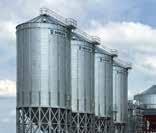
Behlen hoppers are designed to ensure strength, ease of assembly, and trouble free operation.
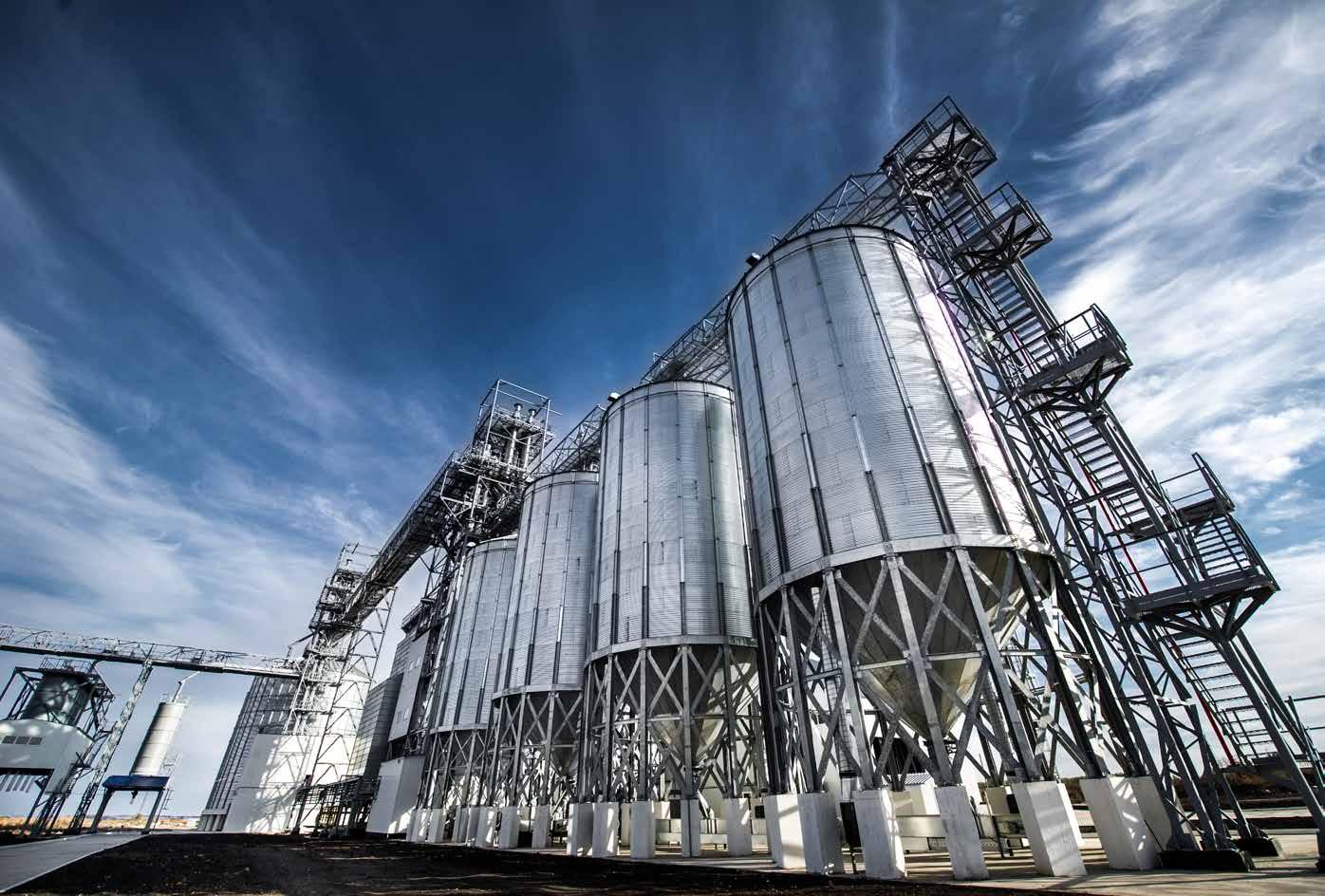
GRAIN STORAGE BUILDINGS
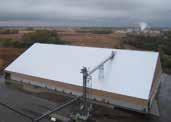

Behlen buildings are highly efficient, low cost grain storage structures, allowing you to store grain up to 20’ against sidewalls.

®


LET BEHLEN HELP WITH YOUR GRAIN STORAGE SOLUTIONS. Visit: behlengrainsystems.com or Call: 800.553.5520 ®
11
Petfood & Aquafeed Extrusion Conference
Bangkok, Thailand
https://mymag.info/slUZ
Petfood & Aquafeed Extrusion Conference (PAEC), held at VICTAM Health and Nutrition Asia 2024, will be on March 11, 2024. With a focus on the extrusion of feeds and the related equipment used, the one-day conference will feature a variety of speakers covering all the key-areas of the industry to give the latest extrusion information. Co-organised between Perendale Publishers Ltd and VIV Worldwide, PAEC will be held at BITEC, room 223 at 10:00am. To be a sponsor and speaker email Dr Mian Riaz at mnriaz@tamu.edu. More information can be found at https://millingandgrain.com/companies/petfood-aquafeed-extrusionconference/.
11

Aquatic Asia
Bangkok, Thailand
https://mymag.info/ZVdT
The Aquatic conference, held at VICTAM Health and Nutrition Asia 2024, will be on March 11, 2024. With the theme being ‘Future World Feed Through Aquaculture’, the conference will focus on the future of aquaculture and feed within the industry. Co-organised between Perendale Publishers Ltd and VIV Worldwide, Aquatic will be held at BITEC, room MR 224 at 10:00am. If you are interested in sponsoring Aquatic and would like a chance to speak then please get in touch with either Severina Proskurnova at severina@vnueurope.com or Tuti Tan at tutit@perendale.co.uk. If you would like to attend the conference then please register your attendance through this link: http://myaqua. info/cPIZ.
12 -14

Health & Nutrition Asia 2024
Bangkok, Thailand
https://vivhealthandnutrition.nl
Health and Nutrition Asia is the niche-event by VIV worldwide focusing on innovation in nutrition, pharmaceutics, and high-tech animal health solutions. On co-location with VICTAM Asia, it is a 3-day event presenting two shows under one roof at the BITEC venue, in Bangkok. VIV has the largest worldwide network in animal health and nutrition and is best-connected in Asia, VICTAM is the world’s largest feed & grain event.

12 -14
VICTAM Asia 2024
Bangkok, Thailand
https://victamasia.com
13

Build My Feedmill
Bangkok, Thailand
https://millingandgrain.com/bmfm24
14

Flour Milling Maximised
Bangkok, Thailand
https://mymag.info/FLMM
Flour Milling Maximised is coming to VICTAM Asia on March 14, 2024. The theme of this seminar will be an update on equipment and technologies being used in modern-day flour milling that improves efficiencies while maximising output. This seminar is open to all who attend Victam Asia 2024, which includes our targeted industry sector of flour millers who wish to learn about the latest technical equipment being used whilst also hearing from leaders in the flour milling sectors from throughout Asia. If you’re interested in a chance to speak at this conference then please get in touch with either Tuti Tan at tutit@ perendale.co.uk or Niamh Cassidy at niamhc@perendale.co.uk.

27 - 29
Livestock Vietnam 2024
Ho Chi Minh City, Vietnam https://livestock-vietnam.com
2024 April


15 - 19
128th Annual IAOM Conference & Expo Salt Lake City, USA www.iaom.org
29 - 3
Agrishow 2024
Ribeirão Preto, Brazil www.agrishow.com.br/en/home.html
2024 May



2-4
IDMA
İstanbul, Türkiye www.idma.com.tr
13 - 15
PIX/AMC
Broadbeach, Australia https://pix.au
22 - 23
Livestock Philippines 2024 Pasay City, Philippines www.livestockphilippines.com
22-24

AgriTechnica Asia Bangkok, Thailand www.agritechnica-asia.com
29 - 31

ILDEX Vietnam
SECC, Ho Chi Minh City, Vietnam www.ildex-vietnam.com
2024 June
5-6
Fenagra 2024 São Paulo, Brazil www.fenagra.com.br
11 - 12
Cereals 2024
Bygrave Woods, England www.cerealsevent.co.uk
11-12
IGC 2024 London, England www.igc.int
11-13
DLG-Feldtage Lipptstadt, Germany www.dlg-feldtage.de
19-21
Livestock Taiwan 2024 Taipei, Taiwan www.livestocktaiwan.com
2024 July

17-19
IndoLivestock 2024 Jakarta, Indonesia https://indolivestock.com











2024 March
INDUSTRY EVENTS 96 | March 2024 - Milling and Grain Extrusion Conference Petfood & Aquafeed 11 March Part of Health and Nutrition Asia BITEC, Bangkok, Thailand 2024 OUR SPONSORS http://myaqua.info/PAEC24 For more information and to register visit: MAXIMISED FLOUR MILLING 14 MARCH CONFERENCE 20 24 BANGKOK, THAILAND Organised by

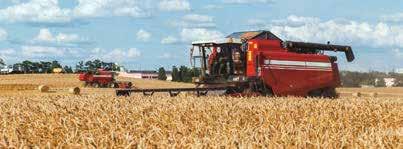
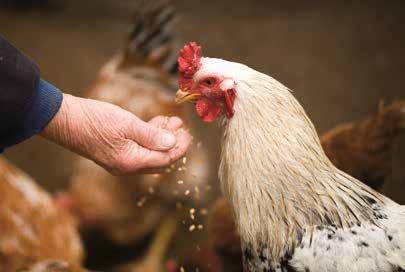

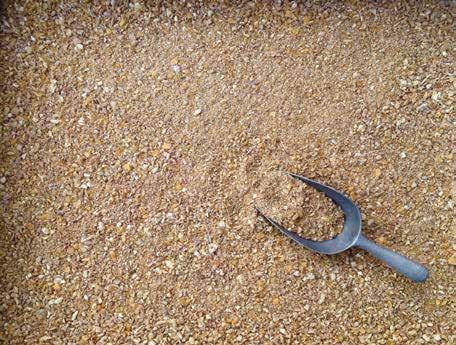
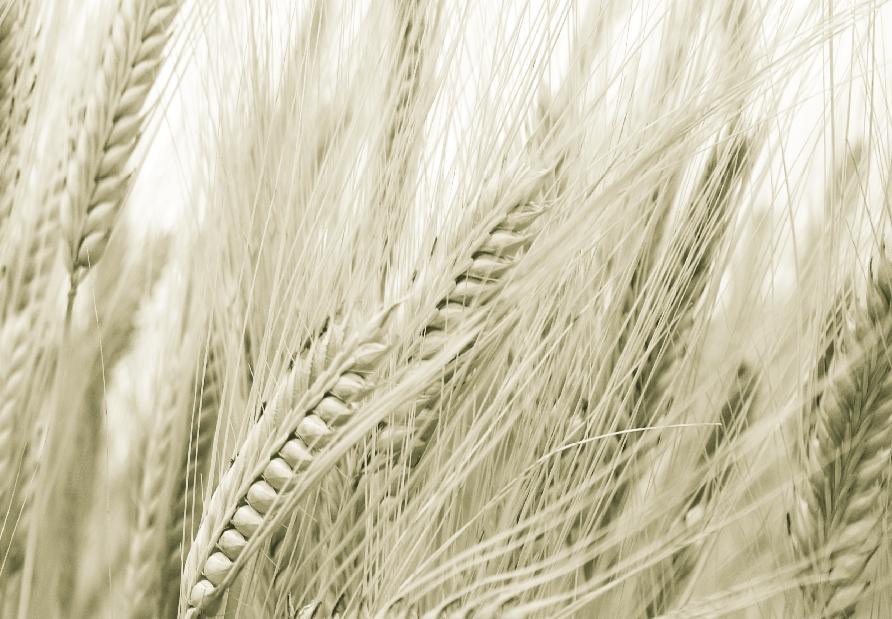

OFFICIAL WEBSITE AN EVENT OF MY EXHIBITION CO., Ltd. 9th TAIWAN SMART AGRIWEEK 11-13 SEPTEMBER 2024 TaiNEX 1 - TAIPEI - TAIWAN Elevate Agri-Feed Excellence: Exhibit Your Solutions in Taiwan Secure your space now! www.taiwanagriweek.com/en 11 - 12 JUNE 2024 IGC GRAINS CONFERENCE 2024 Milling and Grain - March 2024 | 97
SETTING NEW RECORDS
IPPE 2024
by Shannon Parsons, Milling and


The 2024 International Production & Processing Expo (IPPE) was an incredible event this year, setting new records with exhibitors, attendees and more. Held on January 30 –February 1, 2024, at the Georgia World Congress Centre in Atlanta, Georgia, USA, the three-day B2B show had staggering figures, proving the trade shows rightful place as number one event in America.



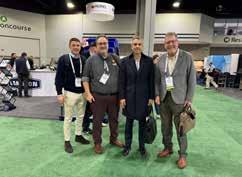
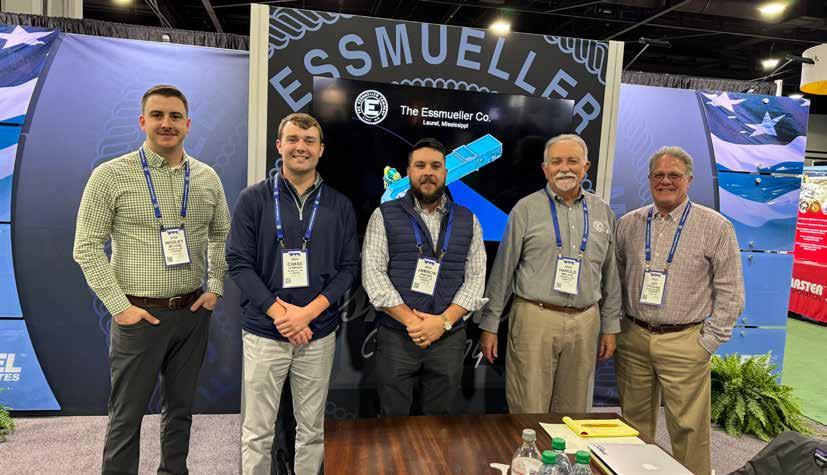
INDUSTRY EVENTS
Jaime Balaguer and David Balaguer, Balaguer Rolls with Milling and Grain team
Luis Avalos and Jon Rux, Tapco
Grain, UK
Roger Gilbert with Aidan Connoly
98 | March 2024 - Milling and Grain
Wesley John, Chase O Brian, Jamison Anding, Harold Muck and Jay Perkins, Esmueller
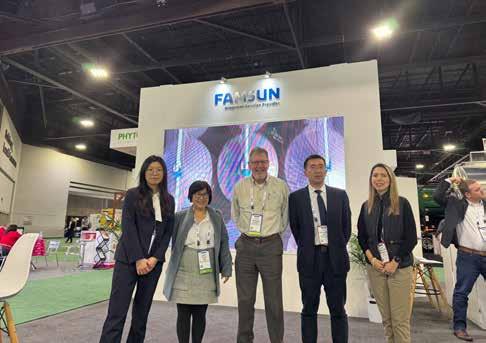
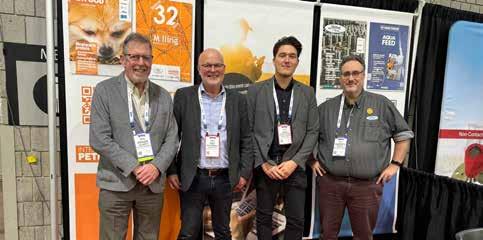
Attendees
Sponsored by the U.S. Poultry & Egg Association, American Feed Industry Association and the Meat Institute, IPPE is the world’s largest annual feed, meat, egg, and poultry industry event and they proved this with 2 new records. A total of 1432 exhibitors shared the exhibitor space that spanned a total of 620,850 square feet.
They also had a third record with 9063 international visitors from 133 countries out of their 31,353 registered attendees beating their goal of 31,000. In previous years, holding the strongest international presence with 45 percent on the international attendees, but this year Canada overtook with a whooping 14.9 percent out of all registered attendees.
“Our international presence has bumped up a little bit. We’ve been running at 24-25 percent and we’re at 28-29 percent internationals and that’s representatives from 131 countries,” says Nath Morris, President of IPPE, when speaking of the attendees on the final day of the show.
Milling and Grain were also able to meet many of the exhibitors and attendees this years, using IPPE as the networking opportunity it is and creating new and re-establishing old friendships with various companies such as Andritz, Vetagro, Buhler, The Essmueller and more.
Feeding the world is a daily commitment in which technical and practical knowledge must be precise, synchronized, and balanced. It’s a microbiome that requires the right nutrients, information, advise, and high performing solution that are simple for you and your animals.
At Jefo, it’s more than a gut feeling; it’s science, it’s partnership.
We know you . You aim for the You follow the
INDUSTRY EVENTS
Piet Van Bommel and Juul Jenneskens, Dinnissen with Milling and Grain team
Famsun team with Roger and Tuti
jefo.com Milling and Grain - March 2024 | 99
Charity
IPPE, alongside Hawkins Inc and WATT Global Media were also able to donate a total of US$14,500 to the Atlanta Community Food Bank for its ‘Giving Back to Atlanta’ campaign. This is only part of the combined amount however, as a further US$4824 were contributed from the Expo Auctions, US$2160 from B and B Glass Studio/The Glass House and a myriad of IPPE attendees made individual donations totalling US$11,830. Altogether, this year IPPE raised a combined amount of US$33,314, effectively feeding 10,000 meals to families throughout metro Atlanta and North Georgia.
Interviews
Some interesting topics were discussed as well between the Milling and Grain CEO Roger Gilbert and a few important people, one of which was the recently appointed President of IPPE itself, Nath Morris. He explains all the achievements of this year’s IPPE, what the show entails and how it’s continuing to grow.
We were also able to interview Vice Chairman of Famsun, Greg Liu, who shows us the models of their extruders and pellet mills, explaining how they work and what customers could use themselves along with new developments being made focusing on more research on automation and AI.
A final interview to watch is with Simon Kolb, Project & Sales Manager of FrigorTec where Kolb and Gilbert discuss how regarding the FAO, approximately 20 percent of worldwide grain harvest is wasted during storage, improving grain storage quality and more. All of these videos are available to watch on our YouTube account here: https://www. youtube.com/@MillingandGrain
Next time
IPPE 2025 will be held on January 28 – 31, 2025 at its usual Georgia World Congress Centre in Atlanta, Georgia, USA. We hope to attend next year and to see you all there. For more information on the event, please check the website https://www.ippexpo.org
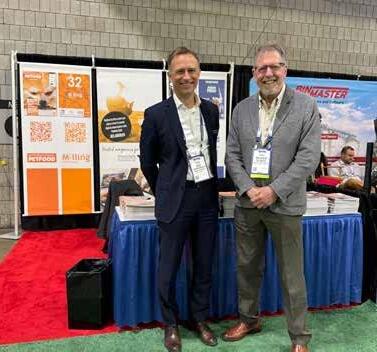
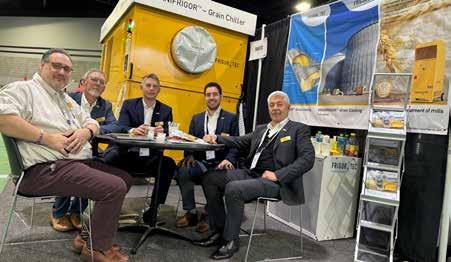
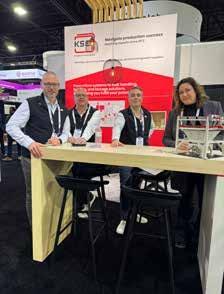
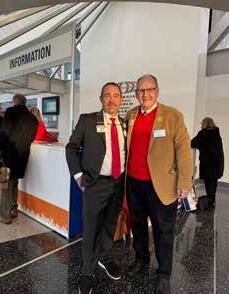

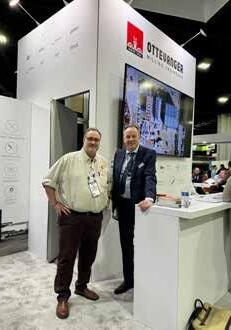
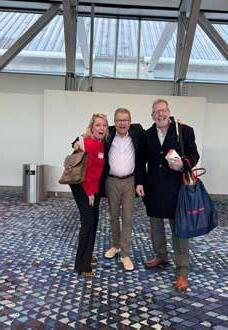
INDUSTRY EVENTS
Joy Morris and Sven Olof with Roger Gilbert
Erik Ottevanger with Darren Paris
Ivo Lansbergen, dsm firmenich with Roger Gilbert
Riccardo Rampino, Benedutta Tugnoli, Federica Dodi, Guilia Giovagnoni, Chad Stahl, Ronald Co, Vetagro
Nath Morris and John Starkey, U.S. Poultry & Egg Association
KSE team with Milling and Grain team
100 | March 2024 - Milling and Grain
FrigorTec team with Darren Parris
What is The Market Place
The Market Place is a collaboration between Milling and Grain magazine and our sister titles, The International Milling Directory and The Global Miller. The Market Place aims to connect the print and the digital world, bringing more content that will be of interest, as well as direct links to the content that you want to see.
Throughout this edition of the magazine you will find QR codes and myMAG links that can link to various content from all three publications.

MAG TV MAG TV is Milling and Grain magazine’s video channel. Featuring content about new products, interviews with industry professionals, industry event content and much more
mymag.info/e/37

Amino acids

Evonik Operations GmbH
+49 6181 59 12437 www.evonik.com/animal-nutrition
PROFILE: mymag.info/GJqQ
Bagging systems




Behn + Bates +49 251 9796 252 www.behnbates.com
PROFILE: mymag.info/PaXw
Bühler AG +41 71 955 11 11 www.buhlergroup.com
PROFILE: mymag.info/dZxH
FAWEMA
+49 2263 716-0 www.fawema.com
PROFILE: mymag.info/bdRz
Maxtex Trading Group Co. Ltd. +66 29488281 www.maxtex.net
PROFILE: mymag.info/TQpr
Statec Binder
+43 3112 38 5800 www.statec-binder.com
PROFILE: mymag.info/Tbyt

Golden Grain Group +86 371 68631308 www.g-grain.com
PROFILE: mymag.info/eCyP
Bakery improvers

Bastak +90 312 395 67 87 www.bastak.com.tr
PROFILE: mymag.info/VDLI
ERKAYA

+90 312 395 2986 www.erkayagida.com.tr
PROFILE: mymag.info/Ojcm
Bulk storage

AGI
www.aggrowth.com
PROFILE: mymag.info/clVX
Behlen
+1 402 564 3111 www.behlengrainsystems.com
PROFILE: mymag.info/hncS
myMAG links myMAG links are shortened hyperlinks that will take you directly to content when typed into a browser







Brock +1 866 658 4191 www.brockgrain.com
PROFILE: mymag.info/GGYu
Bühler AG
+41 71 955 11 11 www.buhlergroup.com
PROFILE: mymag.info/dZxH
Silo Construction & Engineering +32 51723128
www.sce.be
PROFILE: mymag.info/UOay
Symaga
+34 926640475 www.symaga.com
PROFILE: mymag.info/vxbf
The Essmueller
+1 800 325 7175
www.essmueller.com
PROFILE: mymag.info/MdZl
TSC Silos
+31 543 473979 www.tsc-silos.com
PROFILE: mymag.info/HTSY
Van Aarsen International
+31 475 579 444 www.aarsen.com
PROFILE: mymag.info/JUgk
Cereal and pulse conditioning


Bühler AG
+41 71 955 11 11 www.buhlergroup.com
PROFILE: mymag.info/dZxH
Friedrich Electronic
+49 6406 923350
www.friedrich-electronic.de
PROFILE: mymag.info/gbBd
Vibrafloor
+33 3 85 44 06 78 www.vibrafloor.com
PROFILE: mymag.info/cgrU
vibronet-Gräf GmbH & Co.KG

+49 6441 62031 www.vibronet.com
PROFILE: mymag.info/icHn
Colour sorters

Bühler A G
+41 71 955 11 11 www.buhlergroup.com
PROFILE: mymag.info/dZxH



Cimbria Srl
+39 0542 361423
www.cimbria.com
PROFILE: mymag.info/XYRL
Maxtex Trading Group Co. Ltd.
+66 29488281
www.maxtex.net
PROFILE: mymag.info/TQpr
Satake
+81 82 420 8560
www.satake-group.com
PROFILE: mymag.info/Lwtk
Business Services

Bourne Recruitment
+44 161 262 1069
www.bournerecruitment.co.uk
profile: mymag.info/SWzY
Computer software




iGrain
+45 31633900
https://crop-protector.com
PROFILE: mymag.info/FxFP
Inteqnion
+31 543 49 44 66
www.inteqnion.com
PROFILE: mymag.info/ZyIm
KSE
+31 497 383818
www.ksegroup.com
PROFILE: https://mymag.info/fhSV
Van Aarsen International
+31 475 579 444
www.aarsen.com
PROFILE: mymag.info/JUgk
Conveyor Chains

VAV Conveyor Components & Solutions
+31 7140 23701
www.vav-nl.com
PROFILE: mymag.info/aPKR
Coolers & driers


Bühler AG
+41 71 955 11 11
www.buhlergroup.com
PROFILE: mymag.info/dZxH
Consergra s.l
+34 938 772207
www.consergra.com
PROFILE: mymag.info/GPtm

FrigorTec GmbH
+49 7520 91482-0
www.frigortec.com
PROFILE: mymag.info/fRiz
FAMSUN


+86 85828888
www.famsungroup.com
PROFILE: mymag.info/opGO
iGrain
+45 31633900
https://crop-protector.com
PROFILE: mymag.info/FxFP
Eye-Grain ApS (iGRAIN®) provides a range of solutions for post-harvest protection of stored grain. Marketed under iGRAIN®, CROP-PROTECTOR® and TOXISCRUB® brands.
The iGRAIN® product portfolio also includes advanced automated aeration control for any climatic zone. The iGRAIN Smart App provides the user with handy information about the grain condition and predicts the longest safe storage time in each silo. All iGRAIN® solutions integrates with other platforms and PLC/ SCADA solutions.
iGRAIN® systems can be tailored to suit the needs from small-scale farmers as well as large-scale industrial storages of grain, beans, cocoa, coffee as well as flour, feed, and oil mills.


Wenger Manufacturing
+1 785-284-2133
www.wenger.com
PROFILE: mymag.info/QiGw
Van Aarsen International
+31 475 579 444
www.aarsen.com
PROFILE: mymag.info/JUgk
Yemmak
+90 266 7338363
www.yemmak.com
PROFILE: mymag.info/QBbm
Yemtar Feed Mill Machines

+90 266 733 8550
www.yemtar.com
PROFILE: mymag.info/aPXh
Dosing





Bühler AG
+41 71 955 11 11
www.buhlergroup.com
PROFILE: mymag.info/dZxH
Friedrich Electronic
+49 6406 923350
www.friedrich-electronic.de
PROFILE: mymag.info/gbBd
KSE
+31 497 383818 www.ksegroup.com
PROFILE: https://mymag.info/fhSV
Tietjen Verfahrenstechnik GmbH
+49 4106 6333 0 www.tietjen-original.com
PROFILE: mymag.info/uyGD
Van Aarsen International
+31 475 579 444 www.aarsen.com
PROFILE: mymag.info/JUgk
Elevator buckets


VAV Conveyor Components & Solutions
+31 7140 23701 www.vav-nl.com
PROFILE: mymag.info/aPKR
Yemtar Feed Mill Machines

+90 266 733 8550 www.yemtar.com
PROFILE: mymag.info/aPXh
Elevator & conveyor components







Enzymes


4B Braime
+44 113 246 1800 www.go4b.com
PROFILE: mymag.info/HiwC
Bühler AG
+41 71 955 11 11 www.buhlergroup.com
PROFILE: mymag.info/dZxH
Henry Simon
+44 161 804 2800 www.henrysimonmilling.com
PROFILE: mymag.info/tYpO
Tapco Inc
+1 314 739 9191 www.tapcoinc.com
PROFILE: mymag.info/ogOz
Yemtar Feed Mill Machines
+90 266 733 8550
www.yemtar.com
PROFILE: mymag.info/aPXh
Van Aarsen International
+31 475 579 444
www.aarsen.com
PROFILE: mymag.info/JUgk
VAV Conveyor Components & Solutions
+31 7140 23701
www.vav-nl.com
PROFILE: mymag.info/aPKR
Bastak
+90 312 395 67 87
www.bastak.com.tr
PROFILE: mymag.info/qHkV
ERKAYA
+90 312 395 2986
www.erkayagida.com.tr
PROFILE: mymag.info/Ojcm
PLP
+39 05 23 89 16 29
www.plp-systems.com
PROFILE: mymag.info/PGWg
Extruders


4B Braime
+44 113 246 1800 www.go4b.com
PROFILE: mymag.info/HiwC
CESCO
+49 7531 122860 https://cesco-group.com
PROFILE: mymag.info/VkQk
Tapco Inc

+1 314 739 9191 www.tapcoinc.com
PROFILE: mymag.info/ogOz

Almex
+31 575 572666
www.almex.nl
PROFILE: mymag.info/IMiV
Bühler AG
+41 71 955 11 11 www.buhlergroup.com
PROFILE: mymag.info/dZxH
Wenger Manufacturing
+1 785-284-2133 www.wenger.com
PROFILE: mymag.info/QiGw
Yemmak
+90 266 7338363
www.yemmak.com
PROFILE: mymag.info/QBbm
Yemtar Feed Mill Machines

+90 266 733 8550 www.yemtar.com
PROFILE: mymag.info/aPXh
Feed nutrition

Anpario
+44 1909 537 380
www.anpario.com
PROFILE: mymag.info/wAMV
dsm-firmenich
+44 1452 306129
www.dsm.com/anh
PROFILE: mymag.info/ksCT


Feed milling


Evonik Operations GmbH
+49 6181 59 12437
www.evonik.com/animal-nutrition
PROFILE: mymag.info/GJqQ
Romer Labs Division Holding GmbH
+43 2782 803 0
www.romerlabs.com
PROFILE: mymag.info/PnKH
ALAPALA Feed Tech
+90 212 465 60 40
https://alapala.com
/en/feed-mill-machinery
PROFILE: mymag.info/CbJl
Bühler AG
+41 71 955 11 11
www.buhlergroup.com
PROFILE: mymag.info/dZxH
CESCO
+49 7531 122860
https://cesco-group.com
PROFILE: mymag.info/VkQk
milltech

+90 332 5021300
www.milltech.com.tr
PROFILE: mymag.info/hfOy
Dinnissen BV
+31 77 467 3555
www.dinnissen.nl
PROFILE: mymag.info/pUDK
FAMSUN

+86 85828888
www.famsungroup.com
PROFILE: mymag.info/opGO
Ottevanger Milling Engineers

+31 79 593 22 21
www.ottevanger.com
PROFILE: mymag.info/mlzK
PLP
+39 05 23 89 16 29
www.plp-systems.com
PROFILE: mymag.info/PGWg
Sangati Berga

+55 11 2663 9990
www.sangatiberga.com.br
PROFILE: mymag.info/dxie
Tietjen Verfahrenstechnik GmbH




+49 4106 6333 0
www.tietjen-original.com
PROFILE: mymag.info/uyGD
Van Aarsen International
+31 475 579 444
www.aarsen.com
PROFILE: mymag.info/JUgk
VAV Conveyor Components & Solutions
+31 7140 23701
www.vav-nl.com
PROFILE: mymag.info/aPKR
vibronet-Gräf GmbH & Co.KG
+49 6441 62031
www.vibronet.com
PROFILE: mymag.info/icHn
103 | March 2024 - Milling and Grain


Yemmak
+90 266 7338363 www.yemmak.com
PROFILE: mymag.info/QBbm
Zheng Chang +86 2164184200 www.zhengchang.com
PROFILE: mymag.info/wecN
Golden Grain Group +86 371 68631308 www.g-grain.com
PROFILE: mymag.info/eCyP
Feed Mill Automation




ALAPALA Feed Tech
+90 212 465 60 40 https://alapala.com/en/ feed-mill-machinery
PROFILE: mymag.info/qmHZ
Bühler AG +41 71 955 11 11 www.buhlergroup.com
PROFILE: mymag.info/dZxH
KSE
+31 497 383818 www.ksegroup.com
PROFILE: https://mymag.info/fhSV
Van Aarsen International +31 475 579 444 www.aarsen.com
PROFILE: mymag.info/JUgk
Flour Improvers

Bastak +90 312 395 67 87 www.bastak.com.tr
PROFILE: mymag.info/VDLI
Flour milling



Henry Simon +44 161 804 2800 www.henrysimonmilling.com
PROFILE: mymag.info/tYpO
Maxtex Trading Group Co. Ltd. +66 29488281 www.maxtex.net
PROFILE: mymag.info/TQpr milltech +90 332 5021300 www.milltech.com.tr
PROFILE: mymag.info/hfOy
Grain handling systems
Behlen
+1 402 564 3111 www.behlengrainsystems.com
PROFILE: mymag.info/hncS
Brock

+1 866 658 4191 www.brockgrain.com
PROFILE: mymag.info/GGYu





iGrain +45 31633900
https://crop-protector.com
PROFILE: mymag.info/FxFP
Sangati Berga +55 11 2663 9990 www.sangatiberga.com.br
PROFILE: mymag.info/dxie
Symaga
+34 91 726 43 04 www.symaga.com
PROFILE: mymag.info/vxbf
Tapco Inc
+1 314 739 9191 www.tapcoinc.com
PROFILE: mymag.info/ogOz
Tapco was conceived in the early 1970s by Paul D Taylor, President and Ted W Beaty, Retired, to fill a void in the elevator bucket industry. At that time, there was only one manufacturer of non-metallic buckets in the USA all the other buckets were made from fabricated steel. With the inherent problems of steel buckets and the limited range of the existing polyethylene brand, the time was right for Tapco.
The company has been in its own 92,500 square foot facility for over 50 years. This has allowed them to utilise injection moulding ‘in house’ for better control and cost effectiveness. Tapco has nine injection moulding machines ranging from a small 150 tonne to a very large 1000 tonne press. Allowing them to make an entire range of buckets in the most expedient and quality controlled manner.
According to their website, “Tapco stocks the largest inventory of elevator buckets and bolts in the world, with over 1 million buckets and 15 million bolts. We also have the largest inventory of abrasion resistant sheeting, drag flights and hanger bearings in North America”.



The Essmueller
+1 800 325 7175
www.essmueller.com
PROFILE: mymag.info/MdZl
Yemtar Feed Mill Machines
+90 266 733 8550
www.yemtar.com
PROFILE: mymag.info/aPXh
Golden Grain Group
+86 371 68631308
www.g-grain.com
PROFILE: mymag.info/eCyP
Hammermills

Alapala
+90 212 465 60 40 www.alapala.com
PROFILE: mymag.info/CbJl
ALAPALA Feed Tech
+90 212 465 60 40

https://alapala.com/en/ feed-mill-machinery
PROFILE: mymag.info/qmHZ


Tietjen Verfahrenstechnik GmbH
+49 4106 6333 0
www.tietjen-original.com
PROFILE: mymag.info/uyGD
Van Aarsen International
+31 475 579 444
www.aarsen.com
PROFILE: mymag.info/JUgk
Yemmak
+90 266 7338363
www.yemmak.com
PROFILE: mymag.info/QBbm
Yemtar Feed Mill Machines


+90 266 733 8550
www.yemtar.com
PROFILE: mymag.info/aPXh
Zheng Chang
+86 2164184200
www.zhengchang.com/eng
PROFILE: mymag.info/wecN Laboratory equipment
Bastak




+90 312 395 67 87
www.bastak.com.tr
PROFILE: mymag.info/qHkV
Bühler AG
+41 71 955 11 11
www.buhlergroup.com
PROFILE: mymag.info/dZxH
ERKAYA
+90 312 395 2986
www.erkayagida.com.tr
PROFILE: mymag.info/e/596
Tekpro +44 1692 403403
www.tekpro.com
PROFILE: mymag.info/susS
Loading/un-loading equipment


Bühler AG
+41 71 955 11 11
www.buhlergroup.com
PROFILE: mymag.info/dZxH
Dinnissen BV
+31 77 467 3555
www.dinnissen.nl
PROFILE: mymag.info/pUDK
KSE
+31 497 383818
www.ksegroup.com
PROFILE: https://mymag.info/fhSV
Neuero Industrietechnik
+49 5422 95030
www.neuero.de
PROFILE: mymag.info/nHrj
Van Aarsen International

+31 475 579 444
www.aarsen.com
PROFILE: mymag.info/JUgk


Bühler AG +41 71 955 11 11 www.buhlergroup.com
PROFILE: mymag.info/dZxH
CESCO
+49 7531 122860 https://cesco-group.com
PROFILE: mymag.info/VkQk
Cimbria A/S +45 96 17 90 00 www.cimbria.com
PROFILE: mymag.info/XYRL
Henry Simon +44 161 804 2800 www.henrysimonmilling.com
PROFILE: mymag.info/tYpO

Bühler AG
+41 71 955 11 11 www.buhlergroup.com
PROFILE: mymag.info/dZxH
Dinnissen BV
+31 77 467 3555 www.dinnissen.nl
PROFILE: mymag.info/pUDK
Ottevanger Milling Engineers

+31 79 593 22 21 www.ottevanger.com
PROFILE:mymag.info/mlzK
Selis

+90 222 236 12 33 www.selis.com.tr
PROFILE: mymag.info/dfff

Tanis Machine Technologies
+90 (342) 337 22 22 www.tanis.com.tr/en
PROFILE: mymag.info/VIED

Vigan Engineering
+32 67 89 50 41
www.vigan.com
PROFILE: mymag.info/wFAz
Mill design & installation
Alapala

+90 212 465 60 40
www.alapala.com
PROFILE: mymag.info/CbJl
Alapros


+39 049 099 0 383
www.alapros.com
PROFILE: mymag.info/vOLu
Bühler AG
+41 71 955 11 11
www.buhlergroup.com
PROFILE: mymag.info/dZxH
104 | March 2024 - Milling and Grain














Henry Simon
+44 161 804 2800 www.henrysimonmilling.com
PROFILE: mymag.info/tYpO
IMAS - Milleral +90 332 2390141 www.milleral.com
PROFILE: mymag.info/VcHy
Ocrim +39 0372 4011 www.ocrim.com
PROFILE: mymag.info/ckSh
Ottevanger Milling Engineers
+31 79 593 22 21 www.ottevanger.com
PROFILE: mymag.info/mlzK
Sangati Berga +55 11 2663 9990 www.sangatiberga.com.br
PROFILE: mymag.info/dxie
Satake
+81 82 420 8560 www.satake-group.com
PROFILE: mymag.info/Lwtk
Selis +90 222 236 12 33 www.selis.com.tr
PROFILE: mymag.info/dfff
Silo Construction & Engineering +32 51723128 www.sce.be
PROFILE: mymag.info/UOay
Tanis Machine Technologies +90 (342) 337 22 22 www.tanis.com.tr/en
PROFILE: mymag.info/VIED
Tietjen Verfahrenstechnik GmbH +49 4106 6333 0 www.tietjen-original.com
PROFILE: mymag.info/uyGD
Van Aarsen International +31 475 579 444 www.aarsen.com
PROFILE: mymag.info/JUgk
Yemtar Feed Mill Machines +90 266 733 8550 www.yemtar.com
PROFILE: mymag.info/aPXh
Hydronix +44 1483 468900 www.hydronix.com
PROFILE: mymag.info/xkjs
Golden Grain Group +86 371 68631308 www.g-grain.com
PROFILE: mymag.info/eCyP
Moisture measurement

Bastak +90 312 395 67 87 www.bastak.com.tr
PROFILE: mymag.info/VDLI





Packaging



Vibrafloor
+33 3 85 44 06 78 www.vibrafloor.com
PROFILE: mymag.info/cgrU
Vibronet-Gräf GmbH & Co.KG +49 6441 62031 www.vibronet.com
PROFILE: mymag.info/icHn
Bühler AG
+41 71 955 11 11 www.buhlergroup.com
PROFILE: mymag.info/dZxH
Dinnissen BV +31 77 467 3555 www.dinnissen.nl
PROFILE: mymag.info/pUDK
FAWEMA
+49 22 63 716 0
www.fawema.com
PROFILE: mymag.info/bdRz
Maxtex Trading Group Co. Ltd. +66 29488281
www.maxtex.net
PROFILE: mymag.info/TQpr
Statec Binder
+43 3112 38 5800
www.statec-binder.com
PROFILE: mymag.info/Tbyt
Yemmak
+90 266 7338363
www.yemmak.com
PROFILE: mymag.info/QBbm
Yemtar Feed Mill Machines

+90 266 733 8550
www.yemtar.com
PROFILE: mymag.info/aPXh
Plant




Yemmak
+90 266 7338363
www.yemmak.com
PROFILE: mymag.info/QBbm
Bühler AG
+41 71 955 11 11
www.buhlergroup.com
PROFILE: mymag.info/dZxH
Sangati Berga
+55 11 2663 9990
www.sangatiberga.com.br
PROFILE: mymag.info/dxie
Yemtar Feed Mill Machines
+90 266 733 8550
www.yemtar.com
PROFILE: mymag.info/aPXh
Zheng Chang
+86 2164184200
www.zhengchang.com/eng
PROFILE: mymag.info/wecN
Process control



Bühler AG
+41 71 955 11 11
www.buhlergroup.com
PROFILE: mymag.info/dZxH
Henry Simon
+44 161 804 2800
www.henrysimonmilling.com
PROFILE: mymag.info/tYpO
iGrain +45 31633900
https://crop-protector.com
PROFILE: mymag.info/FxFP
Inteqnion
Palletisers


Behn + Bates
+49 251 9796 252 www.behnbates.com
PROFILE: mymag.info/PaXw
Bühler AG
+41 71 955 11 11 www.buhlergroup.com
PROFILE: mymag.info/dZxH
Statec Binder
+43 3112 38 5800
www.statec-binder.com
PROFILE: mymag.info/Tbyt

Pellet press

Bühler AG
+41 71 955 11 11 www.buhlergroup.com
PROFILE: mymag.info/dZxH
Friedrich Electronic
+49 6406 923350 www.friedrich-electronic.de
PROFILE: mymag.info/gbBd
Hydronix
+44 1483 468900 www.hydronix.com
PROFILE: mymag.info/xkjs
iGrain
+45 31633900
https://crop-protector.com
PROFILE: mymag.info/FxFP




Golden Grain Group
+86 371 68631308 www.g-grain.com
PROFILE: mymag.info/eCyP
ALAPALA Feed Tech
+90 212 465 60 40 https://alapala.com/en/ feed-mill-machinery
PROFILE: mymag.info/qmHZ
Bühler AG
+41 71 955 11 11 www.buhlergroup.com
PROFILE: mymag.info/dZxH
Pelleting Technology Netherlands (PTN)
+3 73 54 984 72 www.ptn.nl
PROFILE: mymag.info/gvcv
Van Aarsen International
+31 475 579 444 www.aarsen.com
PROFILE: mymag.info/JUgk
Yemtar Feed Mill Machines
+90 266 733 8550 www.yemtar.com
PROFILE: mymag.info/aPXh




+31 543 49 44 66
www.inteqnion.com
PROFILE: mymag.info/ZyIm
KSE
+31 497 383818
www.ksegroup.com
PROFILE: https://mymag.info/fhSV
Ottevanger Milling Engineers
+31 79 593 22 21
www.ottevanger.com
PROFILE: mymag.info/mlzK
Van Aarsen International
+31 475 579 444
www.aarsen.com
PROFILE: mymag.info/JUgk
Yemmak
+90 266 7338363
www.yemmak.com
PROFILE: mymag.info/QBbm
Rolls


Bühler AG
+41 71 955 11 11
www.buhlergroup.com
PROFILE: mymag.info/dZxH
Fundiciones Balaguer, S.A. +34 965564075
www.balaguer-rolls.com
PROFILE: mymag.info/osew
Statec Binder
+43 3112 38 5800
www.statec-binder.com
PROFILE: mymag.info/Tbyt
Yenar

Roller mills

+90 332 2391073
www.yenar.com.tr
PROFILE: mymag.info/MwJo
Alapala
+90 212 465 60 40
www.alapala.com
PROFILE: mymag.info/CbJl










Alapros
+39 049 099 0 383 www.alapros.com
PROFILE: mymag.info/vOLu
Bühler AG
+41 71 955 11 11 www.buhlergroup.com
PROFILE: mymag.info/dZxH
milltech
+90 332 5021300 www.milltech.com.tr
PROFILE: mymag.info/hfOy
IMAS - Milleral
+90 332 2390141 www.milleral.com
PROFILE: mymag.info/VcHy
Henry Simon
+44 161 804 2800 www.henrysimonmilling.com
PROFILE: mymag.info/tYpO
Ocrim
+39 0372 4011 www.ocrim.com
PROFILE: mymag.info/ckSh
Pelleting Technology Netherlands (PTN)
+3 73 54 984 72 www.ptn.nl
PROFILE: mymag.info/gvcv
Pingle
+86 311 88268111 www.plflourmill.com
PROFILE: mymag.info/Khfi
Sangati Berga
+55 11 2663 9990 www.sangatiberga.com.br
PROFILE: mymag.info/dxie
Selis
+90 222 236 12 33 www.selis.com.tr
PROFILE: mymag.info/dfff
Since 1964, Selis has been one of the most dynamic and innovative companies in the industry of manufacturing machines and equipment for the flour and semolina industry. As well as manufacturing equipment, the undertake turnkey plants in every capacity as well as modernisation of the existing plants.
High quality equipment is manufactured under the assurance of ISO 9001/2000 quality system, experienced technical and management staff and the equipment pool which is endowed with the latest technology CNC machines.
In terms of equipment sold or plants realised, customer satisfaction is always paramount, by acting as a solution partner for their customers. High quality after sales service is given with experienced technical personnel.


Roll fluting


Reclaim system
Vibrafloor
+33 3 85 44 06 78
www.vibrafloor.com
PROFILE: mymag.info/cgrU
Scalling

Bühler AG
+41 71 955 11 11
www.buhlergroup.com
PROFILE: mymag.info/dZxH Sifters



Alapros
+39 049 099 0 383 www.alapros.com
PROFILE: mymag.info/vOLu Brock
+1 866 658 4191 www.brockgrain.com
PROFILE: mymag.info/GGYu
Bühler AG
+41 71 955 11 11 www.buhlergroup.com
PROFILE: mymag.info/dZxH
Dinnissen BV
+31 77 467 3555 www.dinnissen.nl
PROFILE: mymag.info/pUDK Filip GmbH

+49 5241 29330 www.filip-gmbh.com
PROFILE: mymag.info/eKdq
Gazel





Yemtar Feed Mill Machines
+90 266 733 8550
www.yemtar.com
PROFILE: mymag.info/aPXh
Golden Grain Group
+86 371 68631308
www.g-grain.com
PROFILE: mymag.info/eCyP
Bühler AG
+41 71 955 11 11
www.buhlergroup.com
PROFILE: mymag.info/dZxH
Fundiciones Balaguer, S.A.
+34 965564075
www.balaguer-rolls.com
PROFILE: mymag.info/osew
Yenar

+90 332 2391073
www.yenar.com.tr
PROFILE: mymag.info/MwJo

Silos

+90 364 2549630 www.gazelmakina.com
PROFILE: mymag.info/XPuP
Henry Simon
+44 161 804 2800 www.henrysimonmilling.com
PROFILE: mymag.info/tYpO
Sefar AG
+41 898 57 00 www.sefar.com
PROFILE: mymag.info/qzxb
Selis
+90 222 236 12 33 www.selis.com.tr
PROFILE: mymag.info/dfff
Tanis Machine Technologies
+90 (342) 337 22 22 www.tanis.com.tr/en
PROFILE: mymag.info/VIED Golden Grain Group
+86 371 68631308 www.g-grain.com
PROFILE: mymag.info/eCyP
AGI www.aggrowth.com
PROFILE: mymag.info/clVX
Altinbiliek
+90 222 236 13 99 www.abms.com.tr
PROFILE: mymag.info/Kcbx
Behlen
+1 402 564 3111 www.behlengrainsystems.com
PROFILE: mymag.info/hncS




A/S Cimbria
+45 9617 9000
www.cimbria.com
PROFILE: mymag.info/XYRL
CSI
+90 322 394 54 60
www.cukurovasilo.com
PROFILE: mymag.info/IdLT
The Essmueller +1 800 325 7175
www.essmueller.com
PROFILE: mymag.info/MdZl
iGrain
+45 31633900
https://crop-protector.com
PROFILE: mymag.info/FxFP




MySilo
+90 382 266 22 45 www.mysilo.com
PROFILE: mymag.info/Hmwu
Obial
+90 382 2662120
www.obial.com.tr
PROFILE: mymag.info/qYti
Silo Construction & Engineering +32 51723128
www.sce.be
PROFILE: mymag.info/UOay
Symaga
+34 91 726 43 04 www.symaga.com
PROFILE: mymag.info/vxbf


Top Silo Constructions (TSC) +31 543 473 979 www.tsc-silos.com
PROFILE: mymag.info/HTSY
Van Aarsen International +31 475 579 444
www.aarsen.com
PROFILE: mymag.info/JUgk
Temperature monitoring


Bühler AG
+41 71 955 11 11 www.buhlergroup.com
PROFILE: mymag.info/dZxH
CESCO
+49 7531 122860
https://cesco-group.com
PROFILE: mymag.info/VkQk
Bühler AG
+41 71 955 11 11
www.buhlergroup.com
PROFILE: mymag.info/dZxH
106 | March 2024 - Milling and Grain

iGrain
+45 31633900
https://crop-protector.com
PROFILE: mymag.info/FxFP
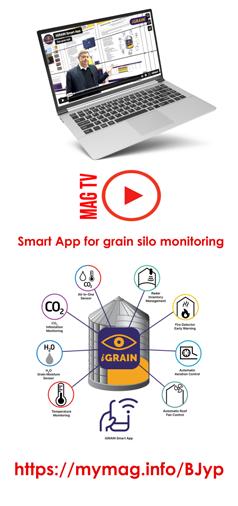


Training







Inteqnion
+31 543 49 44 66
www.inteqnion.com
PROFILE: mymag.info/ZyIm
vibronet-Gräf GmbH & Co.KG
+49 6441 62031
www.vibronet.com
PROFILE: mymag.info/icHn
Bühler AG
+41 71 955 11 11
www.buhlergroup.com
PROFILE: mymag.info/dZxH
IAOM
+1 913 338 3377
www.iaom.info
PROFILE: mymag.info/pZZa
IFF
+495307 92220
www.iff-braunschweig.de
PROFILE: mymag.info/XbmE
Kansas State University
+1 785 532 6161
www.grains.k-state.edu
PROFILE: mymag.info/xsza
OMS
+441242 267700
www.onlinemillingschool.com
PROFILE: https://millingandgrain. com/oDQm
Ocrim
+39 0372 4011
www.ocrim.com
PROFILE: mymag.info/ckSh
UK Flour Millers
+44 2074 932521
www.ukflourmillers.org
PROFILE: mymag.info/xWwB
Vibrators
Vibrafloor
+33 3 85 44 06 78
www.vibrafloor.com
PROFILE: mymag.info/cgrU
Weighing equipment



Bühler AG
+41 71 955 11 11
www.buhlergroup.com
PROFILE: mymag.info/dZxH
Friedrich Electronic
+49 6406 923350
www.friedrich-electronic.de
PROFILE: mymag.info/gbBd
KSE
+31 497 383818
www.ksegroup.com
PROFILE: https://mymag.info/fhSV
PLP
+39 05 23 89 16 29
www.plp-systems.com
PROFILE: mymag.info/PGWg
Van Aarsen International

+31 475 579 444
www.aarsen.com
PROFILE: mymag.info/JUgk
Vibrafloor +33 3 85 44 06 78
www.vibrafloor.com
PROFILE: mymag.info/cgrU

vibronet-Gräf GmbH & Co.KG +49 6441 62031
www.vibronet.com
PROFILE: mymag.info/icHn
Yeast products

Leiber GmbH
+49 5461 93030
www.leibergmbh.de
PROFILE: mymag.info/wpdz



Simply visit: https://store.magstand.com/millingandgrain Once signed up the magazine can be accessed on our app (available from your favourite app store) - or on desktops at https://flickread.com/edition/Milling-and-Grain Use your new account ot log in and access our entire digital back catalouge Use the Promo Code ATLANTA24 This offer entitles you to a 12 month digital subscription to Milling and Grain magazine on our app and desktop versions. This offer is on a first come first served basis Would you like a complimentary digital subscription to Milling and Grain magazine? YOUR GLOBAL PARTNER
the interview
Mildred Cookson is the Founding Trustee of the Mills Archive Trust. Mildred became Britain’s only woman traditional watermiller with responsibility for the medieval mill at Mapledurham on the River Thames. She retired as a miller in 2010.
By then she had formed the Mills Archive Trust, the World”s first specialist archive collecting and caring for records of milling history from around the world. The Archive, now with 235 collections holding more than three million records, has been recognised by the UK authorities as a National Centre of Excellence. Mildred has a particular interest in traditional millwrighting and in the development of the modern milling industry from the middle of the 19th century. She is the lead trustee for the archive in both these areas.
Mildred has a monthly column in Milling and Grain magazine on the Mills Archive Trust, the column features information about national mills and their histories as well as delightful images which the Mills Archive Trust gather and then restore.
Your journey into becoming Britain’s only female traditional watermiller is incredibly unique. What initially drew you to this profession, and how did your responsibilities at Mapledurham shape your passion for milling history?
My love of windmills came from painting and drawing them, visiting them where I lived in Lancashire and seeing how unique each one was. I also learnt from a local engineer at Marsh Mill, Thornton, the various skills I would later put into practice. When I moved to Reading, on one of my many 40mile visits to draw Lacey Green windmill I met the millwright, who invited me to help him repair the mill back to working order.
He introduced me to Mapledurham watermill much closer to where I lived. It was a beautiful mill with wooden machinery and with records dating back to Domesday. I ran and maintained the mill, waterwheel, and machinery, turning two pairs of stones for flour and occasionally animal food. During my 30 years there, I grew more and more interested in the past and how the mill had changed with progress.
I have diaries of my time at the mill, these cover the grain, breakdowns, weather from snow to flooding. All adding to the history. Now I try and persuade other millers to keep a logbook for future generations, so the next miller can look back and see the trials and tribulations and how we addressed them.
The formation of the Mills Archive Trust stands as a monumental achievement. Could you share the inspiration behind establishing this trust and the challenges you faced in its inception?
By 2000 it was clear that local record offices had limited interest in specialist collections such as the one I had built. A were also worrying about the future of their work. My husband, Ron, decided after talking it over with few other researchers that a milling archive was seriously needed if were to save these records. We set it up in 2002 working from home, then gradually took over a room at Watlington House in Reading.
At first mill enthusiasts were sceptical, thinking we would only last a few years, but the first few years showed us that there was a genuine need for saving research, technical drawings, original documents, and photographs both from the past and present. Now we occupy seven rooms and have some 300 collections containing 5 million records, from some of the country’s most important mill people.
With over five million records, the Mills Archive is a treasure trove of milling history. What are some significant milestones or discoveries within this collection that stand out to you personally?
As we look back in our 21st anniversary year, we are proud that we proved the sceptics wrong and glad our determination to work to the highest standards has paid off. In 2016, as well as assembling the largest library devoted to our specialism in the world, we were recognised as a nationally accredited specialist repository for mills and milling - an amazing accolade and a tribute to a lot of hard work behind the scenes.
Personally, this came home to me when our status encouraged the Science Museum to pass to our care the collection assembled by Rex Wailes, the 20th century’s most eminent mill expert. With Perendale’s support we have been able to do the collection justice.
Our value to the modern milling industry has been confirmed by the Millers’ Mutual Association and the recent deposit of the UK Flour Millers (nabim) archive of almost 150 years. Paper, verbal, or digital records of modern mills are an important part of our heritage and will be lost if we do not take steps to save them. This requires industry support; there must be many more records within companies that face an uncertain future.
Your interest spans from traditional millwrighting to the modern milling industry. How have you witnessed this industry evolve, and what are some key transformations or innovations that have left a lasting impact on milling practices?
I am privileged to have a foot in both camps. I recently secured traditional millwrighting’s place on the RED LIST of endangered crafts in the UK today and I have been a judge for Perendale for GRAPAS. This has led me to study in detail all new machinery from competitors coming along with new ideas for making roller mill technology more efficient and carbon friendly.
The most dramatic transformation I have witnessed is in the role of renewable energy. Until just over 200 years ago all mills were powered in that way. We have now worked our way through coal and oil, steam, and gas to look again at renewables. Large mills are driving energy efficiency to save both costs and the planet. As we move to feed more of the world, we need to look at siting mills nearer to undernourished communities and consider a return to wind and waterpower.
108 | March 2024 - Milling and Grain
Mildred Cookson, Founding Trustee, Mills Archive Trust, UK
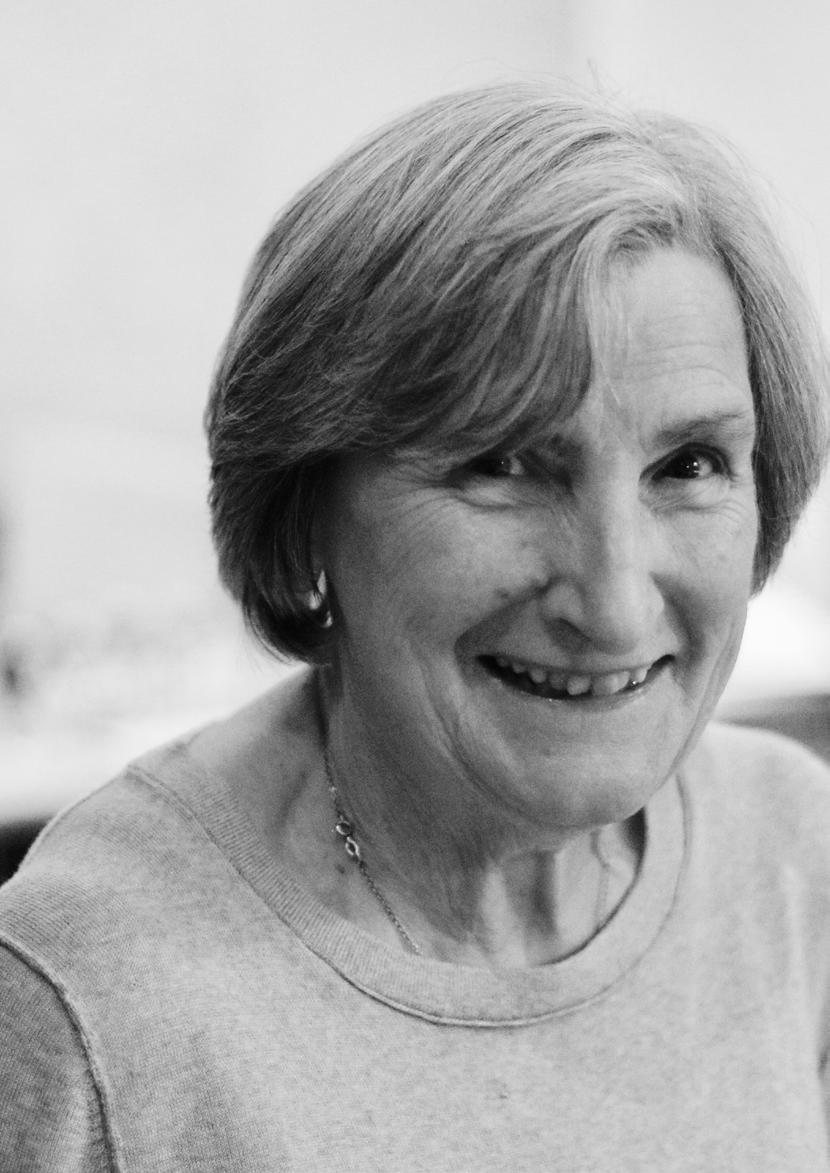
As the lead trustee for the archive’s focus on traditional millwrighting and modern milling, what initiatives or projects are you currently spearheading or envisioning to further preserve and promote these aspects of milling history?
As an educational charity, we envision three themes to promote the role of milling in the 21st century. These are feeding the world, better technology for a better planet and the danger of losing altogether vanishing craft skills. To educate and inform people around the world on these topics we need companies and individuals to give us material and examples of progress, we need their support to research and publish the results and broadcast the messages of hope that are buried in our records.
Your monthly column in Milling and Grain magazine sheds light on national mills’ histories and features restored images from the Mills Archive Trust. How do you select the stories to feature, and what do you hope readers take away from these historical narratives?
My main message when I started eight years ago was that milling history did not stop when millstones were replaced by rollers. Some of the mills I describe are still milling today and have the same family owners and companies while others were taken over by larger milling firms. Their history plays an important part but also their machinery, installed by Millwright and Engineering firms of the time, constantly improving their machines, and bringing them up to date.
In a digital age, when information can be easily lost by the flick of a switch, it is vital we recognise that today’s events are tomorrow’s history, and we all have a role to play in preserving and spreading the word about our rich heritage.
PEOPLE THE INDUSTRY FACES



MiAlgae appointments new Commercial Director
MiAlgae, an exciting Edinburgh-based company that grows algae using by-products from the local whisky industry to make a high-quality Omega-3 product, has announced the role as they build new revenue streams and promote business growth.
Chris joins MiAlgae from French company Agronutris, who specialise in the rearing and transforming of insects into sustainable proteins and fats for animal nutrition, where he held the role of Director of Business Development.
Chris has a long history in aquaculture having worked in various commercial roles in the Pan Fish Group from 1992 to 2005, including Sales and Marketing Director for Pan Fish Scotland, and then moved to a global marketing role with MSD Animal Health Aquaculture.
Founder and Managing Director of MiAlgae, Douglas Martin commented “We are extremely excited to welcome Chris to the team. He has the experience and talent we need to take MiAlgae to the next phase of its growth”.
Kentish farmer wins Milling Wheat Yield & Quality Award
Richard Budd of Stevens Farm Hawkhurst Ltd won the UK Flour Millers sponsored gold Milling Wheat Yield & Quality Award at this year’s Yield Enhancement Network (YEN) conference in Peterborough.
The Milling Wheat Yield & Quality Award recognises the farmer who achieves high yields alongside excellent grain, flour and baking quality.
Additional inputs, such as nitrogen fertiliser, and attention to detail are needed to consistently meet milling wheat quality criteria. This, coupled with a reputation for lower yields, has meant there has traditionally been a reluctance from some farmers to grow milling wheat.
UK Flour Millers sponsors the Milling Wheat Yield & Quality Award to celebrate farmers success in growing high yielding quality milling wheat that meets quality specifications and delivers good baking quality.
Ten entries’ samples were selected as finalists in the completion for analysis at the Allied Technical Centre in Maidenhead. After cleaning and small-scale milling, the flour was tested for dough quality and then test baked using a standard industry recipe.
Richard’s winning entry, which had a yield of 11.9 tonnes/hectare, was found to have strong protein quality. This produced a very good baked loaf with large volume and resilient, fine, and white breadcrumb. With yields this high, a single hectare (two and a half football pitches) would produce enough wheat for 15,400 loaves of bread.
Commenting on the competition results, UK Flour Millers’ head of technical and regulatory affairs, Joe Brennan, said, “Richard’s wheat combined high yields with great baking quality. It was the standout winner.” He added, “Richard’s win was no accident, he took the bronze award last year amid fierce competition, so it’s clear he’s got an approach that consistently delivers both yield and quality.”
Ivan Goh returning to USW
Ivan Goh has returned to US Wheat Associates (USW) as biscuit/bakery and noodle technologist in the South and Southeast Asia market. Goh, who held the position from 2018 to 2022, has extensive experience in flour milling, bakery technical service and wheat food ingredients. He will work closely with USW staff, leading USW training courses throughout the region.
USW Vice President for South and Southeast Asia Joe Sowers said Goh will take on the additional responsibility of running courses at the UFM Baking and Cooking School in Bangkok, Thailand.
“Ivan has remarkable technical abilities and is very familiar with the training programs U.S. Wheat Associates conducts,” Sowers said. “He understands the wheat foods industry in South and Southeast Asia, having experience with USW and private industry throughout the region. He is also familiar with the other markets USW works in, having collaborated with staff in our Manila, Seoul, Taipei, Beijing, Casablanca, and Latin American offices. USW’s technical specialists are more effective thanks to their global perspective. They share their skills and expertise with each other across all parts of the world. Ivan has the tools and experience to demonstrate the quality benefits of using U.S. wheat to industry partners.”

110 | March 2024 - Milling and Grain

With a yearly processing volume exceeding 2.6 billion metric tons of cereals and grains and more than 5,000 companies actively pursuing science-based emission reduction goals, the milling industry is well-positioned to drive decarbonization efforts and diminish the environmental footprint associated with consumer products.
Bühler’s environmental impact services offer companies the unique capability to combine sustainability & business goals. By combining carbon quantifications with on-site inspections, companies can understand how to reduce operational costs (up to 280,000 EUR savings per year with example cases) and their carbon footprint at the same.
Interested to know more about your footprint?
Visit us at the European Flour Millers’ Congress Munich, Germany
Date: June 6-8, 2024
Contact us at: milling@buhlergroup.com www.buhlergroup.com


We simplify your sustainability journey.
Innovations for a better world.















 Roger Gilbert
Roger Gilbert





































































 Drott crude oil engine driving Tattersall’s Midget Mill at Bristol Show
Drott crude oil engine driving Tattersall’s Midget Mill at Bristol Show


 Blaker’s endorsement for Tattersall
Blaker’s endorsement for Tattersall




 Tattersall’s catalogue
Tattersall’s catalogue


 by Dr Mahmoud Riyad, Secretary-General, Egyptian Milling Association, Egypt
by Dr Mahmoud Riyad, Secretary-General, Egyptian Milling Association, Egypt






































































































 Figure 5: Example reduction of the flour footprint
Figure 4: Flour as the main ingredient in a downstream product
Figure 5: Example reduction of the flour footprint
Figure 4: Flour as the main ingredient in a downstream product





















 Figure 5: Example reduction of the flour footprint
Figure 6: Importance of data-based decisions
Figure 5: Example reduction of the flour footprint
Figure 6: Importance of data-based decisions






















































 Warehouse in Jundai
Burning to fuel the plant
Yeast fermentation section of the plant
Warehouse in Jundai
Burning to fuel the plant
Yeast fermentation section of the plant






 ICC’s laboratories, testing the yeast
ICC’s laboratories, testing the yeast







































 by John Buckley
by John Buckley





























































































